Govt ‘fails fairness test’ on HWEN
Neal Wallace NEWS He Waka Eke Noa
THE government’s response to the primary sector’s He Waka Eke Noa proposal fails to meet the partnership’s fairness test, according to the group’s programme director.
Kelly Forster said of particular concern is the government’s rejection of He Waka Eke Noa’s (HWEN) proposed involvement in setting the emissions price, its priorities in how the price is set and the tightening in the classes of vegetation recognised in sequestering carbon.
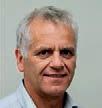
“We don’t think it has met the sector’s fairness test,” Forster said.
“What the sector put forward we felt was a good balance.
“This shifts the balance away from what the sector thinks is fair.”
Forster said it was always understood that government ministers would have the final say on emissions pricing, but the sector wants to have input as part of an advisory or oversight board.
The concern is that entities such as the Climate Change Commission (CCC) will take a purely economic and emissions approach to achieve their targets, a concern reinforced by a comment in the government’s response to HWEN.
Forster said the government’s
list of factors to be considered in setting an emissions price prioritises meeting reduction targets ahead of any socioeconomic impact.
“That is very concerning. It is not acceptable,” she said.
There was also concern at the accuracy of modelling used by the government and the CCC to support claims that methane emissions can be reduced by 10% through on-farm efficiency alone.
What the sector put forward we felt was a good balance. This shifts the balance away from what the sector thinks is fair.
Kelly Forster He Waka Eke Noa
“It neglects that not all farmers can dial up their farm system to reach that point.”
Equally unacceptable are forecasts that sheep and beef farm revenue could fall 20% and dairy 5% as a result of the policy.
While there will be a cost to reducing emissions, Forster said, there need to be checks and balances.
The narrowing of what vegetation is classified as sequestering is another concern.
The government said
HWEN has farmers upset over offsets

Nick France, pictured here with daughters Blaise, 14, and Violet, 10, and neighbouring farmer Harley Davies, right, says his Mid Canterbury farm has an array of plantings that under the proposed HWEN regulations is worth nothing now or for future generations farming the land.
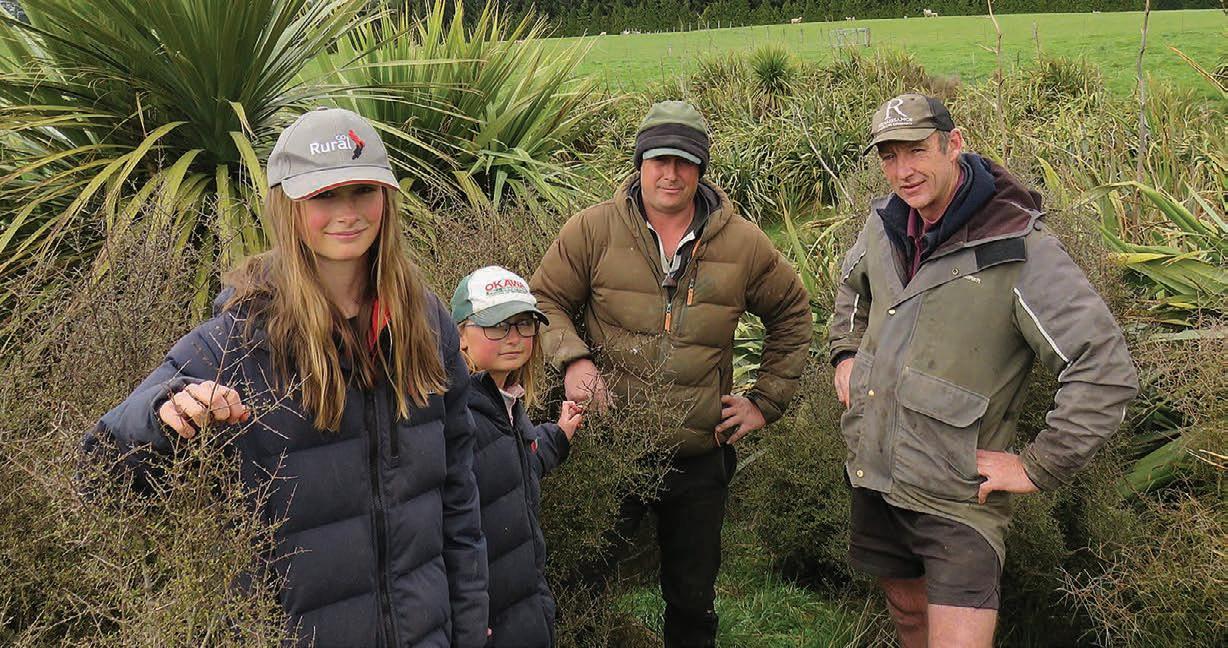
NEWS 7
Agriculture does not just need to tell the story better, it needs to be better, summit hears.
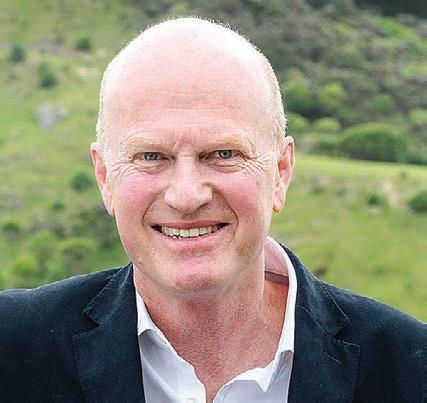

17
Simmentals sell well in Opawa
PGW regional livestock manager Joe Higgins says the 5th annual Opawa Simmental stud was bigger than any Temuka sale yarding these days.
MARKETS 12
Impatience with central government coloured provincial polls, say newly elected mayors.
20
HWEN pricing structure is reasonable, fits well with the economics of environmental policy.
Kellogg equips today’s leaders for tomorrow’s challenges. Fast track your career progression with one of the most respected rural leadership programmes available. To find out more or to apply today, visit ruralleaders.co.nz Applications for Kellogg Lincoln January 2023, close 30 October and Kellogg Lincoln June, closes 16 April 2023. 1
Photo: Annette Scott
NEWS
POLITICS
OPINION 29 Vol 20 No 40, October 17, 2022 View online at farmersweekly.co.nz $4.95 Incl GST No dearth of animal health products 22
Continued page 6













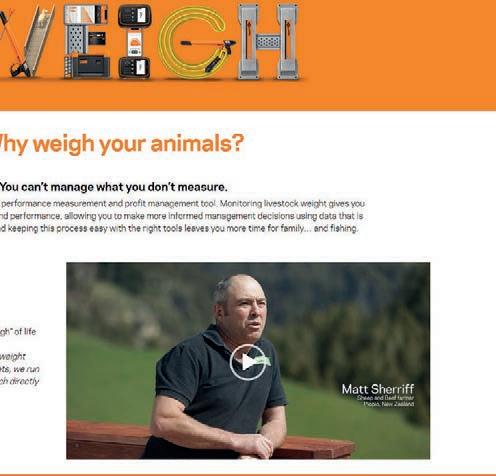





2
























3
EDITORIAL
Bryan Gibson | 06 323 1519
Managing Editor
bryan.gibson@agrihq.co.nz
Claire Robertson
Sub-Editor
claire.robertson@agrihq.co.nz
Neal Wallace | 03 474 9240
Journalist
neal.wallace@agrihq.co.nz
Gerald Piddock | 027 486 8346
Journalist
gerald.piddock@agrihq.co.nz
Annette Scott | 021 908 400
Journalist annette.scott@agrihq.co.nz
Hugh Stringleman | 09 432 8594
Journalist hugh.stringleman@agrihq.co.nz
Richard Rennie | 027 475 4256
Journalist richard.rennie@agrihq.co.nz
Nigel Stirling | 021 136 5570

Journalist nigel.g.stirling@gmail.com
PRODUCTION
Lana Kieselbach | 027 739 4295 production@agrihq.co.nz
ADVERTISING MATERIAL
Supply to: adcopy@agrihq.co.nz
SALES CONTACTS
Andy Whitson | 027 626 2269
Sales & Marketing Manager andy.whitson@agrihq.co.nz
Steve McLaren | 027 205 1456
Auckland/Northland Partnership Manager steve.mclaren@agrihq.co.nz
Jody Anderson | 027 474 6094
Waikato/Bay of Plenty Partnership Manager jody.anderson@agrihq.co.nz
Donna Hirst | 027 474 6095
Lower North Island/International Partnership Manager donna.hirst@agrihq.co.nz
Grant Marshall | 027 887 5568
South Island Partnership Manager grant.marshall@agrihq.co.nz
Debbie Brown | 06 323 0765 Marketplace Partnership Manager classifieds@agrihq.co.nz
Grant Marshall | 027 887 5568
Real Estate Partnership Manager realestate@agrihq.co.nz
Andrea Mansfield | 027 602 4925 National Livestock Manager livestock@agrihq.co.nz
PUBLISHERS
Dean and Cushla Williamson
Phone: 0800 85 25 80 dean.williamson@agrihq.co.nz cushla.williamson@agrihq.co.nz
Farmers Weekly is Published by AgriHQ

PO Box 529, Feilding 4740, New Zealand

Phone: 0800 85 25 80 Website: www.farmersweekly.co.nz
ISSN 2463-6002 (Print)
ISSN 2463-6010 (Online)

Content

News in brief
Pāmu positive
Pāmu called its financial performance for the June 2022 year “very pleasing” given the economic and environmental difficulties the sector had to deal with. Pāmu benefited from high milk prices and sees “continued buoyancy” in global markets, executives said. Pāmu reported earnings before interest, tax, depreciation, amortisation and revaluations of $75 million, up 23% on the previous year.
Farming starter kit
Federated Farmers and the Ministry of Social Development have announced another round of support for the “Get Kiwis on Farm” project, which has helped 605 people get jobs in farming.
MSD Industry Partnerships provides $323,000 of funding for 100 starter kits to get the right gear in the hands of wannabe farm workers, and supports recruitment and pastoral care.
Heartland holds firm

Heartland Group Holdings, the owner of Heartland Bank, has issued guidance to the market reaffirming its expected net profit of $109 million to $114m for the year ending June 30, 2023, excluding any impacts of fair value changes on equity investments held.
Heartland gave this guidance when it reported its results in August, but took a one-off gain in the financial year ended June 30, 2022.
EVs go country
Vehicle manufacturer LDV and smart charger manufacturer Evnex have teamed up to ensure businesses can charge commercial electronic vehicles when and where they want.
Because LDV’s customers work in different conditions – from farms to building sites and more – they tested Evnex’s chargers in a variety of environments to ensure they stand up to rough conditions.
SustaiNability: The right choice for the environment and your ROI

SustaiN contains the nitrogen stabiliser
If

AGROTAIN® which halves the amount of nitrogen lost as ammonia, compared to urea, keeping the N right where it should be, ready for uptake by the pasture or crop.
you’re looking for a better return on your investment, better ongoing productivity and a nitrogen solution that’s proven better for the environment, SustaiN is always the right nitrogen choice. ballance.co.nz | 0800 222 090 4 New Zealand’s most trusted source of agricultural news and information
SUBSCRIPTIONS 0800 85 25 80 subs@agrihq.co.nz PRINTER Printed by Stuff Ltd Delivered by Reach Media Ltd AdvertiseGet in touch TAILORED GENES: The science of gene editing has moved on in recent years and so should the debate about its role in New Zealand agriculture and conservation, Climate Change Minister James Shaw told the Oceania 2035 summit. STORY P16 News . . . . . . . . . . . . . 1-26 Ag&Ed . . . . . . . . . . . . . 27 Opinion . . . . . . . . . 28-31 People . . . . . . . . . . . . . 32 Technology . . . . . . . . . 33 Real Estate . . . . . . 34-54 Marketplace . . . . . . . . 55 Livestock . . . . . . . . 56-57 Markets . . . . . . . . . 58-63 Weather . . . . . . . . . . . . 64
NZ in hot seat on China Pacific trade bid
the start of the pandemic. NZ’s top trade official, Vangelis Vitalis, has also been visiting CPTPP counterparts in recent weeks.
NEW ZEALAND could face a “delicate diplomatic dance” next year when it takes a key role overseeing China’s application to join a major Pacific Rim trade deal, according to a lobbyist for some of NZ’s biggest exporters.
The 11 countries of the Comprehensive and Progressive TransPacific Partnership (CPTPP) are expected to rubber-stamp the United Kingdom’s application to join the agreement later this year or early next year.
With the UK’s application out of the way, China’s bid for membership is likely to come under scrutiny just as NZ takes over from Singapore as the chair of the CPTPP in 2023.
Trade Minister Damien O’Connor travelled to Singapore last week for the first face-to-face meeting of CPTPP ministers since
China’s bid for membership poses many more complications than the inaugural application to join by the UK to join the CPTPP
These include doubts about its ability to live up to the trade rules set out in the original agreement signed in 2016, including those relating to digital trade and disciplines around state-owned enterprises, which could cause problems for Chinese companies.
Strategic rivalries with foundation members Australia, Japan and Canada loom as additional potential roadblocks to China’s application succeeding.
Further complicating the picture is an application by Taiwan to join the CPTPP. Any move to accept it as a member in its own right would be sure to antagonise China, which regards Taiwan as part of its own territory and not as an independent state.
Taiwan’s application to join the CPTPP was received just days after China’s in September 2021. Both are likely to be decided at about the same time.

Former trade negotiator Charles Finny said Singapore enjoyed an easy ride as CPTPP chair in 2022, shepherding through the UK’s application and avoiding the potential fallout that could have come with having to oversee the more controversial applications.
“Singapore has been very cautious as chair and has essentially hidden behind the UK CPTPP accession.
“It has been designated [a] precedent-setting process and this has allowed other applications to be delayed.”
Another former trade negotiator, Stephen Jacobi, now the executive director of the International Business Forum, whose members include export heavyweights Fonterra, Silver Fern Farms and


It is an important opportunity for NZ to show its credentials as a fair and even-handed player.
Stephen Jacobi International Business Forum
Zespri, among others, said there were risks and opportunities arising from NZ playing such a prominent role in shepherding through China’s application.
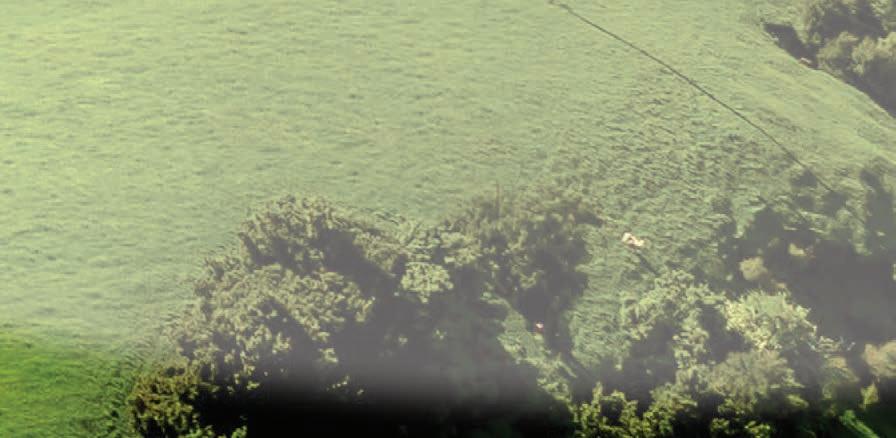



“You could say that being the CPTPP chair really complicates the relationship with China because you might have to disappoint them, but on the other hand you could say this is a great
opportunity because this means NZ is terribly important to China.
“Therefore we have got every opportunity to continue to grow the relationship and avoid trade coercion.”
Jacobi agreed NZ could come under as much pressure from China to frustrate Taiwan’s bid for membership as to accelerate its own bid.
“They may well try to do that and I am sure they will but they will need to get a polite but firm rebuff and they will be careful not to antagonise other members about their own membership.
“This is a delicate diplomatic dance.”
In recent years China has used trade as a sanction against countries it doesn’t see eye to eye
with, restrictions on Australian exports of beef, wine and grain being recent examples.

Asked if exporters are nervous about being caught up in a trade war should negotiations not go in China’s favour, Jacobi said they are supportive of the applications by both China and Taiwan.
“Our members generally ascribe a lot of value to CPTPP and its further expansion.
“It is an important opportunity for NZ to show its credentials as a fair and even-handed player.

“We have got skills that are going to be useful to CPTPP but could it create some awkwardness? Maybe.
“But the overall benefit of advancing CPTPP is the bigger prize,” Jacobi said.
Togethe
r, Cre ati ng the Be st
Soil
and Food on E ar t
h 5 FARMERS WEEKLY – farmersweekly.co.nz – October 17, 2022News 5
Nigel Stirling MARKETS Trade
COMPLICATION: At about the same time as China’s application is decided on, the partnership will have to rule on a similar bid by Taiwan – with the potential to antagonise a major trading partner.
BARGAINING CHIP: The issue presents a challenge for NZ – but also an opportunity, International Business Forum executive director Stephen Jacobi says.
Sector flags ‘immediate concerns’ on HWEN
they get proper recognition for the genuine sequestration happening on their farms.”
Waka Eke Noa
AS NEW ZEALAND
made headlines around the world as the first country to suggest charging farmers for their animals’ GHG emissions, industry groups at home spoke of their “immediate concerns” with the government’s stance.
The government has accepted most of the proposals put forward by the He Waka Eke Noa partnership to price agricultural emissions, but industry groups are concerned about some of the recommendations that have been excluded.

The farm-level, split-gas approach has made the cut, but modifications have been proposed on how sequestration is calculated.
“We need to further analyse these changes carefully, but one area of immediate concern is the proposed changes to sequestration, which is of real importance to sheep and beef farmers,” Beef + Lamb NZ chair Andrew Morrison said.
“We know we have a role to play in addressing climate change and our farmers are among the first to feel the effects of it.
“However, if farmers are to face a price for their agricultural emissions from 2025, it is vital
Meat Industry Association chair Nathan Guy said although the government proposal is better than agriculture entering the emissions trading scheme (ETS), there is room for further improvement.
report, reduce or offset their emissions – a key mechanism that would drive the change that is needed.
“These are material changes that will be of real concern to most farmers, and we will be raising them directly with the government on farmers behalf over the coming weeks,” chair Jim van der Poel said.
“The partnership’s recommendations to government were finely balanced so they would work for all sectors, and we stand behind the whole-farm system approach we and our partners put forward.”
Prime Minister Jacinda Ardern said the changes made in the consultation document were based on advice from the Climate Change Commission.
“Sheep and beef farmers and the meat processing and exporting sector collectively generate $12 billion in income per year for the country and account for more than 92,000 jobs, almost 5% of New Zealand’s full-time workforce. It’s critical we have the right policy settings so our sector can continue to deliver for our farmers, our processors and exporters, rural communities and the country.”
DairyNZ is disappointed that the government has removed the ability for farmers to form collectives to work together to
“This is an important step forward in New Zealand’s transition to a low-emissions future and delivers on our promise to price agriculture emissions from 2025,” Ardern said.
“The proposal aims to give New Zealand farmers control over their farming system, providing the ability to reduce costs through revenue raised from the system being recycled back to farmers, which will fund further research, tools and technology and incentives to reduce emissions.”
Consultation will begin to work through sequestration, the levysetting process and transition
What’s in and what’s out
What’s in
• A farm-level, split-gas system for pricing agricultural emissions.
• If process not ready by 2025, pricing will be at the processor level.
• Methane emission pricing will be set annually or every three years based on advice from the Climate Change Commission.
• Revenue generated through emissions pricing will be reinvested in sector support, R&D and to incentivise on-farm emission reduction.
• The government to decide emission prices.
What’s out
• He Waka Eke Noa recommendation of a maximum methane price of 11c/kg up to 2028.
• Limits to the recognition and reward for on-farm planting and sequestration.
• Removal of ability for farmers to form collectives to report, reduce or o set their emissions.

• Pricing for fertiliser emissions.
• Government’s approving of nal policy delayed until 2023.
assistance from now until November 18.
Deer Industry New Zealand (DINZ) is concerned about the impact of prices on farmers who have no cost-effective way to reduce their emissions of methane and nitrous oxide, Deer Industry NZ chair Mandy Bell said.
She said the largest impact falls upon the most extensive farming systems.
“DINZ will be reinforcing to policy makers what they have already recognised – that the farm


price needs to allow businesses to remain economically viable until practical tools to reduce methane and nitrous oxide emissions from pastoral farming are available.

“We believe it is essential that government and sector invest in developing and bringing new technologies to NZ farmers to help them reduce their gross emissions as soon as possible. If our farmers have practical technology they can use, they will use it. Our farmers are rapid adopters and are innovative.”
Farmers urged to work with industry groups on solutions
Continued from page 1
administration and compliance make it impractical to credit multiple types of vegetation for sequestering carbon, but Forster said the sector offered to work with the government and scientists to find a solution. This has been rejected in the government’s initial response to the HWEN proposals.





Forster said the sector has tried to constructively work with the government, and it successfully kept agriculture out of the Emissions Trading Scheme and averted the imposition of a tax at processor level.
Both had been distinct possibilities.
The HWEN partnership also welcomed the government decision to retain its proposed
split-gas approach and to calculate greenhouse gas emissions at farm level.
“Getting those wins may not look big to those looking from outside, but they were big,” said Forster.
The partnership has been united during negotiations in its support for each sector.
“If something suits dairy, and sheep and beef are not on board,
then it is rejected.”
Forster is optimistic farmers will have new tools to help them reduce emissions, her confidence borne of discussions she has had with scientists and experts.
The government has indicated it is willing to listen as it decides the final shape of the policy, and Forster urged farmers to work with and contribute ideas and views to their sector groups.
Farmers and growers also need to realise this challenge is not going to disappear, she said.
“You can’t simply say no. We have to find a way that is manageable.”
The six-week timeframe for submissions on the government’s response will be tight, but she is confident the primary sector partnership will have a strong case.
Meet the people behind the farm gate
On Farm Story is a celebration of farmers and farming - told in under five minutes.
6 FARMERS WEEKLY – farmersweekly.co.nz – October 17, 2022 News6 Subscribe on YouTube
Staff reporter NEWS He
If farmers are to face a price for their agricultural emissions from 2025, it is vital they get proper recognition for the genuine sequestration happening on their farms.
Andrew Morrison Beef + Lamb NZ
‘There is no balancing of the ledger’ on levy
Richard Rennie & Annette Scott
MASTERTON farmer and Beef + Lamb NZ councillor Paul Crick says there’s a fundamental unfairness in the government’s interpretation of He Waka Eke Noa, one that conflicts with its own policy goals.

“Reading the ‘Fit for a Better World’ policy document, in Damien O’Connor’s foreword he writes how its aim is to build a more productive, sustainable and inclusive food and fibre sector.
That appears a lot throughout the document, ensuring a better future for farmers and growers. How then do we throw that lens over what we heard on HWEN this week?”
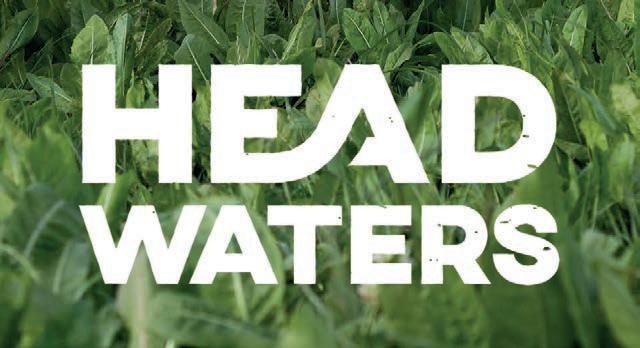
Crick said there is a fundamental unfairness in the removal of the ability to offset methane against farm vegetation, and in ignoring the 1.4 million hectares of woody vegetation already growing on NZ drystock farms that could be applied.
“It seems they are saying on one hand we will take it, and on the other we will take it as well. There is no balancing of the ledger there.”
He urged farmers to take an interest in the HWEN consultation process and submit on it using the resources available.
“We need to bang that drum and bang it loudly.”
He said climate change policy is already creating perverse incentives with unintended consequences, but he remains an optimist by nature.
“Listening to the PM, she seems to have a sense that sheep and beef farmers are outliers in this.
I interpret that as the door being open. She seems invested in this process, and she is for all intents and purposes trying to get the right outcome.”
Ashburton foothills sheep and beef farmers Harley Davies and Nick France said they are bemused as to why the government is “picking on” them when sheep
I would really love a scientist to come up and do a proper assessment of our farm’s tens of thousands of trees in shelterbelts and plantings on our place in every paddock – none of which mean anything because they are not eligible for sequestration.
Nick France Ashburton
and beef farmers alone are not the problem.
The pair co-chair a catchment group taking in 18 farmers who have collaborated and are successfully enhancing a catchment that they said has always been outstanding in its historic stewardship with many planting projects, acknowledgement of significant biodiversity and creation of QEII covenanted areas.
The HWEN regulations will divide and disperse these critical small rural communities and their wealth of knowledge, they said.
“It’s like they [the government] have an ideology they are trying to fit to the rest of the world, it’s just a joke that someone in an office in Wellington thinks we are going to drop 20% in eight years,” France said.
“I would really love a scientist to come up and do a proper assessment of our farm’s tens of thousands of trees in shelterbelts
and plantings on our place in every paddock – none of which mean anything because they are not eligible for sequestration.”
France farms sheep and beef, including a Hereford stud, on 950ha of rolling hill country.
“We have planted wetlands, it’s all biodiversity, we have regenerated plantings, we have harvested and split up flaxes, it’s sustainably grown, it’s all native, including a hillside of native matagouri that we have saved and manage.

“It’s been five years of work, four guys, spraying twice a year.
“We are doing stuff but nothing counts,” said France.
“We are world leading now, we are the most carbon-efficient producing country in the world of high-end protein, so why reduce production for someone else in the world to pick up?
“We need the scientific factual proof and some viable tools to help mitigate our greenhouse gases, not just all this hearsay.”
Davies, who runs a sheep, beef and deer operation on 1190ha nearby, echoed France’s concerns.
“There’s a lot of farmers doing a lot of good stuff on their properties, but it’s not recognised.
“The biggest thing I can see is
this is more politically driven than scientifically driven and until they measure our trees and measure all the sequestration we have got, to me it’s unsubstantiated and very clearly politically driven.
“We need even debate and the science from both sides.
“The other saddest thing to me is we need the future generations but for young sheep and beef farmers coming in the only option is to plant pine trees, that’s the reality, this is the future.
“There is no good in blaming one sector against another. The only way we can move forward is to all stick together on this, it’s a situation of united we stand divided we fall,” Davies said.
All the regulations on farms, from environmental to animal welfare to greenhouse gas, are going to have significant ongoing effects on food production and food security that globally will force consumers to look elsewhere to countries with little to no regulations, the farmers said.
“We want to celebrate success but instead government throws a heap of bureaucracy at it in every way it can and rather than sustainable production being our key focus we are farming to conform to compliance.”

Join
us in supplying the world’s best lamb.
We are an established community of like-minded, innovative data driven farmers who are committed to the future of sheep farming in New Zealand through our Headwaters breeding programme. Our unique value chain connects farmers, chefs, and consumers who enjoy our product, Lumina Lamb, at top restaurants around the world. Headwaters farms are also rewarded for their efforts with a significant premium to enable the success of their farming business for years to come. Find out more www.headwaters.nz or phone Andrew Bendall on 027-299-5597 Headwaters
is a collective of farmers who are passionate about doing things better.
7 FARMERS WEEKLY – farmersweekly.co.nz – October 17, 2022News 7
GET IT RIGHT: Masterton farmer and BLNZ councillor Paul Crick has grave misgivings about the government’s HWEN stance, but he believes the door has been left open to ‘getting the right outcome’.
JUST WRONG: Nick France with his daughters Violet, 10, and Blaise, 14, and Harley Davies. The two farmers co-chair a very successful catchment group in the Ashburton foothills.
NEWS He Waka Eke Noa
Grow



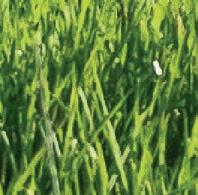


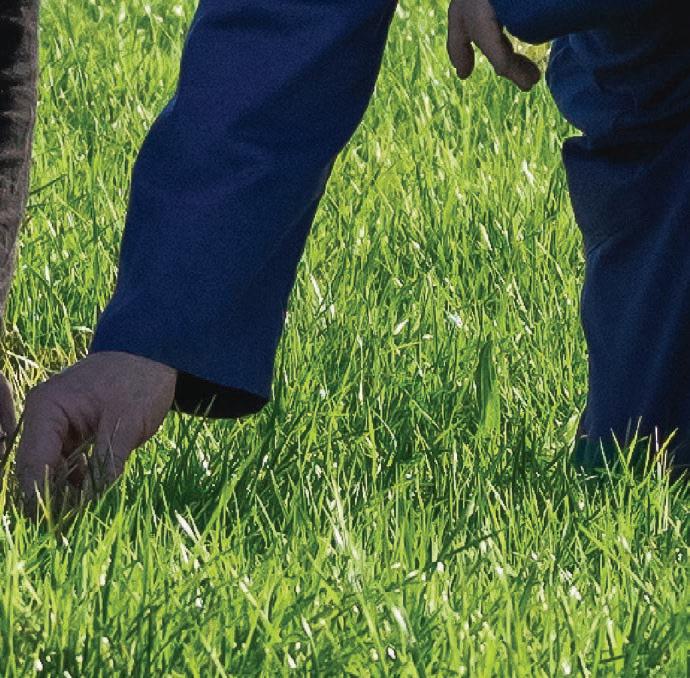


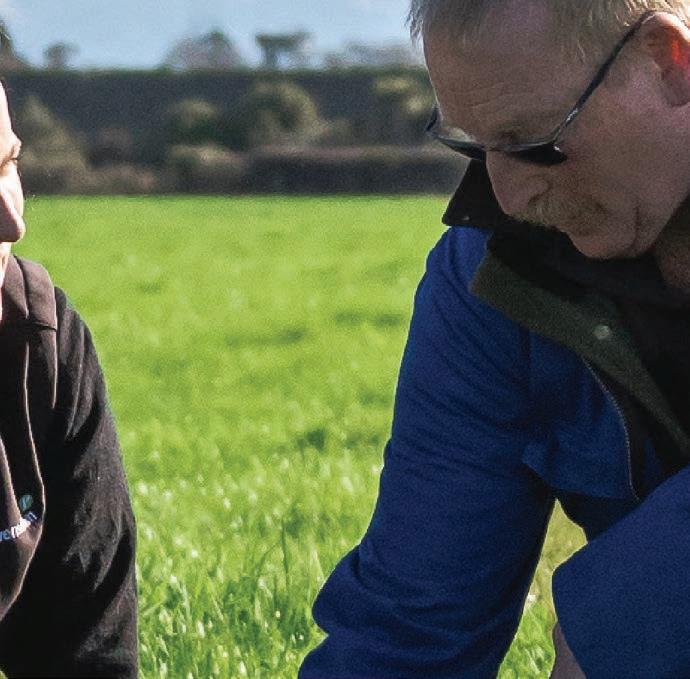



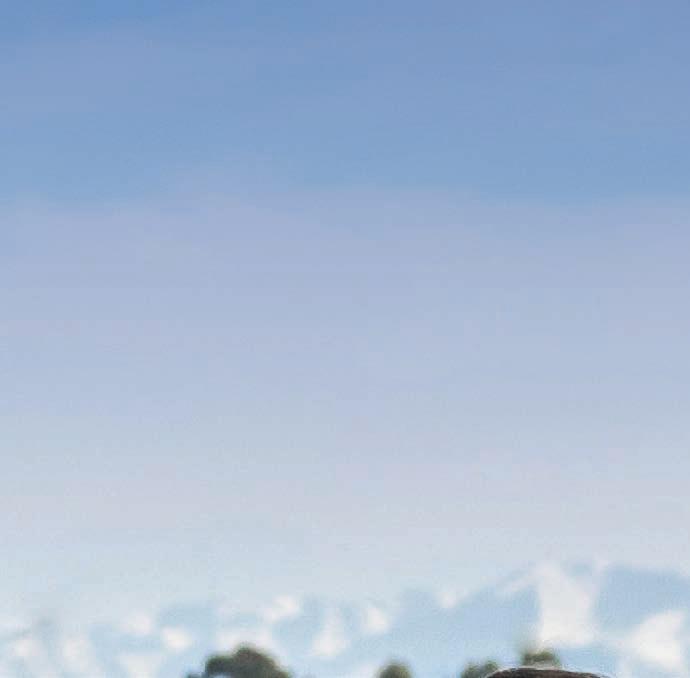
your advantage Smarter farming for a better New Zealand™ You know your farm. We know our nutrients. And we’re driven to help you achieve your productivity and sustainability goals based on best practice soil science, technology, and innovation. Measure. Monitor. Manage. Here’s how we can help you gain ground for spring –rav.link/advantage 0800 100 123 ravensdown.co.nz RAV-17OCT-FW 8
M bovis process enters final stage at lot
Beef practises a high and wellmanaged standard of biosecurity.
DEPOPULATION of Five Star Beef, New Zealand’s largest commercial feedlot, is underway and it will be empty by the end of this year.
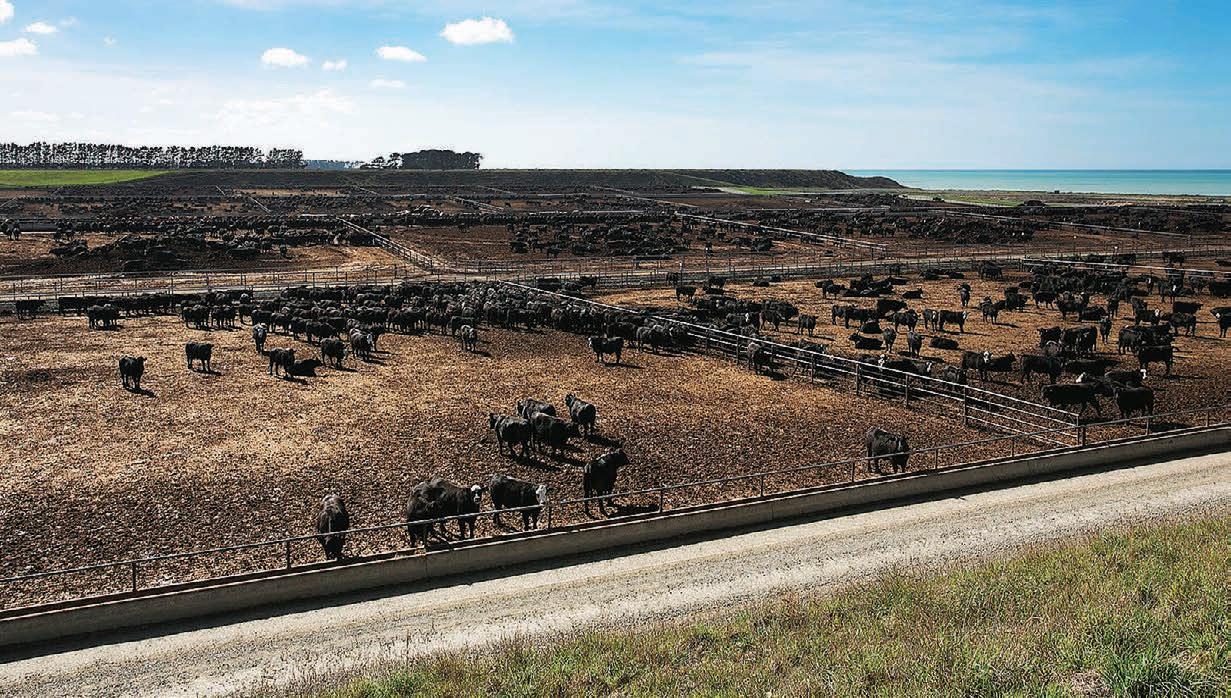
Started in 1989 to finish Angus steers for the Japanese market, Five Star Beef is the single largest supplier of chilled beef exports with up to 20,000 cattle at any one time.
The 100% ANZCO Foods-owned feedlot near Ashburton was found to have Mycoplasma bovis in 2018, the year after the disease was first found in NZ on a farm in South Canterbury.
ANZCO general manager systems, supply and sustainability Grant Bunting said ANZCO Foods has worked closely with the Ministry for Primary Industries (MPI), following all its advice and implementing and complying with MPI’s biosecurity requirements, always knowing that eventually the feedlot would be emptied to clear the disease.
MPI acknowledged that Five Star
The ministry’s M bovis programme director, Simon Andrew, said since becoming an infected property the feedlot operation has continually demonstrated a high level of compliance.

He said MPI and Five Star Beef have worked together and put in place mitigation measures to reduce the likelihood of transmission risk to other farmers. This has involved regular inspections and assessments.
The measures put in place are consistent with Five Star Beef not being considered the source of the infection.
The feedlot has been able to continue operating because all cattle on the feedlot go directly to slaughter, which is what happens to infected cattle from other properties.
MPI made the decision to hold off depopulating Five Star Beef until close to the end of the eradication programme, based on the risk of re-infection at the feedlot.

It has now formally notified ANZCO of the requirement to
FIVE STARS: The ministry’s M bovis programme director, Simon Andrew, said since becoming an infected property the feedlot operation has continually demonstrated a high level of compliance.
depopulate the feedlot in line with the M bovis eradication programme.
The Five Star Beef depopulation started on October 13, with no cattle to be taken in from that date.
The feedlot will be empty by the end of this year. It then goes through the same stand-down and cleaning and disinfecting process as other farms, before starting to repopulate, Andrew said.
Bunting said Five Star Beef has an important role in the community and this had to be considered when developing the depopulation plan.
“Five Star Beef is part of a significant supply chain and the depopulation process will have an impact on the feedlot’s business, its many cattle and feed suppliers, as well as the wider community.”
Five Star Beef is a key part of the local economy, being directly responsible for 300 jobs. Thirty people are employed at the operation and the others are involved in processing the niche
product at nearby ANZCO Foods Canterbury.
Bunting said to try to offset the impact on its farmer suppliers, Five Star Beef intends to continue buying cattle but will be finishing them on grass on contract grazing properties to help with the repopulation process.
Five Star Beef is part of a significant supply chain and the depopulation process will have an impact on the feedlot’s business, its many cattle and feed suppliers, as well as the wider community.
Grant Bunting ANZCO
The operation annually takes up to 40,000 head of cattle from farms all over the country as well as 50,000t of grain and 18,000t of maize from local suppliers.
This accounts for 90% of South Island maize and 8% of NZ’s grain production.

“The feedlot .. will be completely empty of stock from mid-January through until mid-March 2023 to allow for the 60-day stand down,” Andrew said.
As is the case for farmers who have had to cull herds, he said, compensation provisions will be available to ANZCO.
“They can lodge compensation claims just like any other business and we will work this through with ANZCO as with any confirmed infected property.”
Meanwhile MPI is confident there is no elevated risk posed to the progress of the eradication programme following the finding of a new strain of the disease on a Mid Canterbury property.
The property is not connected to the feedlot, nor is it part of the cluster of farms that include two infected properties, identified as at risk and under close programme surveillance in the vicinity of Five Star Beef.
The right people grow everyone’s business. Become a licensee for Get Milking. agricademy.co.nz/licensee Find out about becoming a licensee in your area: Alister Shennan - 027 302 3713 alister@agricademy.co.nz 9 FARMERS WEEKLY – farmersweekly.co.nz – October 17, 2022News 9
Annette Scott NEWS Disease
OUT TO GRASS: ANZCO general manager systems, supply and sustainability Grant Bunting said to help o set the impact on its farmers, Five Star Beef intends to continue buying cattle but will nish them on grass on contract grazing properties.
Full season, full fields for agri shows
Hugh Stringleman NEWS Events

THE prospect of a full agricultural and pastoral show season without restrictions has more than 90 member shows and their volunteers re-energised and excited, Royal Agricultural Society president Rachel Walker says.
“Everyone is very positive, and we are hearing that numbers of entries in various categories and classes are either well up or satisfactory.
“Our members are excited to be back, and their volunteers are keen to get into it.
“Many of our RAS members haven’t had any events for two years and they are thrilled to be back into action.”
Walker said show societies put on events solely for their communities and are now able to offer categories and events to order, whereas covid restrictions had reduced some shows to competitor-only equestrian and/or livestock events.
“During the covid years some volunteers were not comfortable running a section because of their age and vulnerability.
“Now those sections are able to be offered for competition and
displaying rural excellence.”
She expected that smaller district and regional shows would be drawcards for local families who had not attended anything similar for some time.
“For the smaller shows I would be really surprised if communities didn’t get right behind them.
“Shows are the ideal opportunities for people to
congregate and meet their neighbours.”
Trade exhibitors and sponsors have responded to the expectation of events with full timetables and bounce-back numbers of attendees.
The first of the bigger regional shows is the Poverty Bay Show in Gisborne, October 13-15, followed by Hawke’s Bay prior to Labour Weekend, Rangiora over that weekend, Ashburton on October 28 and 29, and Waikato and Wairarapa on the same days.
Ashburton A & P Association president Victor Schikker said about 4000 entries have been received and there is provision for entries on the day for dog trialling, pet lambs and some horse events.
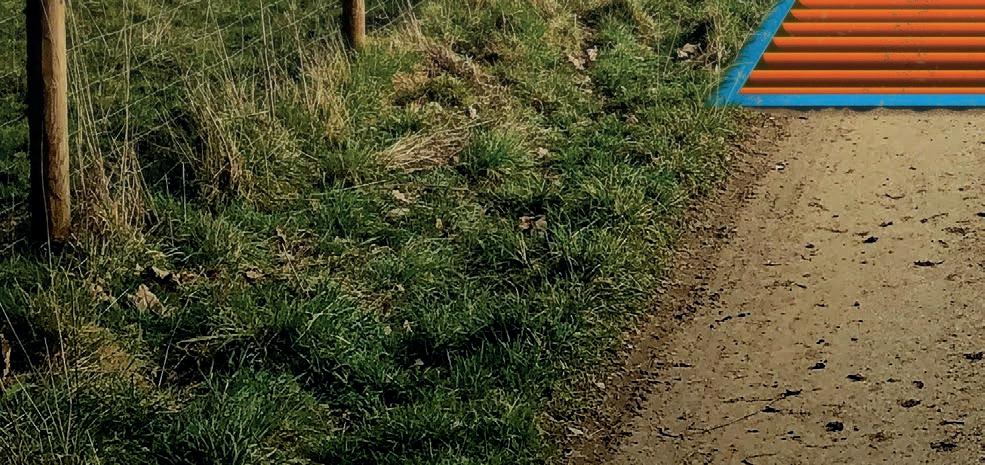

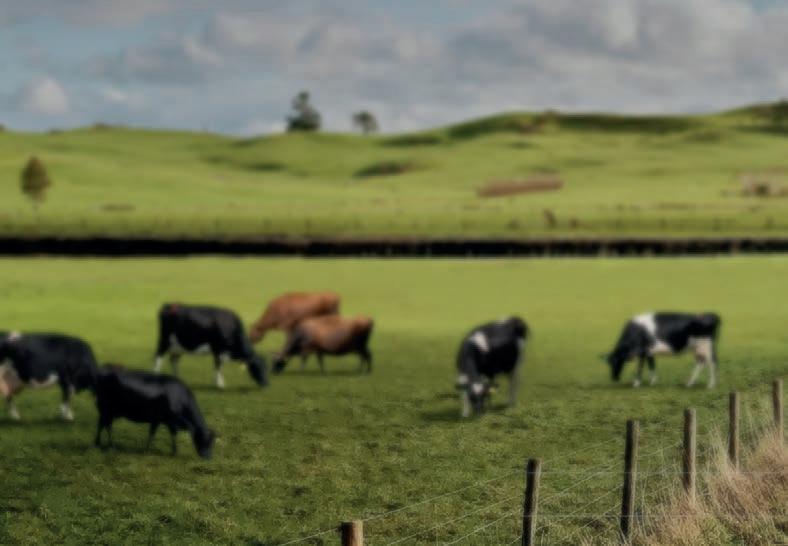
Trade participation is still down on pre-covid levels and he thinks it might take a year or two to build up again.
BVD outbreak

ENTHUSIASM: Royal Agricultural Society president Rachel Walker says more than 90 show associations around the country are planning a season full of events, classes and attractions after two seasons of restrictions.


Confidence is high that community interest and attendance will be very good “because we need to celebrate our farmers and their industries”. Ashburton’s showgrounds are well set up with facilities and, having been leased to the rugby union over winter, the grounds are in excellent condition.
“It has been a cold spring and farm livestock condition is just average, waiting for some heat

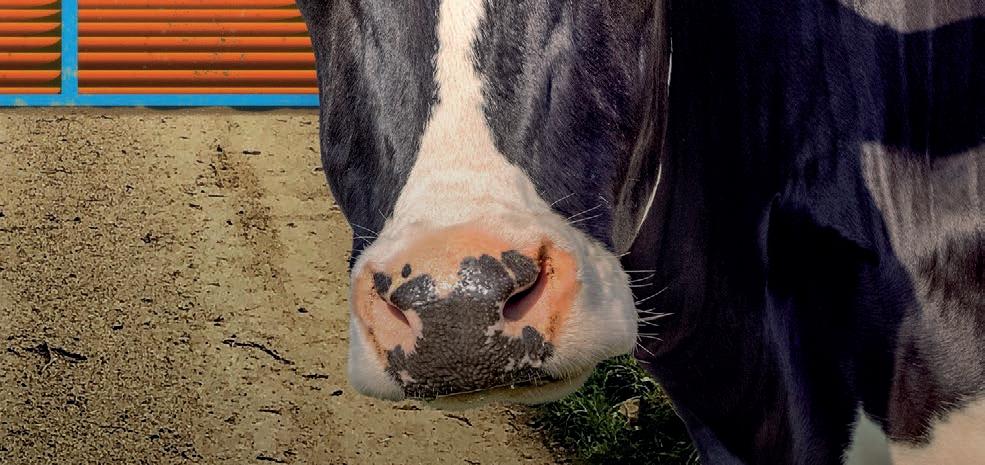
ROLL UP: For the past two years many shows have been open only to exhibitors and competitors, but more than 90 events are now braced for bounce-back numbers of attendees.
to get the pasture moving,” said Schikker, a local stock agent and first-generation New Zealander from Dutch parents.
For the past two years the Ashburton Show was a restricted programme of exhibitor-only classes.

Hawke’s Bay Show general manager Elisha Milmine said the 2002 show will be packed with
attractions and entertainment.
The list of events includes a virtual beef cattle competition, carriage driving, dairy goats, dog trials, donkeys, dressage, fencing, pigs, poultry, sheep and fleece, shearing, equestrian showing, hunter and jumping, world cup equestrian class, the best of the Bay beef competition and the export lamb competition.
Stop BVD in its tracks. The most devastating impacts of BVD are on pregnant cattle and their unborn calves, so protecting heifers and cows from infection during mating and gestation is critical. Protect the health of your herd by keeping your herd BVD free with Ultravac BVD®. A premium foetal protection vaccine proven in New Zealand.1 See your vet today. • Decreased milk production • Poor conception rates • Persistently infected calves • Abortions, mummies, and stillbirths R Packianathan, WJ Clough, A Hodge, DK Holz, J Huang, GL Bryant & C Colantoni (2017): Prevention of fetal infection in heifers challenged with bovine viral diarrhoea virus type 1a by vaccination with a type 1c or type 1a vaccine, New Zealand Veterinary Journal, DOI:10.1080/00480169.2017.1291376. Zoetis New Zealand Limited. Tel: 0800 963 847; www.zoetis.co.nz. ULTRAVAC is a registered trade mark of Zoetis Inc. or its subsidiaries. ACVM No. A10730: RVM; Available only under Veterinary Authorisation. A
could cause: 10 FARMERS WEEKLY – farmersweekly.co.nz – October 17, 2022 News10
Human kindness on show in short film Milk
Seed body lauded for landing congress
Annette Scott NEWS Seeds

THE short film Milk has been watched by thousands of people around the world at international film festivals, winning multiple awards – and it’s now available to watch in New Zealand.
Agricademy managing director Alister Shennan said it will brighten viewers’ day, providing a welcome break and a reminder to farmers of why they do what they do.
It was written, filmed, and produced by Country Calendar director Celia Jaspers.
The film is set in Martinborough and is about an old man who does not have enough money to buy a bottle of milk from the dairy until a young girl steps in and offers to pay with her pocket money, which she had wanted to spend on lollies.

Jaspers had the idea for Milk after being struck by the sense of community she encountered when she was at the local shops, just after a level 4 lockdown.
“That feeling of community
was so strong and you felt like people were genuinely caring for everyone, looking out for everybody,” said Jaspers.
With the small-town setting and the film’s powerful emotional pull, Jaspers said it was always going to be about milk. “With milk being such a primary product that we all know and relate to, I don’t think I even questioned the title ... it made so much sense for lots of reasons.”
Shennan said he is backing the launch as Jaspers has been a driving force behind the filming and production of all of Agricademy’s online video content.
He said watching Milk will be a positive affirmation for so many people in the dairy industry who do the hard yards every day.
MORE:
You can watch Milk here –www.scorpio.co.nz/milk
THE New Zealand grain and seed industry is excited to be honoured in the Tourism New Zealand 2022 business events awards.
The New Zealand Grain and Seed Trade Association (NZGSTA) was recognised at the recent Tourism NZ business events national awards for having won the right to host the international Asian
Seed Congress 2023.
Association general manager Thomas Chin said he was “absolutely delighted” to accept the award and the success was only possible with the support provided by several different parties including member companies, ChristchurchNZ, Tourism NZ and NZ Trade and Enterprise.
with our partners for up to 1,000 overseas delegates expected from across the Asia Pacific region,” Chin said.
He said hosting the congress will be a huge opportunity to raise NZ’s international profile, showcase the NZ seed industry and generate opportunities for new trade and investment.
Seed production spans pastoral and forage, cereals and pulses and a range of vegetable crops.
NZ Grain and Seed industry general manager Thomas Chin.
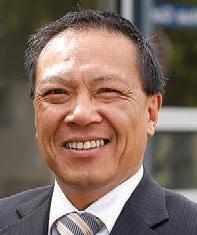
NZ is a world leader in seed production, supplying 60% of the world’s radish seed, 50% of white clover seed and 40% of global carrot seed.
“We are also producers of highvalue specialist vegetable seed such as spinach, beetroot, peas, cauliflower, cabbage, chard seed and more, the majority of which are productions destined for Asia,” Chin said.
“A congress-organising committee has been formed and we now look forward to pulling together an exciting programme
The Asia Seed Congress will be held at the Te Pae Christchurch Convention Centre in November 2023.
LIVESTOCK
REPORTS EYE
See what sold today Subscribe from only $35* per month agrihq.co.nz/livestock-reports Results from the saleyards, including per kilo prices for store lambs, delivered straight to your inbox. * Prices are GST exclusive 11 FARMERS WEEKLY – farmersweekly.co.nz – October 17, 2022News 11
Staff reporter PEOPLE Dairy
ON SET: Director Celia Jaspers says she was inspired to make Milk by the sense of community during the covid lockdown.
Reputation reaps rewards in on-farm sale
Annette Scott MARKETS
ATOTAL of 600 cattle were sold at the fifth annual on-farm sale of David and Jayne Timperley’s Opawa Simmental stud at Albury in South Canterbury in what PGG Wrightson regional livestock manager Joe Higgins says was bigger than any Temuka sale yarding these days.

All of the yearling and 18-month cattle sold originated from Opawa Stud’s progeny, many fetching a premium over the weekly yard sales.
“The buyers like to know just what they are getting, and buying from a reputation such as David has is attractive to returning buyers,” Higgins said.

“It was most certainly a very big and very good yarding of quality cattle that deserved the support it attracted.”
David Timperley was happy with the full clearance of the sale, having “tossed up” taking the cattle to Temuka or selling on farm.
“Once you add the costs including the yarding fees, transport and the animal welfare factor it just makes sense to sell them on farm as we have done now for the past four years.

“It’s been a good decision and the cattle just move from farm to farm,” Timperley said.
The 2400ha property is well set up for the on-farm sale with three sets of yards across different parts of the farm to accommodate the various groups of cattle on offer.
“We had a number of returning buyers, the prices were competitive, everyone seemed to come away pretty happy.”
Originally from North Canterbury, David and Jayne started their registered Simmental stud in 1993 with the purchase of six heifers from Rissington. They moved south to their Albury farm in 2007.

The main focus for the stud is to produce animals with a good temperament, ease of calving and good growth rates that will thrive in any commercial situation.
The farming operation winters
1000 beef calves, up to 1000 R1 and R2 dairy grazers and runs a 5000ewe Romney breeding flock.
As well as the cattle sale, the Timperleys hold their annual lamb sale in January and the bull sale in May.
and I like to support my buyers and progeny and regularly buy back calves to finish.”
These are all sold in the on-farm sale so nearly all the cattle in the sale have heritage back to Opawa.
“It’s a big incorporation, a bit to get your head around, but it’s working,” Timperley said.
At the annual cattle sale last week, the Simmental-Hereford steers fetched $1630 (448kg) with the second cut making $1540 (422kg). Outside of this the rest of the steers ranged from $1000-$1280.
David Timperley Albury, South Canterbury
They also own two dairy farms, a winter milking herd of 500 Friesian cows at Geraldine and second 400 Friesian Kiwi-cross herd at Hinds in Mid Canterbury.
“We AI the winter cows to Simmental bulls and the spring cows are mated to Simmental,” Timperley said.
“We rear calves off the dairy farms
The tops of the Simmental-X heifers sold up to $1260 (377kg) with lighter weights down to $939 (272kg).
Autumn-born 18-month steers sold from $1320-$1450 for the heavier types, with lighter steers selling from $1265-$1500.
Simmental-Hereford bulls, most of which end up in the dairy industry, sold from $1130 up to $1470.
The yearling steers made $675$955, while yearling heifers sold from $730-$880.
HARD YARDING: PGG Wrightson agent Shane Gerken, David Timperley and buyer Robin Tong discuss the deal.
Full clearances and good averages
Hugh Stringleman MARKETS Bulls
TWO AngusPro member studs had successful yearling bull sales during week six of the spring auction season, selling all their offerings and recording average prices over $5000.
Komako Angus at Ashhurst, near Palmerston North, made a top price of $11,000 paid by Sami and Laura Werder, Stratford.
Komako’s average was $5473 for 30 bulls sold, one of which was a two-year-old.
Down at Geraldine, Kakahu Angus sold a full clearance of 60 bulls for an average $5080.
Their tops were $9500 paid
by Tom Macfarlane of Melior Venison, and $9000 paid by Verity Farms, owner of Godley Peaks.
Nearby Stern Angus sold all 38 bulls offered and achieved an average of $4500.
Their top price of $10,000 was for Stern 21525, paid by Lake McKay Station.
Back in the North Island, Joe and Lea Fouhy at Glanworth, part of Waigroup Angus, sold 30 of 38 for an average $3286 and a top price of $5200.
Murray Grey bulls made a top price of $4600 paid for Torrisdale Socrates S108 at the Torrisdale sale in Winton, Southland.
The clearance was 31 out of 40 offered and the average price was $2760.
12 FARMERS WEEKLY – farmersweekly.co.nz – October 17, 2022 News12 Delivered to the farm gate of more than 24,000 Kiwi dairy farmers every month Advertise with us Call 0800 85 25 80
Cattle
Once you add the costs including the yarding fees, transport and the animal welfare factor it just makes sense to sell them on farm as we have done now for the past four years.

The right people grow everyone’s business. Become a licensee for Get Milking. agricademy.co.nz/licensee Find out about becoming a licensee in your area: Alister Shennan - 027 302 3713 alister@agricademy.co.nz 13
PCE weighs up forestry’s role in offsetting methane
Richard Rennie POLITICS Forestry
PARLIAMENTARY
Commissioner for the Environment Simon Upton has released a report underscoring the role forestry could play in helping agriculture offset its methane emissions over coming decades.
The theoretical work says planting 770,000ha of pine forest between now and 2050 would have a similar effect on the temperature as reducing gross methane emissions by a further 10%. This is 26,000ha every year between now and 2050.
While steering clear of making policy recommendations, Upton acknowledged that the work stems from his long-held belief that the ability of fossil fuel emitters to use forestry to offset longer-lasting carbon emissions is inequitable.

In contrast, despite biogenic methane having a far shorter life in the atmosphere, primary sector emitters are unable under climate change legislation to offset against forestry.
It is a view Professor Keith Woodford also shared with delegates at this year’s carbon forestry conference in August. He
expressed concern that continuing high carbon prices would only prompt more carbon forestry without inducing behaviour change around fossil fuel use.
Upton’s at times complex report comes with a number of caveats depending on what methods, definitions and targets are used in defining key aspects of reduction, offset, and emissions.
The report’s key finding uses research supplied by David Frame and Nathanael Melia of Victoria University.
They estimated the area of new pine plantation forest and the timing of the planting required to achieve roughly the same temperature effect over time as reducing a herd of livestock by one animal.

The results were a one-off
To move from 24% reduction in methane to 45%, to meet that gap you would need 1.8 million hectares of new forest planted.
Simon Upton Parliamentary Commissioner for the Environment
upfront planting of 0.6ha per animal for dairy cattle, 0.4ha per animal for beef cattle, 0.2ha per animal for deer, and 0.08ha per animal for sheep would be needed. The estimates assumed a 30-year rotation, and that the forest would be replanted on harvest.
Planting around 770,000ha of new pine plantation forest between now and 2050 equates to the removal of about 1.2 million dairy cows, or 6 million sheep.
The 26,000ha that would take to plant every year between now and 2050 is in comparison to Climate Change Commission recommending New Zealand plant about 330,000ha in exotic forestry between now and 2050, and 300,000ha of natives.
However, natives sequester significantly less carbon than exotic pine plantations, at greater establishment cost.
Upton acknowledged the areas suggested were “a lot”.
He said he is not advocating that NZ plant its way to offsetting either methane or fossil fuel emissions, particularly when the country’s legislated goals are based on gross reductions, not net.
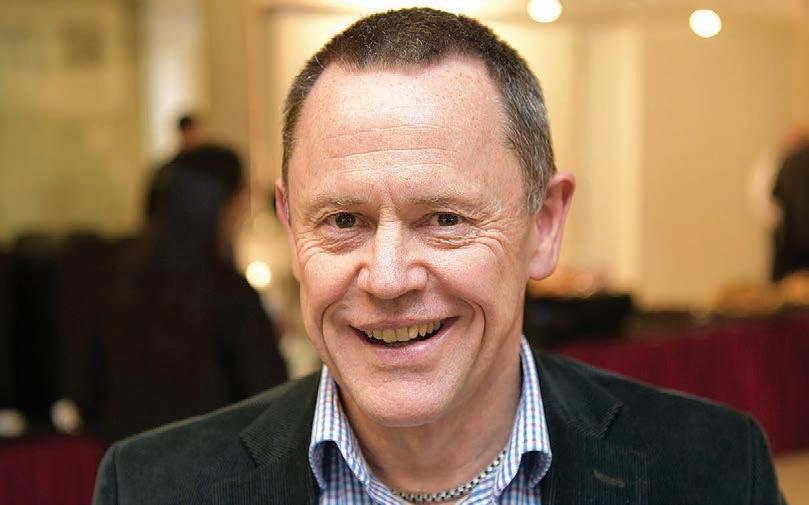

“To move from 24% reduction in methane to 45%, to meet that gap you would need 1.8 million hectares of new forest planted.”
To put the numbers in perspective, there are currently 9 million hectares of land in NZ under pasture and a further 1.7 million hectares in exotic plantation forestry. NZ’s highest rate of planting per annum was back in 1998 when it hit 98,000ha.
Upton said as for other types of on-farm vegetation, the proportion of warming from livestock methane that could be offset using riparian plantings, scattered forest fragments, shelterbelts and woodlots would likely be minimal at the national level.
He Waka Eke Noa proposes farmers be able to include such vegetation to register as offsets to their farm emissions.
Day to celebrate the best farm boss in New Zealand
Staff reporter PEOPLE Awards
NOMINATIONS are open for the best boss award, to celebrate great employers on farms across New Zealand.
The winner will be announced on November 23, the first National Farm Boss Appreciation Day.
Farm workers are invited to submit a picture and a short explanation of why their boss is the most worthy.
The nominees will feature in an online gallery, and a national “people’s choice” vote will take place during November to crown this year’s winner, who will receive a prize pack from PaySauce.
“It’s all about celebrating the good sorts out there, the employers that have their teams’ backs, dig in when times get rough and make the industry proud,” PaySauce chief executive Asantha Wijeyeratne said.
“As the payroll provider for over half the employers in the dairy industry, and with rural employers making up around 70% of our customers in New Zealand, we often hear about the employment
challenges they’re facing and overcoming with their teams. We want to spotlight the heroes and celebrate them.”
It’s all about celebrating the good sorts out there, the employers that have their teams’ backs, dig in when times get rough and make the industry proud.
Asantha Wijeyeratne PaySauce
As nominations are received, a gallery of great employers will be posted on PaySauce’s website, with the opportunity for the country to vote for the winner.
The campaign is supported by Federated Farmers, DairyNZ and the Dairy Women’s Network.


MORE:
Nominate here: www.paysauce.com/ farm-boss before November 6.
The winner will be announced on November 23 after the country votes.
Dung is a free gold mine of fertiliser and carbon, if buried. There is only one way to do that rapidly and sustainably. AVAILABLE NOW Boost Your Profits. Improve Water Quality. Contact us Dung Beetle Innovations Shaun 021 040 8685 shaun@dungbeetles.co.nz For more information or to order online go to www.dungbeetles.co.nz LK0113016© Farming For Our Future Generations 14 FARMERS WEEKLY – farmersweekly.co.nz – October 17, 2022 News14
LINKED: Parliamentary Commissioner for the Environment Simon Upton has long felt fossil fuel emissions should not be eligible to have forestry o set them.
WHO’S THE BOSS: Nominees for best farm boss will be voted for in an online ‘people’s choice’ process.
‘Bit of fresh thinking’ from PCE welcomed
Richard Rennie POLITICS Forestry
THE Parliamentary Commissioner for the Environment’s report linking biogenic methane to forest planting has largely been welcomed by Beef + Lamb NZ.

BLNZ insights officer Julian Ashby said the commissioner’s report reiterates a 2020 report from the Ministry for Environment that highlighted how New Zealand drystock farms had about 1.4 million hectares of woody vegetation capable of absorbing about a third of on-farm agricultural emissions.

“It is a fresh bit of thinking but there is a risk we will see cherry picking by different groups, and it also does make some fairly heroic assumptions about carbon dioxide getting to net zero by 2050.”
BLNZ GM for policy Dave Harrison agreed the report is a relatively complex one, made more so by delving into aspects of marginal methane emissions and sectors’ relative contribution to it.
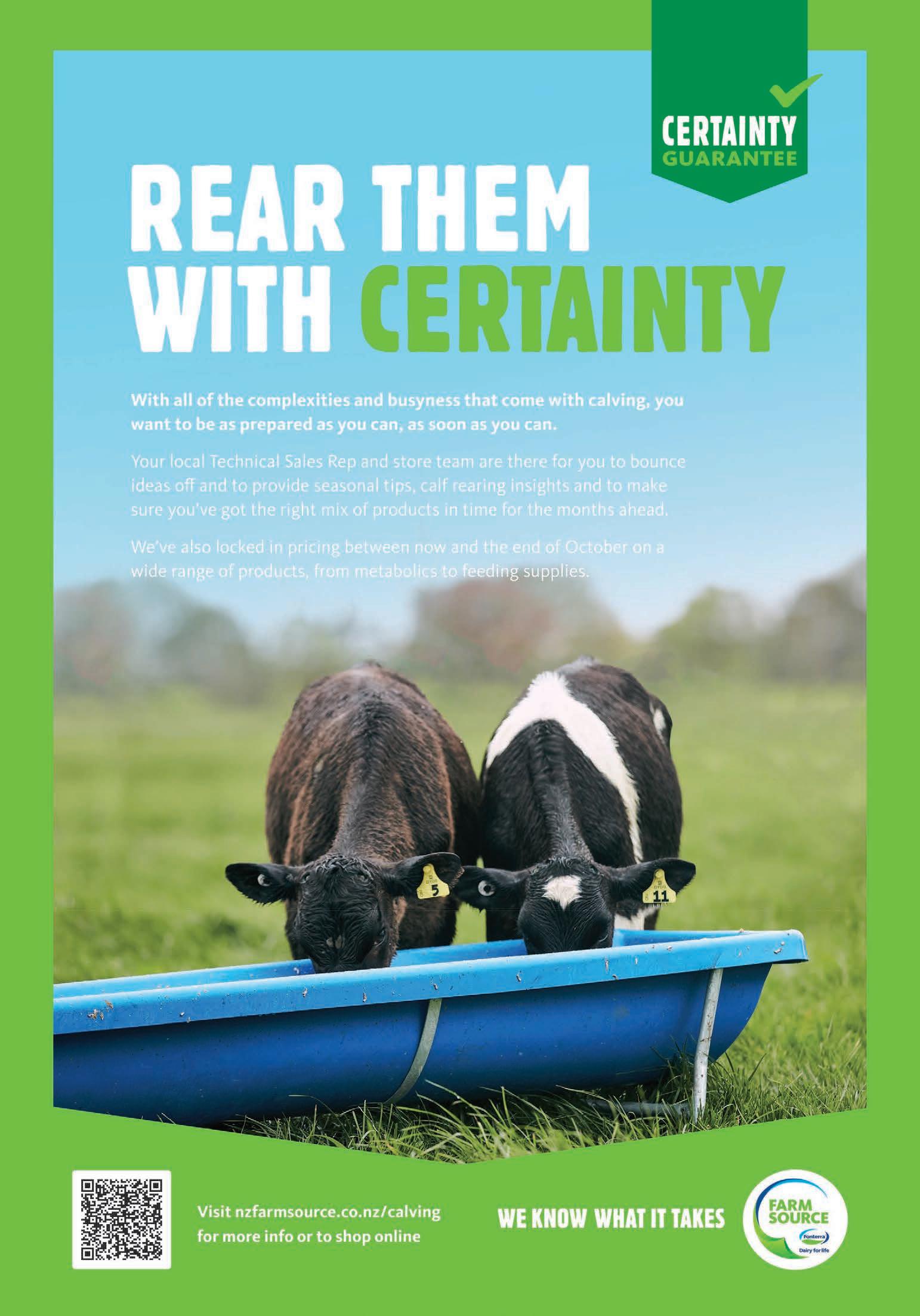
“But it is useful in that it is talking about gross emissions and not just net targets, and how fossil fuel emitters are just offsetting emissions using trees.”
This has been a long-running issue BLNZ has had with the current regulations.
It is useful in that it is talking about gross emissions and not just net targets, and how fossil fuel emitters are just offsetting emissions using trees.
Dave Harrison Beef + Lamb NZ
The commissioner “does point out we cannot plant our way out of the problem, and you cannot expect behaviour change with the current system only linking fossil fuel to creating ‘green holes’ to absorb it”, Harrison said.
Upton has steered firmly away from making policy recommendations, but he has made his concerns over not linking biogenic methane emissions to forest plantings clear.

Both Harrison and Ashby welcomed any influence the report may have on government policy. They said they believe the government is coming around to better defining forestry offsetting’s role in NZ’s carbon policy.
Climate Change Minister James Shaw has
recently said that large emitters’ ability to offset emissions through tree planting may soon not be an option.
Adjustments to the emissions trading scheme (ETS) may soon also enforce more behaviour change around fossil fuel emissions, and Shaw has stated he is open to exploring forestry’s role in the ETS, including making the government a buyer of the ETS units, driving down how many units are available.
GREEN HOLES: Dave Harrison welcomed the fact that the report points out that
‘you cannot expect behaviour change with the current system only linking fossil fuel to creating “green holes” to absorb it’.
15 FARMERS WEEKLY – farmersweekly.co.nz – October 17, 2022News 15
Subscribe on YouTube
Shaw open to new look at gene editing
value of our brand is one.”
CLIMATE Change
Minister James Shaw has acknowledged that a debate needs to be had on the role of gene editing, one that extends beyond just the immediate scientific issues around the technology.
Shaw told delegates at the Oceania 2035 summit that the debate around GE remains stuck in the 1990s transgenic era, despite the technology having moved well past that point.



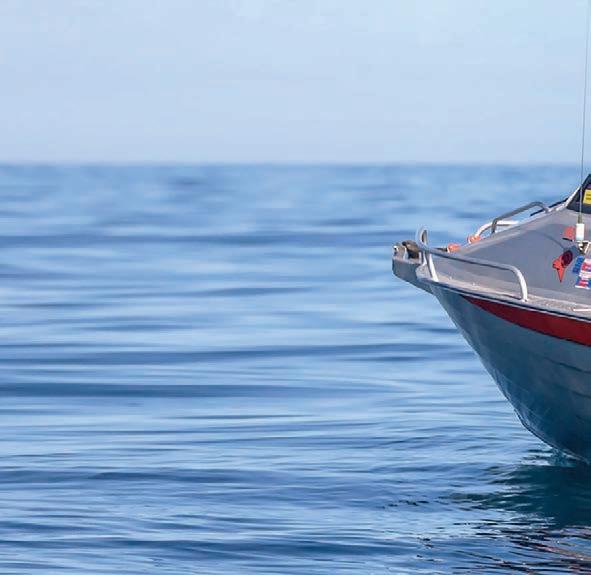
He acknowledged there remains a lot of debate within his own Green Party on the application of the technology.
“GE (gene editing) is not the same as GMO (genetically modified organisms) technology and that needs to get out there. There are also other, nonscientific, areas of the debate. The
He described past experiences with the technology as something of a poisoned chalice, and said here in New Zealand the challenge would be to determine what area the technology would be first used in, whether that be to start with food, or with conservation by way of pest control.
“I wonder if part of this is through building social acceptability through another pathway,” Shaw said.
He also noted how corporate control of GE tech through
GE (gene editing) is not the same as GMO (genetically modified organisms) technology and that needs to get out there.
James Shaw Climate Change Minister
companies such as Monsanto had in the past done no favours to how the technology’s intellectual property was managed.
“There is a debate there we need to have. It’s not just the scientific concerns,” he said.
Plant & Food head scientist Professor Richard Newcomb acknowledged GE requires a conversation as farmers and growers are required to respond to climate change impacts and growing challenges.

“A lot of other jurisdictions are





moving to change the regulations on it. It is quite different to GMO 1.0 and GE is a significant improvement over the original GMO technology.”
He said selective breeding methods are slow when trying to develop foods that are capable of handling climate change.
“NZ is one of the last jurisdictions to not change around GE. The EU is now moving too, and it is one of the last major areas that still includes GE under GMO regulations.”
A revisit of the GE debate, which was a major election issue in 2002, has the support of eminent scientist Sir Peter Gluckman, who was scientific advisor to Sir John Key when he was prime minister.
Sir Peter has called for a citizens’ assembly to provide an unbiased, informed environment for the NZ public to determine the role GE can play in helping growers manage climate change impacts, and better manage the country’s burgeoning pest populations.
BOAT FITTING
PROPELLER
SIDE MOUNT CONTROL ENGINE GAUGE Terms and Conditions: Offer is available on new Suzuki DF90A between 01/10/22 to 31/12/22. Price includes side mount control, analogue gauge, propeller, remote cables, and boat fitting. Price excludes removal of previous outboard motor and controls, repairs to electrical systems, fuel system/dash repairs, or steering systems, and transom repairs. Finance disclaimer: The 5.99% p.a. interest is fixed for the term of the loan. A PPSR fee of $10.35, a monthly maintenance fee of $2, a UDC loan fee of $105 and a dealer origination fee will apply (your dealer can tell you their applicable fee). This no deposit and 5.99% p.a. interest rate offer is available on DF90AT financed between 1/10/22 - 31/12/22. The loan is provided by UDC Finance Limited. UDC’s lending criteria and standard terms and conditions apply. Excludes demo units and all other promotions. Available through participating Suzuki dealers, while stocks last. TRACTA65249_FW YES, AT THE DF90A INCLUDES ALL THIS.$16,999* FULLY FITTED +36 MONTHS TO PAY, 5.99% P.A. INTEREST Find out more at marine.suzuki.co.nz 16 FARMERS WEEKLY – farmersweekly.co.nz – October 17, 2022 News16
Richard Rennie
TECHNOLOGY Oceania 2035
REVISIT: James Shaw acknowledges it is time to have another conversation about GE and its role in New Zealand agriculture and conservation.
Sustainability ‘more than green farming’
included, and governance includes aspects such as transparency, corruption avoidance and management compensation.
DESPITE being the key theme of most discussions about modern agriculture, true sustainability risks being lost thanks to the industry’s narrow definition of the phrase, and with it the ability to tell a genuine story about agriculture’s efforts.
Richard Heath, executive director of the Australian Farm Institute, cautioned delegates at the Oceania 2035 summit that true sustainability must capture more than just agriculture’s impact on the physical environment.
The institute is an independent policy research unit with a broad brief to lead thinking in all and any aspects of Australian agriculture.
To that end Heath said for the past three years every single issue they had been asked to work on was underscored by sustainability.
“You will hear a lot of people in agriculture say we need a sustainability framework to tell our story better. But we do not just
need to tell the story better, we need to be better.”
The focus on having a light footprint on the environment is only one parameter for sustainability’s definition and represents the only lever many are pulling in defining that story.
Heath said it is only by using frameworks like environmental,
After Young Farmers become older farmers
Staff reporter PEOPLE Young Farmers
NEW ZEALAND Young Farmers has launched an alumni network to help former members stay connected with the organisation.
The network will also offer past members a channel for offering up their expertise and support, contributing to the goal of becoming a sustainable organisation.
Chief executive Lynda Coppersmith said New Zealand Young Farmers (NZYF) has been a part of the food and fibre sector since 1927 – “so we know there are hundreds of ex-members out there doing amazing things”.
“We’re excited to now have the opportunity to stay connected and give our alumni a network to share their knowledge and offer support for the organisation, on a local, regional and national level,” Coppersmith said.
A group of former members have been supporting NZYF in developing the network.
Advisory group member, NZYF alumna and author of 50 Years Young: A History of the Young Farmer of the Year Kate Taylor is excited for ex-NZYF members to be able to stay connected to the organisation and one another, and have the opportunity to pass along their knowledge and support to the next generation.
“Our alumni are on farms, in
social and governance (ESG) factors that a more holistic take on sustainability can be captured.
ESG reporting captures the expected environmental aspects of sustainability, like biodiversity, water quality and energy efficiency. But social factors and capital like gender equality and worker treatment are also
“This construct is not new, we have all heard of the ‘triple bottom line’ type integrated reporting,”
Heath said.
Sustainability is applied across financial, manufacturing, human and natural capital, with integrated reporting frameworks recognising all of them.
He said the move by governments to require banks and finance houses to disclose climate change risk is prompting a move to this more holistic approach.
The sustainability of human and social aspects of agriculture is being recognised by large corporations and bankers in areas like farmer mental health and fitness.
“In the past these ‘capitals’ have not been recognised. If we had, would we be experiencing the problems of mental health or rural labour shortages we now have?
“Banks are starting to address this in a very determined way.”
Australia now has multiple “sustainable” certification types
and the danger is that with so many, farmers who may wish to be part of one will only become confused about what is the best.
Heath’s institute has been tasked with establishing an agricultural sustainability framework that includes all the ‘capital’ types in its definition.
“This will tell Australian agriculture’s sustainability story, delivering an evidence-based certification system.”
He said at this point there is a conflict between practical-based and outcomes-based systems.
“What is harder but more useful is if we can understand the outcomes we seek and leave it up to farmers to determine how to achieve that, specific to their farm,” Heath said.
He acknowledged there are currently some dubious practices being ticked off as ‘sustainable’ in what is often reduced to a boxticking exercise.
Describing himself as an eternal optimist, Heath said he hopes that with a clear framework and understanding of true sustainability’s definition, practices will ultimately get better.
businesses and at boardroom tables around the country, from the big corporates and councils down to rural school boards of trustees,” she said.
“It’s a vast and valuable resource for today’s Young Farmers to tap into.”
Currently, a member ages out of the organisation at 31 years old, but the network recognises their involvement can continue beyond this point.
Alumni are invited to stay connected with their former clubs by acting as mentors for current
members and getting involved with local NZYF events and initiatives.
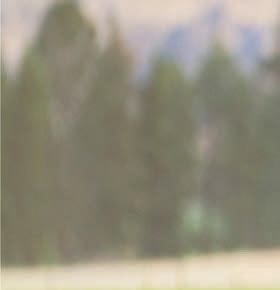










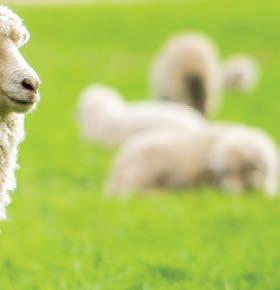





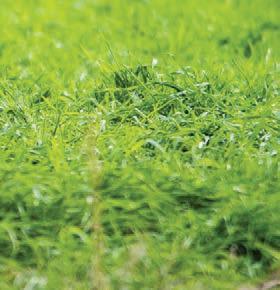

















IT’S BACK! One of New Zealand’s most trusted brands in flystrike protection has returned. Ask for Vetrazin from your preferred rural Veterinary clinic. Vetrazin® Spray-On Registered Pursuant to the ACVM Act 1997, No. A005717 Vetrazin® Liquid Registered Pursuant to the ACVM Act 1997, No. A005835 17 FARMERS WEEKLY – farmersweekly.co.nz – October 17, 2022News 17
MORE:
Former NZYF members can find out more about joining the network at www.youngfarmers.co.nz/nzyf-alumni
THE CHOP: What happens to a Young Farmer when they turn 31? A new alumni network has been launched to keep them involved after they age out of the organisation.
Richard
Rennie NEWS Oceania 2035
STORYTELLING: Richard Heath, executive director of the Australian Institute of Agriculture, says a truly sustainable agricultural story is not always being told.
Taranaki looks beyond livestock, eyes arable


leaders, academic institutions and an extensive on-the-ground network.
AS VENTURE Taranaki rolls out its blueprints for boosting the region’s economy through agriculture, the spotlight has fallen on grains, legumes and vegetables.
The economic development agency’s two-year process to explore agri opportunities has involved robust research and analysis involving sector leaders, academic institutions and an extensive on-the-ground network, and been funded under the Ministry for Primary Industries (MPI) Sustainable Food and Fibre Fund.
Now, through its Branching Out programme, it is exploring the benefits that growing grain, vegetables and legumes can bring, including grain production’s role in soil regeneration, and the fact that Taranaki’s topography and climatic conditions are suitable for particular grain production.
The grain project outlines a fouryear rotation of grains, legumes, and vegetables including wheat and sorghum for summer crops and paddocks for grazing, allowing the programme to integrate with existing farming systems.
Alongside increasing grain and feed supply on the ground in New Zealand, the programme aims to increase agricultural jobs and promote farming within the community.
Venture Taranaki project manager Michelle Bauer said Taranaki has untapped potential. She said the Branching Out project is about identifying food and fibre value chain opportunities that are complementary to the region’s beef and dairy mainstays.
Over two years a long list of 96 prospects has been narrowed down to a short list of 10 highvalue ventures that have been validated through robust research and analysis involving sector
“This project aims to increase resilience, sustainability and add value to what we can grow so well and we also want to encourage more thriving food industries in our region like beef, dairy, honey.”
Bauer said the most promising ventures identified have resulted in a series of informative investorready blueprints, commissioned and published by Venture Taranaki and launched in July this year.





legumes and vegetables; hemp fibre for construction; avocados; kiwifruit; hops; sheep dairy; trees, medicinal plants; gin botanicals and indigenous ingredients. All are consumer led and driven by market opportunities.
Through the Branching Out project 270,000ha of suitable land has been identified for horticulture in the region with more than 50 growers expressing interest in supporting pilot trial activities across a range of the ventures.

“Taranaki is fortunate to have a favourable climate and soil conditions in which many things grow well and it is likely that climate change will make the region even more suitable to a wide range of horticultural crops,” Bauer said.

The blueprints serve to build investor confidence and be an informative roadmap for complementary land-based activities and associated value chain enterprises in Taranaki.

They contain details about sector opportunities and drivers of growth, required growing conditions, crop management, value chain development, financial assessments and potential impact for the region economically, socially and environmentally.
The blueprints include opportunities involving grains,








“So rather than focus on the land use we have taken the approach of identifying ventures that can build on our existing strengths and capabilities in engineering food production and related services leveraging the knowledge and networks that exist in the region and connect to opportunities on a national level.”

Bauer said the second phase of the project now is about looking forward to the practical implementation of the identified values.
This will involve supporting pilot trial activities and development on farms.
Farmers, consultants and food companies took part in an event last week aimed at exploring
the benefits and constraints of integrating crops into farm systems as part of the grains, legumes and vegetables blueprint.
Businesses that attended ranged from livestock feed suppliers and growers to a company producing cauliflower-based ice cream.


Nick Pyke of Leftfield Innovation presented his research and findings in relation to the grains, legumes and vegetables blueprint.
The Taranaki region is traditionally dairy, but has wider potential for crops, Pyke said.
He identified crops such as



wheat, maize grain, sorghum, garlic, faba beans, kumara and the perennial ryegrass miscanthus that could potentially have higher returns than dairy.


Some also have the ability to extract nitrogen from deeper than pasture can reach, and can improve soil structure.




“This would have a case going forward from an environmental management perspective,” Pyke said.



Potentially there is a market but part of the next step of Branching Out is to work out how large the market could be, how accessible and how long term, Pyke said.
Bauer said this blueprint is at the stage where it needs farmer engagement to take the project forward and be successful.
“In all cases it is clear that a market does exist with future trends and consumer preference supporting this. We can see Branching Out growing to significant scale in terms of food security into the future both at a nationwide level and to global exports,” Bauer said.
® 18 FARMERS WEEKLY – farmersweekly.co.nz – October 17, 2022 News18
BENEFITS: Venture Taranaki project manager Michelle Bauer says alongside increasing grain and feed supply in New Zealand, the programme aims to increase agricultural jobs and promote farming within the community.
Annette Scott NEWS Crops
This project aims to increase resilience and sustainability, and add value to what we can grow so well.
Michelle Bauer Venture Taranaki
INTEGRATION: Maize grain is one of several crops identi ed as having potential when it comes to integrating crops into existing farm systems in the grains, legumes and vegetable blueprint.
GAP raises red flag on world food output
Annette Scott NEWS Production
NEW data released in the 2022 Global
Agricultural Productivity report
reveals the fragility of agricultural systems and global inability to sustainably feed a growing population.
The report suggests that without swift action and long-term resolve, the systems will remain vulnerable to environmental, economic, and societal shockwaves.
Global agricultural productivity growth is in steep decline and current efforts to expand sustainable agriculture production to feed a swelling global population are inadequate to deal with the challenges that the world faces, according to the report.

The 2022 report, Troublesome Trends and System Shocks, is produced by the College of Agriculture and Life Sciences at Virginia Tech in the United States.
To sustainably produce food and agricultural products for more than 9 billion people a year by 2050, agricultural productivity must increase an average of 1.73% annually.
From 2011 to 2020, global
agricultural productivity grew at an average of just 1.12% per year, a significant drop from the average growth rate of 1.99% from 2001-2010.
Current efforts to accelerate productivity growth are inadequate, the climate is going to have a significant impact on production and regional inequities around the world exacerbate the problem, the report says.
“When agricultural productivity
grows it means we’re producing more with fewer inputs and resources; this increases agricultural sustainability,” associate dean and director of Global Programmes in the college Tom Thompson said.
The report shows that global agricultural productivity growth has slowed dramatically and in the poorer countries it is even shrinking.
“We urgently need to reverse

this trend so that we can improve food and nutrition security, sustainability and resilience,” Thompson said.
Governments, the private sector, research institutions, international development organisations and civil society groups need to work collaboratively to create an enabling environment for agricultural innovation, services and knowledge to take root.
In addition, small-scale producers must have access to technology and innovation in order to accelerate productivity growth, improve the resilience of food security, increase incomes and strengthen sustainability.
“Only then can the world be assured that its agricultural systems are sustainable and resilient to shocks. The technology that is relevant for smallholder producers is there but the systems and incentives are not in place for success.
“We know how to grow agricultural productivity. The most pressing current need is for leaders to enact policies to create an enabling environment for productivity growth.
“That is why we’re strongly focused on getting the lessons of the GAP Report into the hands of decision and policymakers around the world,” Thompson said.
The most pressing current need is for leaders to enact policies to create an enabling environment for productivity growth.
Tom Thompson Virginia Tech
disease prevention resources for sheep born in the digital age.

Up-to-date animal health information for New Zealand farms

Vaccination options and product comparisons:
Detailed ROI calculators


New
Visit sheepvax.co.nz ACVM No’s A934, A11311, A11766, A9028. Schering-Plough Animal Health Ltd. Ph: 0800 800 543. www.msd-animal-health.co.nz © 2022 Merck & Co., Inc., Rahway, NJ, USA and its affiliates. All rights reserved. NZ-MUL-220800001
19 FARMERS WEEKLY – farmersweekly.co.nz – October 17, 2022News 19
MIND THE GAP: The 2022 Global Agricultural Productivity report ags the steep decline in productivity in the sector – and its implications for food security.
Thumbs-down for govt red tape colours poll
42% in 2019 to 36% this year. Rural turnout fell from 52% to 45% and provincial voters from 46% to 40%.
PROVINCIAL voters
have shown their
dissatisfaction with the confusing deluge of government regulation imposed on local government, say newly elected mayors.
Resource management reforms and increasing demands for compliance on rural communities remain a major concern for reelected Environment Canterbury councillor Peter Scott.
Three Waters is a “big one”, but keeping the South Island road networks connected is also crucial, re-elected Ashburton mayor Neil Brown said.
Bryan Cadogan, the re-elected mayor of the Clutha District Council, said frustration at Central Government policies was obvious during the campaign, provoking some anger and harassment of candidates.
Provincial voter turnout was lower than in previous elections, and the mayors said the prevailing mood of voters during the campaign was confusion and angst about government policy and the added workload on local government.
Overall voter turnout fell from
Cadogan said anger about Three Waters dominated the campaign.
Under the policy, rural consumers have an opportunity to take control of the 75,000 rural water schemes and therefore their future, a move Cadogan believes they should consider.
Spending on roads was another high-profile issue. Cadogan said all councils are struggling to recruit staff with the correct skills to deliver this work.
Andrew Noone, chair of the Otago Regional Council in the previous trimester, was re-elected and said regulatory uncertainty was a common theme during the campaign, especially with freshwater rules.
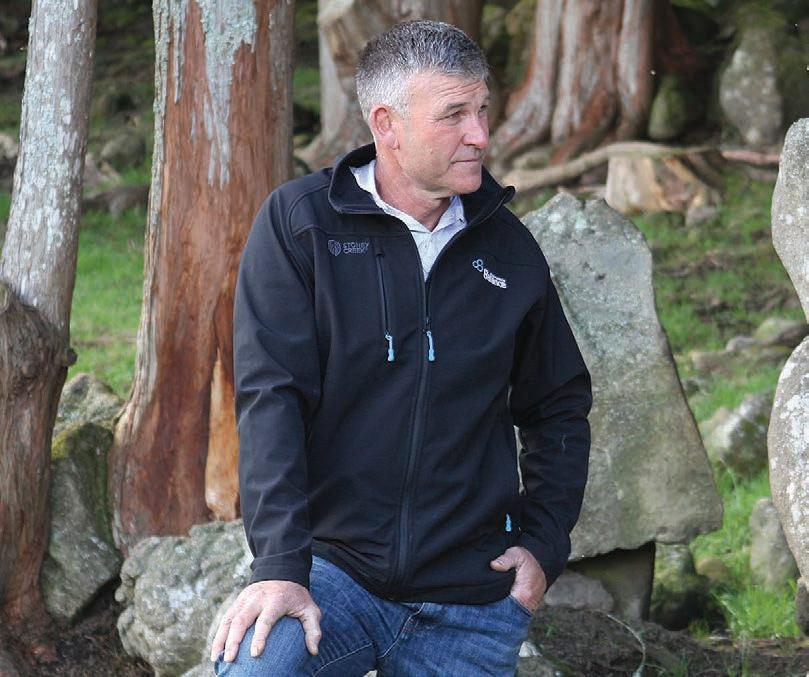
There seems to be a growing demand on regional councils to do more to ... deliver on national policy direction and the only way to fund that is to go back to the ratepayer.
Andrew Noone Otago Regional Council
Another issue was the impact on rates of regional councils having to carry out Central Government policies.
“There seems to be a growing demand on regional councils to do more to often deliver on national policy direction and the only way to fund that is to go back to the ratepayer,” he said.
Returning Waitaki district councillor Gary Kircher said there was an undercurrent of frustration at government policy.


“Overall there is an undercurrent of concern at changes happening rather than anything specific.”
Resource management reforms and increasing demands for compliance on rural communities remain a major concern for reelected Environment Canterbury councillor Peter Scott, a farmer from Kerrytown near Pleasant Point.
The most frustrating issue and one he will continue to pursue on council is water management.
“I firmly believe that the main challenges for Canterbury’s environment will remain water allocation and nitrates.”
Water allocation and nitrate use is set to be challenged again under the National Policy Statement for Freshwater Management 2020 and the yet-to-be realised
Resource Management Act reform.
While opposing Three Waters is a “big one” keeping the South Island connected is up there for his district, re-elected Ashburton mayor Neil Brown said.
He said it is clear both locally and nationally that people do not want the Three Waters model as proposed.
“It’s time to push the pause button, talk to the local people and
work a way forward to enhance Three Waters going forward.”
Forging ahead with a second bridge is another top priority for Ashburton.
Brown will also be advocating for work on the Ashburton River, its gravel extraction and stopbanks and associated infrastructure to future-proof and mitigate flood risk for rural communities and farmland.
Farmers beef up the new Northland council
Hugh Stringleman POLITICS Elections
THREE of the five new councillors on the Northland Regional Council have farming backgrounds. They replaced two farmers, chair Penny Smart from Kaipara and deputy chair Justin Blaikie from the Far North.
The newcomers are Federated Farmers Northland immediate past president John Blackwell, the current Ballance Farm Environment supreme winner in Northland, Geoff Crawford, and Hokianga farmer and past Far North District councillor Joe Carr.
The other two newcomers are Tui Shortland and Peter-Lucas Jones, elected in the inaugural Te Raki Māori constituency.
Blackwell defeated Smart in the Kaipara general constituency and Carr replaced Blaikie in the Far North.
Blackwell said he would be taking a close interest in Northland Regional Council finances and the reasons for doubling of staff numbers over the past six years.
Crawford attracted 52% of the votes cast in the Mid-North general constituency and was 2000 votes ahead of his nearest rival among four contestants.
The nine-person council has four returning councillors, including Rick Stolwerk in the southern constituency, re-elected unopposed.
The full council will elect its chair and deputy at the first meeting.
In the Kaipara District Council mayoralty, vacated by farmer
Jason Smith to contest in national politics, businessman Craig Jepson from Mangawhai was successful among six candidates.
He had been unsuccessful in three former attempts to become a councillor and was against the introduction of Māori wards without public consultation.
The Whangarei District Council mayoralty was won by local businessman Vince Cocurullo by a healthy margin over his nearest rival among seven candidates.
One of those was dairy farmer Ken Couper, Waihi, who came third in the race for mayor and was elected in the Bream Bay ward along with fellow farmer Phil Halse.
The makeup of the Far North District Council, including the mayoralty, awaited the counting of postal ballots before it could be finalised.
Available throughout NZ to assist with resolving rural disputes, including as an appointed Sharemilking Conciliator, Rural Arbitrator or Farm Debt Mediator Mark Copeland LLB, CMInstD, AAMINZ Rural Disputes Expert Ph: 07 345 9050 for an appointment e-mail: copeland@copelandlawyers.com 20 FARMERS WEEKLY – farmersweekly.co.nz – October 17, 2022 News20
Staff reporter POLITICS Elections
BUILD BRIDGES: Re-elected to the top seat, Ashburton mayor Neil Brown says keeping the South Island connected is a top priority.
LOOKING AHEAD: Farm Environment Award winner and former Northland rugby rep Geo Crawford was elected to the Northland Regional Council.
Best Kiwi ploughmen dig deep for accolades in Ireland
ANEW ZEALAND competitor at the World Ploughing championships scored a top-10 finish in Ratheniska, Ireland, last month.
Ian Wooley from Marlborough achieved the 10th placing overall in the conventional two-furrow ploughing competition.
He had been placed 10th each day, in the stubble and then the grassland ploughing, competing against 26 ploughmen from around the world.




























Bob Merhtens from Washdyke, Tīmaru, competed in the reversible ploughing competition where he placed 11th on stubble day and 17th on the grassland plot, giving him 15th overall against 21 other competitors.
The soil was described as 40% silt, 40% clay and 20% sand and part of the traditional cropping area, though that didn’t preclude the competitors having some machinery breakages due to stones in the soil.
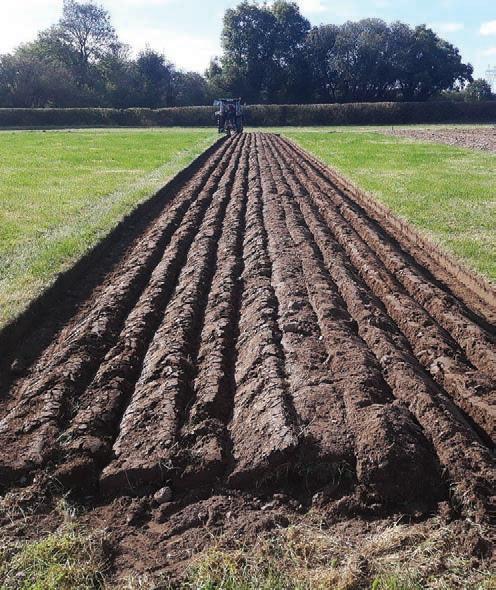



Helen McSporran from the Takapau Ploughing Club in Hawke’s Bay was the official judge from NZ and endured 8km10km walks in the course of a day’s judging.
The world event attracted about 100,000 people on each of the competition days and the site hosted 1700 agricultural trade exhibits, making it the largest agricultural event in the northern hemisphere, covering 700 acres of farmland.

The NZ representative on the board of the World Ploughing Association, Colin Millar from Rotorua, was re-elected president of the world body for an unprecedented seventh year.
The event was marked with a cairn of peace monument, made from 350 millionyear-old locally sourced stone.

This year’s New Zealand competition will see six qualifying events, through October and November.

ACVM No: A934, A935, A11311 & A11766. Schering-Plough Animal Health Ltd. Phone: 0800 800 543. www.msd-animal-health.co.nz ©2022 Merck & Co., Inc., Rahway, NJ, USA and its affiliates. All Rights Reserved. NZ-MUL-2201700001. Baron Audit Data, June 2022 Whether standard, boosted with Vitamin B12 and/or Selenised, the MULTINE ® range can cover your flocks’ essential vitamin, mineral and clostridial protection needs. You can get exactly what your sheep require, right when you need it. That’s why MULTINE ® is New Zealand’s leading 5-in-1 clostridial vaccine range1 Learn more at www.sheepvax.co.nz Available from leading veterinary clinics and rural retailers. With a range of supplementation options to choose from, using MULTINE® ensures you get everything you need – and nothing you don’t. 5-in-1 + 2mg Vitamin B12 + 2mg Selenium 5-in-1 5-in-1 + 2mg Vit. B12 5-in-1 + 5mg Sel. Your farm, your solution. The MULTINE® range lets you manage how you protect and supplement your sheep. VAXIPACK®
RECYCLING
LEARN MORE 21 FARMERS WEEKLY – farmersweekly.co.nz – October 17, 2022News 21
INTO PLOUGHSHARES: At the championships in Ratheniska, Ireland, the World Ploughing Association unveiled a stone dedicated to peace, flanked here by Irish President Michael Higgins and World Ploughing president Colin Millar, right, from Rotorua.
Staff reporter
PEOPLE Arable
FINISH LINES: Ian Wooley from Marlborough was recognised as the 10th best ploughman in the world after placing on the leader board in the conventional two-furrow ploughing competition in Ireland.
No dearth of animal health products in NZ
 Neal Wallace NEWS Research & innovation
Neal Wallace NEWS Research & innovation
ANIMAL health companies are not abandoning New Zealand and health products will continue to be available for farmers, says an industry group.
Mark Ross, the chief executive of Animal and Plant Health NZ (formerly Agcarm), said companies are investing in product development, but there are also several small NZ-based biotech companies that are developing products for NZ farm livestock.

“It is very healthy. We want to work with biotech companies,” he said.



BiotechNZ executive director Zahra Champion recently raised concerns about the future of animal health products for NZ cattle and sheep conditions,
warning that the three largest veterinary pharmaceutical companies operating here are shifting their focus away from free-range production animals.
She said Elanco, Boehringer Ingelheim and Zoetis are increasingly focusing on developing products for poultry, pigs and companion animals.
The presence of animal health companies in NZ has also shrunk through mergers and acquisitions, and she expects that to accelerate as they chase more profitable industries.
Ross said the NZ animal health market – pets and commercial animals – is estimated at between $430 million and $450m and employs 1100 people.
There has been concern that supplier changes could limit the availability of NZ-specific products, but Ross said it has always been a requirement that before a product can be released

here it must be tested and licensed.
There are no new barriers to the release of new products.

In September last year Boehringer Ingelheim announced changes to its NZ portfolio, including ceasing the manufacture of locally produced livestock ruminant products in NZ from its Auckland production site by the end of this year.
The head of Animal Health New Zealand, Paul Fitzpatrick, said in a statement that from December, Boehringer Ingelheim “will deliver a more targeted range of cattle and sheep products”, many of which will be produced locally by contract manufacturing partners in NZ.

Fitzpatrick said the company has been working with veterinarians, farmers and stakeholders across NZ and will continue to invest in the research and development of new therapies for animals.
Trans-Tasman dog trials resume after 3-year gap
Staff reporter
NEWS Sheep dogs
AFTER a three-year gap the Trans-Tasman Test Series in sheep dog trialling is set to resume in Tasmania over Labour Weekend.
The New Zealand team flies to Tasmania on October 18 and will take part in a three-test series on Friday evening under lights, followed by middle-of-the-day events on Saturday and Sunday.
This test series was originally planned for 2020 but due to covid could not be held in either 2020 or 2021.
The team captain is Guy Peacock from Wairarapa and Southern Hawke’s Bay with his dog Slim, an experienced four-time NZ team member.
Three first-timers make up the team: Neil Evans and Tess from Canterbury, Scott McRae and Cory from Northland and Gavin Drake and Baldy from Whanganui.

Team manager and NZ judge is
Pat Coogan, the NZ Sheep Dog Trial Association president.
The NZ team will compete in the Australian Supreme Dog Trial event, followed by a three-test series against their Australian counterparts competing for the Wayleggo Cup.
It is currently held by NZ and the history of the event is NZ 17 times and Australia nine times.
The competition is conducted over a special course with its own set of unique rules, developed specifically for the Trans-Tasman competition.
It is a mix of NZ and Australian rules, drawn from the NZ Short Head event and the Australian Heading event.

In the NZ sections of the course the competitors are allowed to assist their dog more than in the Australian section, thus showing their stockmanship skills.
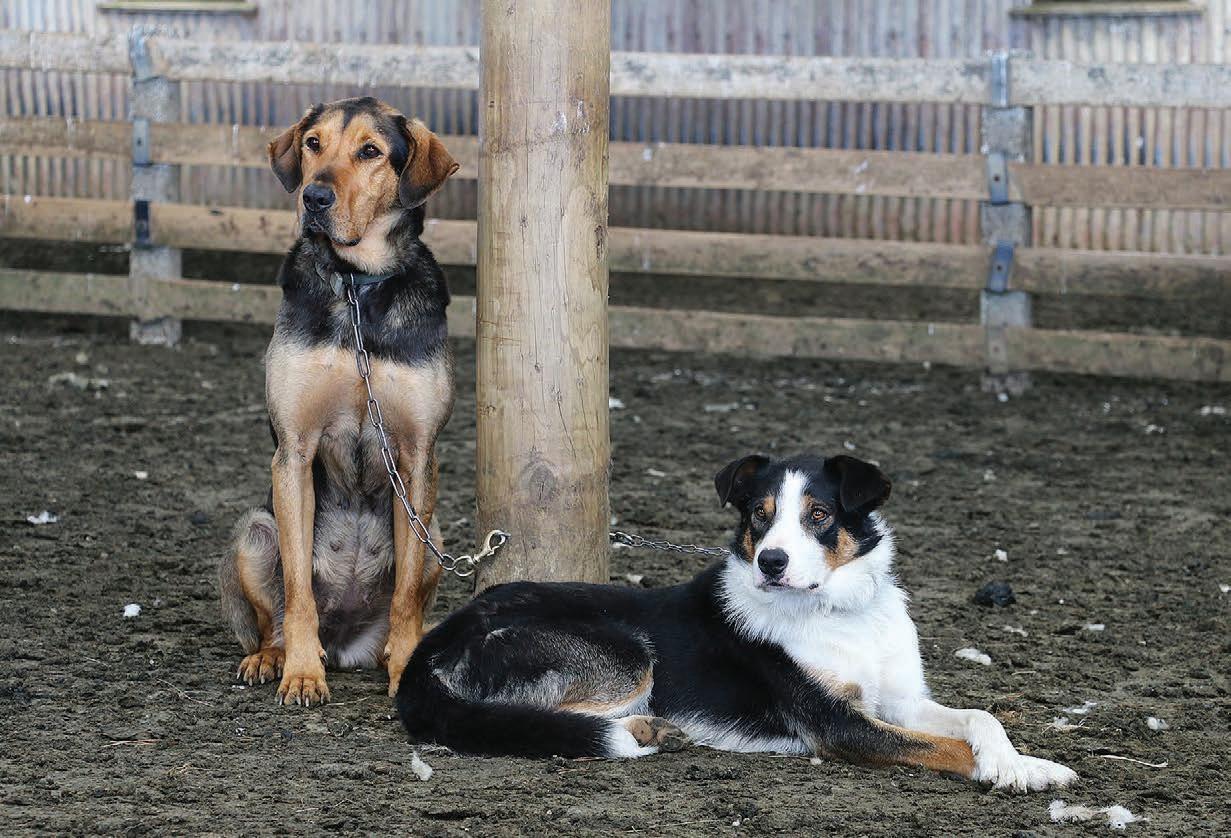
The course must be completed in 15 minutes.
There are two judges, one from each country, and their scores are averaged to get a result.
got
on

set of Coopers!”
- Aaron O’Keefe
“I
125,000km
my
SPORTS ALL - TERRAIN 70% ROAD & SAND, 30% DIRT & MUD SUITABLE FOR: LTZ PRO coopertires.co.nz | 0800 453 418 MILEAGE GUARANTEED 22 FARMERS WEEKLY – farmersweekly.co.nz – October 17, 2022 News22
R&D: Mark Ross, CEO of Animal and Plant Health NZ, says companies are investing in product development to meet New Zealand animal health challenges.
TOP DOG: The Trans-Tasman Test Series has been won by New Zealand 17 times, compared to Australia’s nine victories over the years.
Red needle cast strips Northland pine trees
Hugh Stringleman NEWS Forestry

ALARGE tract of Waipū Forest in Northland has suffered an outbreak of red needle cast brought on by Phytophthora pluvialis and the very wet winter.


The disease outbreak is very
noticeable in the 10- to 12-year blocks between Taipuha and Waipū, and on the Brynderwyn hills around SH 1, which also have parts of the same forest.
Forest management company Manulife said wetter than usual conditions in areas of Northland together with susceptible age classes of Pinus radiata has seen red needle cast (RNC) appearing.
“Phytophthora pluvialis is carried in airborne water droplets, and wet late summer conditions – mist, cloud and rain – are ideal conditions for the disease to develop,” Northland silviculture manager Peter Houston said.


Needle loss can set back tree growth with defoliation but as this damage is sporadic and unpredictable, normal tree growth resumes.
Already the affected trees are showing some green growing tips.
A beef farmer with land alongside the Waipū Forest on Millbrook Rd, Taipuha, said he noticed discoloured needles followed by needle loss on a large scale over the past few months.
A younger, replanted forest some 5km to the north of Millbrook Rd has shown RNC spread in recent weeks.
RNC is predominately found on the East Coast and Central North Island but more reports are being received from Northland and the top of the South Island, Scion team lead for pathogen diagnostics and collections Darryl Herron said.

The disease tends to follow a seasonal pattern where mild
The 2022 disease season has been very severe, with expression of RNC as early as March, and complete defoliation of radiata pine in some locations.
that RNC hot spots can occur in areas with high mist or fog, for example in valleys or in forests exposed to sea mist.

“The 2022 disease season has been very severe, with expression of RNC as early as March, and complete defoliation of radiata pine in some locations.”
Significant needle loss in winter and spring leads to substantial tree growth losses in the following season.
temperatures of 10degC to 20degC and high rainfall favour progression.
“This often results in peaks in disease over the winter months, and very little disease over summer,” Herron said.


“A reliance on moisture means

Low-volume aerial applications of copper oxide have been shown to reduce the severity of RNC in trials conducted by Manulife in the Kinleith district in collaboration with Scion.
Houston said Manulife does not plan to preventively spray copper in Northland at this stage.
DON’T LET SUCCESS OR FAILURE COME DOWN TO THE WIRE. Only fencing wire that carries the WIREMARK guarantee is 100% made and tested in New Zealand for this country’s harsh farming conditions. So make sure you ask for WIREMARK, the fencing wire that’s as tough and wiry as a local fencer. To find out more, visit wiremark.co.nz, call 0800 7227 8335 or email info@pacificsteel.co.nz MADE TOUGH AND WIRY IN NEW ZEALAND 23 FARMERS WEEKLY – farmersweekly.co.nz – October 17, 2022News 23
DECLINE: In a warm, wet winter red needle cast has a ected large parts of Waipū Forest, Northland, either side of Millbrook Road near Taipuha.
Darryl Herron Scion
WET AIR: Phytophthora pluvialis is carried in airborne water droplets, so a season of mist, cloud and rain creates ideal conditions for red needle cast to develop.
Māori seeking a wider investment horizon
including with indigenous peoples around the world, she said.
MĀORI are not broken, it’s the financial system that needs to be reengineered so that they and other indigenous peoples can open up to investment, fund managers and investors have heard.
A panel discussion at a Responsible Investment Association Australasia (RIAA) conference took a look at the Māori perspective on sustainable investment.

Jo Kelly, chief executive at Toitū Tahua – Centre for Sustainable Finance, said the finance sector needs to be overhauled to respond to the challenge of decarbonisation.
There are only eight years remaining to halve New Zealand’s greenhouse gas emissions, she said.
“All of us will be living with the effects of the investment decisions made today for many years to come.”

Any meaningful delivery will rely on partnerships and collaboration,

“It’s good to be an investor curious about te ao Māori, or at least not closed to it.”

That is becoming a mainstream view. The External Reporting Board (XRB) sees Māori business values as showing the way ahead to sustainable finance and business reporting.
It has recently launched a consultation process with Māori as a first step towards developing voluntary non-financial reporting standards.
The RIAA has led the development of a voluntary stewardship code to set ethical investment standards, with seven founding signatories, including the NZ Super Fund.
According to Te Puni Kōkiri, the government’s principal policy advisor on Māori wellbeing and development, using Stats NZ data published in September, selfidentified Māori enterprises and authorities have $15 billion of equity and $6.6b of liabilities.
Other surveys use different classification methods based on businesses whose owners have Māori ethnicity but without any
self-identification requirements.
A 2018 report, from consultancy Business and Economic Research Limited, into the Māori economy gave a total asset-base estimate of $68.7b.
Westpac’s Fonteyn Moses said the system was designed for individual values, rather than that of the collective.
Fonteyn Moses, head of Māori, iwi, inclusion and diversity at Westpac, said change is needed to enable Māori to be better involved in the economy.

She had discussed the investment environment not only with Māori but with Indigenous Australians and First Nation peoples in Canada, who all hold plenty of unproductive and undeveloped land.
“They said, ‘You know, we’re looking for access to finance because we’re asset rich, but we don’t trust the system to enable us to engage in a way we don’t lose our history.’”
That means choosing not to seek investment because they fear it could ultimately lead to the loss of land, she said. However, ethical investment principles such as the RIAA code can help overcome those barriers.
“That’s the part of it I find exciting.”
Moses said Westpac has a very strong strategy for sustainability and understands the importance of sustaining life and land.
However, she did describe the traditional financial system as institutionally racist.
“I always say that our people are not broken, the system is, because the system was designed for individual values, rather than that of the collective,” Moses said.
It isn’t that the entire financial system needs to change, just a part of it – to create a space and ability for indigenous peoples to engage, Moses said.
Te Pai Roa Tika is a Northlandbased impact-investment model centred on tikanga Māori.
Its CEO, Jodi Hayward, said it describes itself as an impact investor in the indigenous sector.
“We work alongside Māori to bring iwi, asset-holding companies, whoever shows up and is interested in bringing investment into our region.”
They said, ‘You know, we’re looking for access to finance because we’re asset rich, but we don’t trust the system to enable us to engage in a way we don’t lose our history.’
Fonteyn Moses Westpac
Its business model differs from the traditional framework as it works alongside the beneficiaries of its investments.
But that does not mean Te Pai Roa Tiki sat outside the finance sector.
“Just because you want to do good, doesn’t mean you don’t like money,” she said.
Hayward commended the RIAA for launching its stewardship code for responsible investment.
It was the first time she had seen finance documentation that looked to set national standards around intergenerational thinking, she said.


Toitū Tahua’s Kelly said there are trillions of investment dollars
around the world committed toward net-zero 2050 goals. She asked how some of that money could be partnered with Māori to drive local climate solutions.
Hayward said she struggles with climate change and adaptation as it relates to Māori investment.
“I don’t believe that Māori should have to come up with solutions to things that we haven’t caused ourselves.”
However, Māori know how to look after the land, meaning investment will find its way to sustainable outcomes, she said.
“If you’re a brave investor, you’ll invest in that relationship, stay in their lane with finance and technical capability, respect the mātauranga, or the knowledge of those that look after whenua, and find a way to partner in a way that is mutually respectful.”
Moses had advice for anyone wanting to invest with Māori entities: don’t treat it as a simple transaction or they will likely respond in kind. If investors treat the relationship as a long-term partnership, they will gain insights into what Māori are trying to achieve.
Moses gave the example of a forestry block that has a 100-year plan.
“So, everyone goes, ‘Why do you do a 100-year plan?’ But that’s only four rotations on the forestry block.”
That is the lifespan of just two generations of people, she said.

Invest in the next generation. pmg Direct Childcare Fund Established in 2017, the pmg Direct Childcare Fund has delivered sustainable cash distribution returns as well as growth in value over time from a quality portfolio. Enquire about our upcoming offer 5.56% p.a* Forecast gross cash return, paid monthly PIE STRUCTURE 0800 219 476 | pmgfunds.co.nz/invest Invest with one of New Zealand's most established and trusted licensed property fund managers. Disclaimer PMG Property Funds Management Limited (PMG) are seeking preliminary interests for a potential offer of units in pmg Direct Childcare Fund. Expressions of interest can be made by contacting the PMG Investor Relationships Team. Currently no money is being sought and no units can be applied for or acquired. No expression of interest will involve an obligation or commitment to acquire any units that may subsequently be offered. Past performance is not an indication of future results, and returns are not guaranteed. Any offer that is made will be made in accordance with the Financial Markets Conduct Act 2013. PMG and the PMG Investor Relationships Team do not provide financial or investment advice. Prospective investors are recommended to seek professional advice from a Financial Advice Provider who takes into account an investors personal circumstances. The Fund’s portfolio consists of Early Childhood Education (ECE) properties which include some alternative use space. The ECE lettable area is 100% occupied but some of the alternative use space is not leased. Total Occupancy is therefore 93%. *The forecast gross cash return is for the prospective period from 1 December 2022 to 31 March 2024. It is stated before tax, based on forecast gross distributions per annum expressed as a percentage of the expected unit issue price. Details on how the forecast gross cash return is calculated and the risks associated with an investment in PMG Direct Childcare Fund will be available in a Product Disclosure Statement, which, if an offer proceeds, will be made available free of charge from our website pmgfunds.co.nz/invest. For the full disclaimer visit our website. 24 FARMERS WEEKLY – farmersweekly.co.nz – October 17, 2022 News24
GENERATIONS: Westpac’s Fonteyn Moses says many indigenous peoples choose not to seek investment because they fear it could ultimately lead to the loss of land.
BusinessDesk NEWS Finance
BIG BUSINESS: According to Te Puni Kōkiri, Self-identified Māori enterprises and authorities have $15 billion of equity and $6.6b of liabilities.
Slow and steady will save our waterways
The root system has to develop, to strengthen, and become part of the ecosystem within the soil.
CATCHMENT group leaders say waterway improvement is a long game and there are no quick fixes – but the work is rewarding and lasting.
Speakers at the New Zealand Landcare Trust’s National Catchments Forum, held in Wellington this month and supported by the Ministry for Primary Industries and Ministry for the Environment, emphasised that catchment work can’t be rushed.

“All of our answers are in nature, and we need to let that teach us. We need to step back and quiet our minds,” Ngāti Uenukukõpako’s Tireni Ratema said.
“While it is easy for the centre of our work to become about securing funding, we need to not lose sight that it is about our waterways, our land.”
Tireni used the analogy of planting a seed as a reminder to those in the audience that success takes time.
“In our work, we plant different types of natives to help protect our waterways. We need to understand that we don’t just plant a seed and expect it to pop up straight away.
“The plant grows from there, and because of its strong roots, it can handle the weather. Only then will it bear the fruit. Putting in the work, the patience, the time – that gets the fruit. Fruit just doesn’t appear from the seed.
“Bigger is not better – we need to deepen our work, deepen our roots and that takes time.”
Working towards a legacy of better water quality for our tamariki is essential, she said.
There was a lot of talk at the forum about the generations ahead, Pūniu River Care’s Quinton Tunoho said.
“It is a given that we need to leave a better future for those to come. It’s a balance of looking forward, while also focusing on the now. People need to reconnect with their environment, wherever they are from. For us, the environment means the whole space around us – reconnect with the whenua, reconnect with the awa, and te ao in general.”
Taking the time to appreciate the progress made along the journey is also important, he said.
The forum concluded on Friday afternoon following two days of presentations and panels.

“This event was the first of its kind for New Zealand and it was a fantastic success,” NZ Landcare Trust chief executive Dr Nick Edgar said.
“It is important to include our tamariki in all our steps – this brings the adults together to create a better future for our young people. We need to detach ourselves from our different views and come together on our vision, of healthy whenua, of healthy waterways, and healthy tamariki.”
“We announced a new strategic partnership with Westpac New Zealand. The Westpac Water Care Project will support the work of catchment groups through grants and knowledge sharing events. The partnership also opens the door for Westpac staff from throughout the country to volunteer and get involved in catchment groups, which would be great to see.” Westpac New Zealand head
Catchment groups urge a steady flow of funds
Staff reporter NEWS Water
CATCHMENT groups are seeking changes to the way they are funded, and want a structure that allows the sharing of knowledge between groups.
The two issues were highlighted at a Landcare Trust-organised National Catchment Forum in Wellington.
Lloyd McCall from the Pomahaka Water Care Group in West Otago called for steady, uncontested and ongoing funding for all groups to provide some equality and avoid a situation of groups that have and groups that do not.

“A set funding stream is needed,” he said.
“From there, have further contestable funding in place for additional projects. Both central government and local councils need to come to us, and work with us on funding,” he said.
McCall said his group is fortunate to have been one of the “haves” with funding in recent years but adds that it is harder for those who have not been in that situation.
Amanda Bell, the chair and programme director of the WAI Wānaka group, said there needs to be a process for groups to share knowledge, to ensure each group isn’t always starting “from scratch” but knows what works and what does not.
“We’ve got a lot of the answers already between all of us, a real community of practices,” she said.
With tight budgets, Bell said, the sharing of knowledge helps make budgets go further and ensures new groups do not have to start from scratch.
NZ Landcare Trust chief executive officer Dr Nick Edgar described the work being done by these groups as “phenomenal” even thought it is heavily reliant on grassroot volunteers and often has very tight budgets.
of agribusiness Tim Henshaw said Westpac is delighted to be partnering with the NZ Landcare Trust to support the great work they do improving the sustainability of land and
waterways across the country.
“This partnership has a great alignment with Westpac’s focus on sustainability and our support for the agri sector and regional New Zealand,” Henshaw said.
Lloyd McCall from the Pomahaka Water Care Group in West Otago says central and local government need to work with catchment groups on funding.
“We have heard some inspirational stories today of work being done by catchment groups and the strong, connected communities they have been established by,” said Edgar.
“We just need to continue to build and connect these groups to achieve positive change for our country’s waterways.”
2023 boys’ boarding bursaries available for Year 9 stpeters.school.nz 25 FARMERS WEEKLY – farmersweekly.co.nz – October 17, 2022News 25
AT SOURCE:
Staff reporter NEWS Waterways
It is important to include our tamariki in all our steps – this brings the adults together to create a better future for our young people.
Tireni Ratema Ngāti Uenukukõpako
ROOTS: Ngāti Uenukukõpako’s Tireni Ratema likened catchment work to planting a seed that will take time to develop roots and bear fruit.
Wiggy’s way to foster mental wellbeing
Craig Wiggins is a well-known rural voice thanks to several decades calling rodeos and jet-sprints, emceeing events and advocating on behalf of farmers. He’s also the driving force behind a host of mental health initiatives designed to boost the resilience of his local community.
You dedicate a lot of time and energy to your local community in Canterbury. What is it about this work that ‘fills your cup’?
I’ve been commentating rural events in three countries for 35 years and I’ve seen that every rural community needs local champions. People who are accessible and show that everything is still possible in a rural community. A lot of them fly under the radar, but the work they do is vital, for example, running kids’ sport.
How does this improve people’s ability to cope with the ups and downs of farming?
Strong communities mean strong people and strong people mean strong communities. If we have a strong community, it means we have more people engaging and connecting and looking after themselves. That provides a lot of support and reassurance for those who might need it. That’s how you build rural resilience. That’s what drives it for me.
The thing with mental health is that people don’t realise they need the help until they need it. That’s why it’s important to empower and connect people before they reach that point.
Even during the covid lockdowns you went to great lengths to connect people in your community via Zoom, didn’t you?
Yes, there were times during covid when I was putting some of the country’s top decision makers in front of farmers so they felt connected. We also had mental health awareness nights hosted by farmers. Some nights I had 80 other farmers connected to my computer discussing the issues of the day. That went on for 15 months!

Now covid restrictions have lifted, what are you doing to reconnect people?
We started something called Agriconnect. We’ve gone to the local services who regularly visit
farms and encouraged them to keep an eye on people and speak up if they notice someone is struggling. We’ve had doctors, mental health professionals and financial advisors along to talk to them, so they know the signs to look for and what help is available.
Has it worked?
Yes, it’s working well, because there’s already a lot of trust between a farmer and their stock agent. For example, for the farmer an agent might spend $200,000 in a few minutes buying lambs, so it’s a relationship that can easily be extended, if the stock agent is worried about how someone is doing.
You also started the ‘Lean on a gate, talk to a mate’ campaign. What’s the idea behind that?
I started it after I lost a couple of people I knew to suicide. That made me think, what’s missing here? I thought back to my days farming in Raetihi and remembered how everyone used to go down to the saleyards and lean on a gate and talk to each other. I realised we’d lost a little bit of that and it was time to get it back.
But these days everyone’s on their phones. How do you recreate that?
I’ve encouraged people to look at their phone and reconnect with someone they haven’t rung in a while. To actually check how they’re doing. It’s a simple idea but it works. It’s not just rural people who’ve benefited either. I’ve had a lot of mainstream media interest because the idea of getting out of your phone and getting back into a human space is something many people related to, especially after covid.
If someone is struggling, how do you have those chats? A lot of people may not feel comfortable.
All you have to do is listen. The
I thought back to my days farming in Raetihi and remembered how everyone used to go down to the saleyards and lean on a gate and talk to each other. I realised we’d lost a little bit of that.
How do you make this happen when you’re busy?
You just have to make time. If you’re busy, my advice is pick what you can do and do it in small steps. It might be as simple as packing a lunch and taking the wife and kids for a picnic in the back paddock, every once in a while. If that’s all you’ve got time for, then that’s what you need to do. But we also need to empower communities to help farmers.
events and local people so that any money raised can stay in those communities and do more good.
Have you heard of Farmstrong?
biggest thing is to show empathy and don’t judge. If people need counselling or financial advice, help them find that support afterwards. Timing’s important too. Sometimes I suggest I meet someone for dinner first and then have a chat.
Wellbeing can sound very worthy. How does this work relate to running a successful farm?

Someone who is unwell is usually making poor decisions because of the stress and pressure. That’s not good for any business. Also, the impact of being unwell goes beyond the person themselves – it affects partners, kids, colleagues and others in the community.
So, what’s your message to farmers?
As farmers, we have to recognise that we are the most important cog in the wheel. If we aren’t performing well, the rest of the business is going to suffer. We have to look after ourselves.
How can communities help farmers who might be feeling under the pump?
Well, we’ve set up a charitable trust to hold events for farmers, like a cabaret night or a quiz night. We’ve also done quite a few pop-up barbecues. We park up outside the local hall, let people know we’re going to be there and farmers can just come along and have a yak over a burger for a couple of hours.

The Carr Family Foundation also engages our help to take a medical professional along to saleyards to do health checks for farmers and see how they’re going. That eye-to-eye connection, where we are actually checking on each other, is something I really believe in.
A lot of this work probably goes unnoticed, doesn’t it?
Yes, people looking at rural communities from the outside may not realise lots of good stuff is already happening at the grass roots level. But I really believe achieving change in this space is about empowering communities. I think it’s time to invest in local
Yes. The beauty of Farmstrong is that it’s doing all the publicity and promotion around these ideas and keeping people up to date with the latest thinking. The next step is about empowering people like me down at ground level who are going one to one. I believe there are people like me in every community. It’s just a matter of connecting them and enabling them.
What about your own wellbeing, Wiggy? Do you walk the talk?
I try to [laughs]. My own mental wellbeing revolves around my clerk-of-the-course work at race meetings. That really sustains me. I’ve also got great family support and a good network of local people I catch up with.
But to be honest with you, one thing doing this work has taught me is that you get an awful lot back by giving your time to others. If you want to improve your own mental wellbeing, go and help someone else.
MORE:
Farmstrong is a nationwide, rural wellbeing programme that helps farmers and growers live well to farm well. To find out what else could work for you and lock it in, visit farmstrong. co.nz

is the official media partner of Farmstrong





Under the pump?
For tips and ideas, visit farmstrong.co.nz
Sam Whitelock Farmstrong Ambassador
I perform at my best when I build rest and recovery into my daily schedule.
26 FARMERS WEEKLY – farmersweekly.co.nz – October 17, 2022 News26
Craig Wiggins Rural advocate
farmstrong.co.nz
GATE MATES: Craig Wiggins with Methven rugby club president Karl Henderson at a function to promote the ‘Lean on a gate, talk to a mate’ initiative.
If you grew up in a city would you have realised that dairy farming could be an option as a career?
Sophie Cookson was that child, growing up in the city she always loved animals and knew she would like to work with them. The options for jobs with animals was seemingly limited to things like vets, vet nurses, rescue organisations and grooming. Sophie chose to study vet nursing and completed her diploma at Otago Polytechnic. Sophie and her partner later moved onto contract milking and then sharemilking.
To read more about her journey head to https://www.farmersweekly.co.nz/ dairying-a-natural-fit-for-city-girl-witha-love-of-animals/ and then answer the following questions.
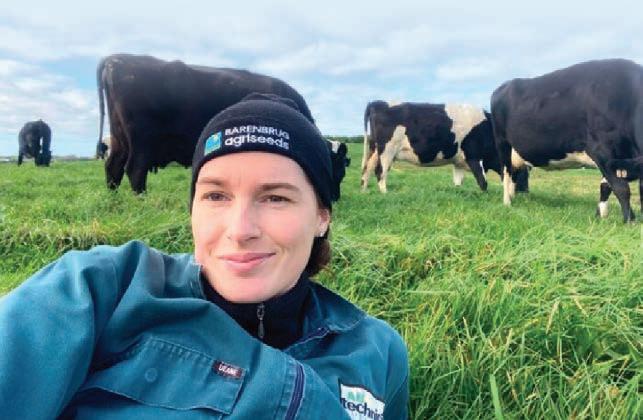
Where did Sophie grow up?
2 Where in NZ are Sophie and her partner currently sharemilking?
How many cows do they milk?
STRETCH YOURSELF:
1 What is their MS/cow (milk solids per cow)?



2 They are in the top 1% nationally for BW and PW. What does this mean?

3 How did they manage to grow their equity whilst contract milking?
4 Sophie also has a role as a after sales training specialist for Senztag for cow manager. What is Senztag?
5 Donovan also has a role/job off farm. What is this?
New technology using sexed semen may help produce a calf that has more value to both the dairy and beef sectors



Recently there has been a lot of talk about and some changes made to regulations and best practice regarding bobby calves. ST Genetics NZ has released technology that may help to curb some of the ongoing issues surrounding bobby calves.

To find out more head to https://www.farmersweekly.co.nz/ new-boys-in-town-as-male-sexed-semen-offers-control/


1 What is a bobby calf?
2 Why would being able to choose to breed male calves (alongside replacement heifers) be beneficial to dairy farmers?
3 What are the attributes of the breeds of bulls used that make them ideal for crossing over dairy cows?
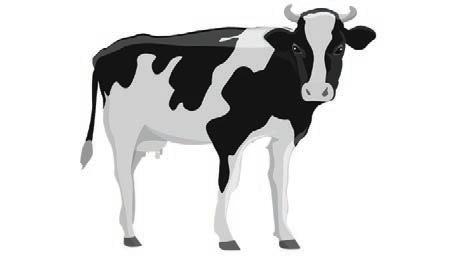

4 How will following some of the calves through the supply chain be valuable? What kind of information do you think they will collect?
Shed


Robo dairy fiction or fact?
An






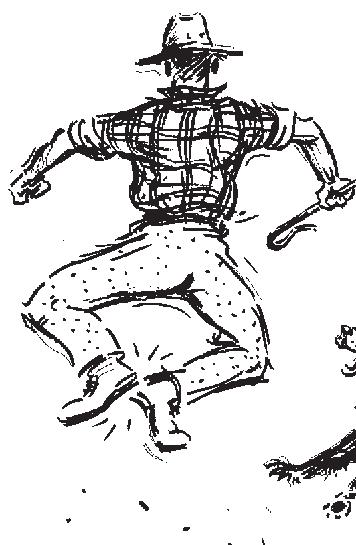





robotic
has been developed
with
STRETCH YOURSELF:

Mooving p P J F F U D Z H T Q K S E R I H S R Y A I Z B W K S C V J A I U O G F N Z Y P R C I U D Z R W G R X E T K V R E G B U U K T E R L H S X I H Z R M E Y L Y G K M M B G P P T L Q O H J U S Y I W M B D T A U I Y I E S S T Z D X H T O A I A H Z I C I W X U N W L P X U C D I V R X E V K R E X L R J J O T D V K A B V O Q F Q E U B I M P R R K R R D D P E J I S E M W F M I F P S K N S R L S W X J A K K L N E I J M H C U I N N Z K T I D O B P O I B H L G R V B B H R R E T H X V A N Z L D C W K O N R I G G K L I M M H B C F R E G X I T E O U B W J G M H C G X I B K A T D U T B T D Z H R V L D D Y K H V X L C B S C I T O B O R S A X L B G L J L E E X K L R I B P C D N X N R L I A S D S E G E J E F A Y R A V O X U N B E H D U A L J Q S S W N A C L Z U E W J A D T O S G S M G Z B A E O F T T Y E S R E J I E K U A H K X Q Z J M F Z X R A R E Q U H E R D L P M Z E J D J P F A S Q K T C X H L D U X F F Q L G A D U P N O I T A N I M E S N I L A I C I F I T R A Y A T C D V Z O L S F I Z M A S T I T I S P J E E Z F U L A N H W U U X S L X Y Y P Y K D Z U S S I N W P M R U B H Z W Z W X M O U V Q G T R X Y J J H O L S T E I N F R I E S I A N T G Q M V V Herd Protein Cow Heifer Milk Fat Milk Powder Butter Cheese Milk Robotics Milk Solids Artificial Insemination L t ti M titi H l t i F i i Are you a parent or teacher and want to receive AginED every week directly to your email inbox? Send us an email to sign up at agined@agrihq.co.nz Volume 127 I October 17th, 2022 I email:agined@agrihq.co.nz I www.farmersweekly.co.nz/agined
MOOVING ON UP
1
3
Herd Protein Cow Heifer Milk Fat Milk Powder Butter Cheese Milk Robotics Milk Solids Artificial Insemination Lactation Mastitis Holstein Friesian Herringbone
Milking Ayrshire Crossbred Jersey
To read more about it head to: https://www. farmersweekly.co.nz/robots-of-scale-at-worldsbiggest-robo-dairy/ 1 How many cows are they currently milking? 2 How many robots currently carry out the milking?
1 There are plans in place to expand the operation, what sort of numbers are they planning for? 2 They believe that there have been benefits with the robotic system. What are these? 3 They have an average of 45 litres of milk per cow daily. Do some research, how does this compare to NZ statistics? 4 When did the Heller’s begin dairy farming? When did they start using robotics? 5 What are some of the other diversifications and business opportunities that Agrícola Ancali are involved in? 6 Do you think that robotic milking is viable here in NZ? Why or why not?
enormous
milking operation
in Chile
intentions to expand the already sizeable operation. 27
Editor
Waka still a way from shore
Bryan Gibson Managing editor
THE good news is that the government has adopted the lion’s share of the plan put forward by the He Waka Eke Noa partnership.
The bad news is that the parts it left out are a major blow to farmers, especially in the sheep and beef sector, which was already going to be hit hardest by the plan.
Farm emissions were going to be priced, that was a given.


The split-gas approach has been retained along with the farm-level levy, which leaves individual farmers in control of their destinies – if they embrace mitigations, they’ll be rewarded.
But by chucking out some of HWEN’s recommendations on sequestration, a message has been sent that some trees count more than others.
The HWEN partnership was a giant step forward for agriculture. It was a commitment made to New Zealand by food
producers to account for the externalities of that production.
Those externalities have been missing from the ledger up until now, but the world is changing and society is demanding that industry – not just farming – adds those social and environmental costs to its business model.
Last week’s 2035 Agri-Food-Tech Oceania Summit in Auckland laid out in stark terms what global governments, businesses and consumers expect from the people who grow the food they buy.
Professor Andrew Campbell, CEO of the Australian Centre for International Agricultural Research, told delegates that such is the volatility of climate changes now taking place, the traditional “incrementalism” approach to development simply will not get food systems to where they need to be.
Richard Heath, executive director of the Australian Farm Institute, said that while a lot of people in agriculture say we need a sustainability framework to tell our story better, what we actually need is to be better.
But to be better, a business needs to be viable and its investors and managers need to be confident there’s a future path that’s exciting and worth striving for.
HWEN’s programme director labelled some of the government’s amendments unfair – saying that the socio-economic impact on rural communities is being pushed down the list of priorities.
In announcing the plan, ministers were at pains to emphasise the process is not yet finished and more feedback is being sought before final sign-off.
So now’s the time to engage with the process and push for all that work on farm over the years to be recognised.
It’s time to put forward a meaningful, compassionate case that accepts the challenge but gives hope to a larger section of the farming community.
Given our reputation as a sustainable food producer,
a transparent and meaningful
Belligerence and name-calling will not work. Arguing for the status quo won’t either.
If we take that route, too many people, here and abroad, will hear a message that we don’t care about owning our externalities.
Given our reputation as a sustainable food producer, having a transparent and meaningful system to account for emissions is important.
But creating a system that makes good farms into bad businesses isn’t the way to future-proof our biggest export earner.
Letters of the week
Tied up in knots over live exports
Tim Gilbertson Otane

CAN you believe it – on the radio this morning, Agriculture Minister Damien O’Connor explaining in sincere and earnest tones why live shipments have been banned. It’s because our reputation for world-leading, ethically unimpeachable safe food production is at risk if dodgy operators treat animals badly. Which is fair comment, but can be easily addressed by regulation and inspection. Plus the fact that it is largely self-policing. How long would a business survive if the product arrived dead or disabled? Everyone has an interest in impeccable animal welfare.
Next up, Damien comments on RSE workers coming from the islands. There is no guarantee that they won’t be ill-treated, underpaid, badly housed and generally abused by unscrupulous contractors and employers, as a number of court cases have recently shown. And this was the subject of a recent rebuke from the Samoan government.
But Damien has no clear policy on how to counter the risks such ill-treatment poses to our reputation for world-leading, ethically unimpeachable safe food production. Such as banning the live shipment of humans to and from New Zealand to eliminate just such a possibility .
So, by law, we cannot export live animals. Well, sort of. Because, hang on, we can liveexport horses to the Melbourne Cup. Why is the welfare of a horse different from a sheep or a cow?
The conclusion I draw from the utterances of the minister are that the welfare of live sheep and cattle on boats and planes is more important than the welfare of the live humans we import from Polynesia. Sometimes I feel sorry for politicians as I watch them tying themselves up in knots trying to justify immoral and irrational behaviour.
But I feel a lot sorrier for those whose lives and businesses they callously destroy for the sole purpose of keeping themselves in power.
Best letter WINS a quality hiking knife

28 Editorial
From the
Send your letter to the Editor at Farmers Weekly P.0. Box 529, Feilding or email us at farmers.weekly@agrihq.co.nz FARMERS WEEKLY – farmersweekly.co.nz – October 17, 2022 Opinion28
farmersweekly.co.nz We’re online NZ’s most trusted source of daily agricultural news and information is now a website.
having
system to account for emissions is important.
GHG levy the right move at the right time
Professor David Frame Director of the New Zealand
Climate Change Research Institute at Victoria University of Wellington
THE He Waka Eke Noa proposal to charge a levy in line with methane emissions is entirely in keeping with the theory of environmental policy, which prices pollution at the margin.
The idea of a price on agricultural methane emissions is well-justified, environmentally and economically.
All methane emissions elevate atmospheric concentrations of methane above the level we would observe in the absence of those emissions. This enhances or sustains the enhancement of the greenhouse effect, which in turn warms the world.
Therefore, the marginal contribution to warming from every ruminant is positive. On standard environmental economic arguments, it is this marginal contribution that environmental policy prices. For methane, the marginal contribution is strictly positive.
That said, the goals of a pricing scheme are not obviously to minimise pollution – or resource extraction in the case of things like fisheries quota systems – but to optimise it. Pricing emissions is a means to an end – and the end is set by an emissions target for methane.
Whether the current targets are well chosen is something over which there is and ought to be disagreement. In my view there was very little informed debate about either the 2030 or 2050 targets before they were chosen.
The 10% reduction in methane
emissions by 2030 is greater than that required to level off agriculture’s contribution to further warming. Seen through a contribution-to-warming lens, it asks the agriculture sector to reduce warming, while New Zealand’s CO2-economy is asked to only reduce the rate at which its warming grows. This is a social choice, and it is one about which urban and rural New Zealand might not agree.
Is it reasonable that the rural sector has to reduce its contribution to warming well before urban New Zealand halts its contribution to warming? Is it reasonable to ask NZ farmers to reduce the contribution their methane makes to warming, without making this, or future actions beyond 2030, contingent on similar action in other countries?


These are issues about which there will be reasonable disagreement, and which the political system will need to process. Expect little from the Climate Change Commission here – it is a body of ministerial appointees whose scope of analysis is set by the minister.
Another source of debate has been the relative contribution of sheep and beef versus dairy. The figure shown here gives emissions (megatonnes of CH4), concentrations (parts per billion CH4), radiative forcing (Watts per square metre) and warming (degC) arising from components of NZ’s ruminant agricultural emissions.
To show the effect of holding emissions at current levels, I have taken the 2016 emissions from each sub-sector and held them constant until 2040. (If emissions
Low Input High Production
Waimai rams are bred to



CRUNCHED: Farming trends and lags in the



much
were to change in future, then shares of warming would also change.)
The data shows that emissions from sheep farming were the main CH4-based emissions until the early 2000s, when dairying became the largest source. Concentrations, forcing and temperature contributions are all in the process of catching up. Combined, sheep and beef farming now emit slightly less CH4 than dairy.

Is it reasonable that the rural sector has to reduce its contribution to warming well before urban New Zealand halts its contribution to warming?

This is to be expected – because methane persists for a decade or so in the atmosphere, there is a lag between the emissions crossover and the concentrations crossover. There is no lag between concentrations and forcings, since forcing is a function of concentrations, but there is a lag between forcing and the climate response, since the climate system exhibits considerable thermal inertia.
Sheep and beef farming emits roughly as much methane as dairy farming, and is responsible for roughly as much warming, too.
Some have argued that sheep and beef farmers deserve credit for reducing emissions, but this
paint a different picture, but sheep and beef farming
farming, and is

is unconvincing: the reason for the growth in dairy emissions is that farmers have converted from sheep and beef to dairy. The decline in sheep and beef emissions is not the product of virtuous behaviour on behalf of today’s sheep and beef farmers, but because of economic decisions taken by former sheep and beef farmers who are now dairy farmers.
There are important issues of fairness in agricultural climate policy that deserve attention, and there are legitimate places where sheep and beef farmers may feel exposed. The basic price structure is reasonable. It is fair to argue over targets – and insisting on action by others as part of the deal is eminently reasonable.
For He Waka Eke Noa (HWEN) to work, and for you to avoid the emissions trading scheme (ETS) or a fate even worse, farmers and their communities need to empower and work alongside industry bodies. It will not be perfect. But it will be better than the conceivable alternatives if there is no deal. In that case the Ardern Government and its Green MP climate change minister will claim, and probably win in the court of public opinion, that they gave you a chance to show leadership, and you spurned it.
Provincial New Zealand wants a good outcome. Everyone wants to do their bit environmentally. And everyone wants flourishing rural communities, which are best guaranteed by the success

roughly
much warming,
of a mix of local farms across the whole spectrum of activities – from arable farmers and horticulturalists to sheep and dairy and beef farmers.
Communities are best able to weather the inevitable ups and downs of commodity markets if they have a healthy diversity of successful farms driving prosperous communities. So you have much to gain by succeeding.
The basic pricing structure that HWEN has arrived at is reasonable. It fits well with the economics of environmental policy. As policymaker learns about how much emissions respond to the price, they can tune it up or down to match the behaviour change they seek; something that would not be remotely possible if agricultural emissions were to be priced via the ETS.
OPEN DAY
ELITE RAM SALE
ALASTAIR REEVES 07 825 4925 or 027 457 3615 waimairomney@gmail.com waimairomney.co.nz
See our stock on-site at 841 Waimai Valley Rd Thursday 13 October, 10am–4pm
On-site 841 Waimai Valley Rd. Thursday 3 November, 1pm. We will also be using online auction platform bidr.co.nz Private treaty rams enquiries from 4 November. Waimai CharaBlack terminal rams available.
give you a low input flock, with selection for facial eczema tolerance, worm resistance, low methane, low dags and large breech. At the same time, their production traits make you money: strong growth, high fertility and good survival. Join us on our journey toward creating a more profitable low input sheep. 29 In My View
In my view ...
Got a view on some aspect of farming you would like to get across? We offer readers the chance to have their say. Contact us and have yours.
farmers.weekly@agrihq.co.nz Phone 06 323 1519
data may
emits roughly as
methane as dairy
responsible for
as
too. FARMERS WEEKLY – farmersweekly.co.nz – October 17, 2022Opinion 29
We have no option but to get HWEN right
Alternative view
agriculture in the ETS?
It is a blunt hammer in my view and the Paris Agreement specifically excludes food production.
In addition, as numerous research projects have confirmed, New Zealand is the most efficient in the world for producing food with a low-carbon footprint. We should be encouraged to produce food to save the planet and not be taxed for so doing.
Ukraine war there will be a major shortage in food production. On humanitarian grounds, should NZ be reducing food production?
I was intrigued by a comment at the recent Oceania 2035 summit telling me no country in the world is doing enough to reduce emissions to keep global warming below 1.5degC. The nearest, we are told, are Costa Rica and Ethiopia.
Neither exports food.
Alan Emerson Semi-retired Wairarapa farmer and businessman: dath.emerson@gmail.com
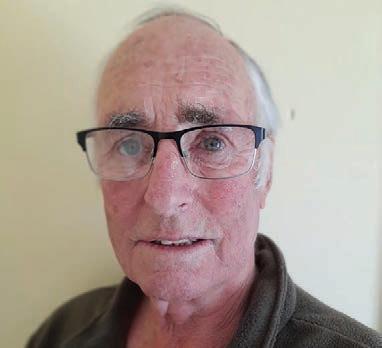
WE’VE had the government response to He Waka Eke Noa, and while it’s predictable it still leaves many questions.
For the uninitiated “He waka eke noa” means “We are all in this together”.
The HWEN partnership was formed just three years ago, in 2019, “to design a practical, credible and effective system for reducing emissions at farm level as an alternative to the agricultural sector entering the Emissions Trading Scheme”.
My immediate response to that is to ask the government, why you would contemplate including
We’re told that green food will get a premium in high-price markets. I’d suggest that NZ is already doing a lot of positive work in that area. I also acknowledge the trade barriers that could be lowered but suggest that would be politically inspired as inevitably happens, and not based on science.
Just to correct one fallacy by the opponents of food production, it is not the number of animals that create greenhouse gases but the food they eat. Healthy animals have fewer GHG emissions.
The government announcement starts by claiming the proposal would see “NZ leading the world on reducing emissions and help give NZ a competitive advantage in a green-conscious marketplace”.
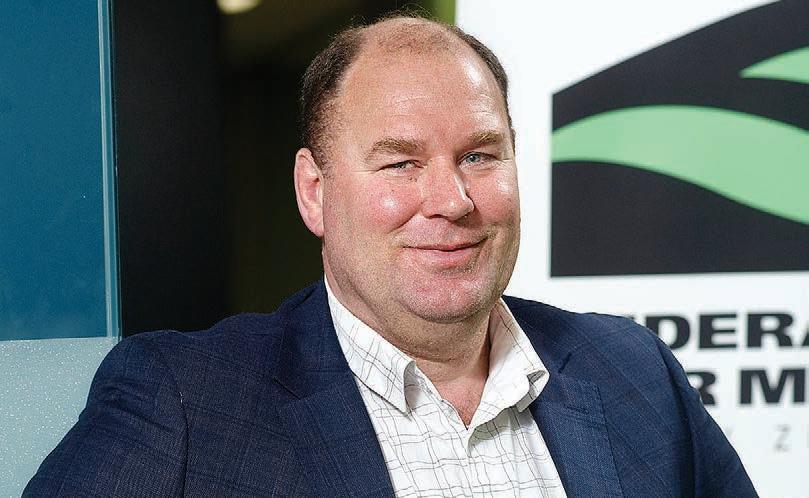
My take on that is to ask why NZ should be leading the world, and how green-conscious is the marketplace?
My second issue is to wonder how real the green advantage is?
On one hand we’re producing food for a hungry world. Courtesy of the
On the positive side I’m pleased that the government is pricing emissions at the farm level and using a split-gas approach. It is also encouraging that all moneys raised will be recycled back into the primary sector. On top of that the government, supported by our big agricultural companies, is investing many millions in researching GHG mitigation. I’m confident that will pay dividends. I’m reassured that consultation with the sector will be ongoing.
The reaction to the proposals has been interesting.
Federated Farmers aren’t happy as they claim the proposals will “rip the guts out of rural communities” and that the government model “doesn’t look at the impacts on rural communities”.
In addition, they claim that modelling shows an 18% to 20% reduction in new revenue on sheep and beef farms and 6% to 7% with dairy.
If those figures are correct it will certainly rip the guts out of rural
communities. The sheep and beef sector is stressed now. An 18% to 20% drop in revenue would be a body blow.
Feds also don’t agree that the scientific data concerning methane is robust.
Their other areas of concern cover farmers forming collectives, which makes sense. Farmers are being run ragged with formfilling now. Anything that reduces that pressure has to be good. Unfortunately the government has restricted the collective option to Māori.
With sequestration there’s concern that the government has reduced what’s eligible and increased the complexity of claiming it. It’s a sentiment shared by Beef + Lamb NZ and DairyNZ.
Finally, Feds believe that the mechanism for price-setting is too narrow.
Conversely, Greenpeace is apoplectic – as you’d expect.
It wants to ban synthetic fertiliser, halve the dairy herd and embrace plant-based organic farming.
Spring is sprung, the Wyn is on the bird
JUST like in Noah’s day, the rain stopped, the sun came out and things dried out. It feels so good.
“Spring is sprung, the grass is riz,
I wonder where the birdies is. They say the bird is on the wing.
Ain’t that absurd?
I always thought the wing was on the bird.”
A poem from my youth and possibly familiar to many of you.
For a long time I thought my father had written it, so fond was he of quoting it at this time of the year.
Then I mistakenly came to believe it was written by Ogden Nash, but its real author is lost in the mists of time.
The poem captures the joy and rebirth that spring brings, especially after a troublesome winter like what we have experienced.
The birdies are in full force around here.
The grey warblers or riroriro have been trilling away since late July as they raise their first clutch of chicks.
They have to start early because when the second clutch of eggs is in the nest, the feckless shining cuckoo or pipiwharauroa wings
in from its winter holiday in the Bismarck Archipelago (New Guinea) and Solomon Islands, finds their nest and lays a single egg in it.
The same cuckoos target the same hapless grey warblers each year.
When that chick hatches it performs acts of fratricide and sororicide on its step-siblings by booting their eggs or the hatchlings out of the nest to die a miserable, lonely death on the ground. Bastards.
Then the poor grey warblers, which along with the riflemen are our smallest native bird, spend the rest of spring carting food to this voracious parasite who cries out in
his repeated whistle, which ends on a downward note, as he calls for more and yet more food.
The sparrows are doing their annual falling down the flue now that we don’t have an all-day fire going.
They are too quick to catch when I open the door, so I get them when they smack into the window.
I decided I had a repeat offender so the other day I carefully tucked it into my jacket pocket as I was heading down to the other farm, where I liberated the blighter.
I doubted sparrows have the homing instincts of a pigeon.
Next morning brought the familiar fluttering in the wood box. When I caught it to let it outside,
I regretted not having sprayed a bit of colour on the bird the day before. To be honest, one sparrow looks much the same as another to my eye.
I climbed up onto the roof and put chicken netting over the top of the flue.
The welcome swallows are not that welcome when they build their mud nests in my workshop, but I tend to leave them alone.
I’m not so benevolent with the starlings and keep removing the large amount of material they bring into my sheds to build a nest.
They are very persistent. It becomes a game of who gets tired first.
Usually it’s me, and then I must put up with the mess that accrues.
Recently I spotted a pūkeko sitting on a nest beside my lane.
I believe it is the male who does the incubating. The nest had 12 eggs in it.
I debated whether I should enclose it to protect the bird and its eggs, but it looked secure, and I thought intervention might scare the bird off.
Every day or two I’d slow down as I passed to have a peek and he became quiet, only moving a few metres away.
Unsurprisingly, I disagree. There’s much commentary about how the scheme will increase food costs.
Politically, National has criticised the government scheme but hasn’t suggested any alternatives. The ACT Party has certainly stepped up on this one.
Going forward from here will be fraught. Feds, to their credit, are canvassing members’ views and will represent those views to the government.
The question is vexed. On one hand as the world’s most efficient food producer should we be wearing a hair shirt and exporting our pollution offshore?
On the other, should we be embracing the modified HWEN as a means of accessing more highpriced markets?
I’ll give the last word to our local Labour MP, Kieran McAnulty, who said: “I genuinely believe that everyone wants to get this right. If people walk away now, how on earth are we going to get it right?”
I agree.
From the ridge
Steve Wyn-Harris Central Hawke’s Bay sheep and beef farmer: swyn@xtra.co.nz
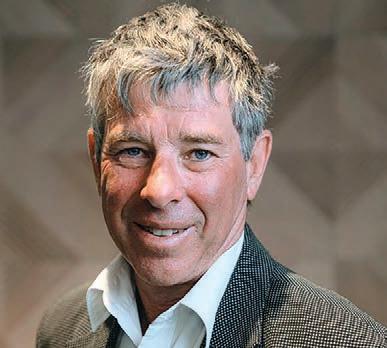
One day four of the eggs had been knocked out of the nest, either on purpose or accidentally.
The next time I looked they had been gathered up into a group beside the nest.
I was anticipating the hatching of the remainder as there is nothing cuter than the little ball of fluff on the long spindly legs of a baby pūkeko.
Then one day all the eggs had been broken and eaten and the pūkeko had gone.

I kicked myself for not setting some traps nearby for marauding mustelids and rats.
But the ducks around have been successful, with several carting ducklings around in their wake.
A time of rebirth, and the wonder of it from my youth remains.
30 Opinion FARMERS WEEKLY – farmersweekly.co.nz – October 17, 2022 Opinion30
HARD TO STOMACH: Federated Farmers president Andrew Hoggard says the government’s response to He Waka Eke Noa amounts to proposals that will rip the guts out of rural communities.
RATS! A broody pūkeko dad had a rough start to the season on Steve Wyn-Harris’s farm.
Rotation turns forestry reckoning around
The braided trail
three people invited to review an earlier draft. As external reviewers, our task was to identify weaknesses and make constructive suggestions for improvement, and our names are publicly acknowledged at the start of the note. But none of us had responsibility for the final content. It is Upton’s paper, supported by his internal professional team.
In the first two introductory paragraphs, Upton puts forward a fundamental philosophical issue that others have failed to address.
Keith Woodford MD at AgriFood Systems kbwoodford@gmail.com
PARLIAMENTARY Commissioner for the Environment Simon
Upton says there are good reasons to allow forestry offsets for methane rather than for fossil fuels.
In his role as Parliamentary Commissioner for the Environment, Upton has produced a new “note” for Parliament exploring the possibilities of using carbon sequestration from forestry to offset methane emissions.
It is an interesting and some might say provocative paper.
Upton was an MP for close on 20 years and a minister in the Bolger and Shipley Cabinets, including more than six years as minister for the environment. Then he headed overseas, working for the OECD. In 2017 he was appointed in the last year of the National Government to an initial five-year term as Parliamentary Commissioner for the Environment.

In that current role, Upton reports to Parliament itself and not to any minister. This distinction is important because his role is intended to be nonpolitical. In this role, he has the freedom to roam widely, exploring issues he thinks are of fundamental importance, without ministerial direction.
The MPs of all political parties are the first audience for his reports. This means there is a need to write for people who have no science training but who, one hopes, are keen to get to the essence of issues that are important to New Zealand’s future.
This particular “note” (as he calls it) makes no recommendations. Instead, the focus is on educating people as to the issues. The terminology of a “note” relates to the idea that it is intended to inform and generate debate rather than to make specific recommendations. Despite the terminology suggesting it might be a short document, it is still 49 pages long and not an easy read.
There is a shorter version of nine pages, but readers of the short version should be wary of thinking they have the issues nailed down.
I have a particular interest in this note in that I was one of
“New Zealand’s emissions reduction targets for 2050 were enshrined in legislation in 2019. When setting these targets, the Government decided that forestry offsets would be counted towards the target for fossil carbon dioxide and other long-lived greenhouse gases (net zero by 2050), but not the emissions reduction targets for biogenic methane (a 10% reduction by 2030 and a 24–47% reduction by 2050, relative to the 2017 level).
The rationale behind the important and far-reaching decision to have a net target for long-lived greenhouse gases but a gross target for biogenic methane was never satisfactorily explained.
“Why should emitters of carbon dioxide in the fossil-fuelbased economy have access to New Zealand’s limited supply of forestry offsets to assist them in meeting their emissions reduction target, but not emitters of livestock methane in the landbased economy?”
A key point here is that the 2050 net zero for carbon dioxide still allows a large volume of carbon dioxide emissions to be emitted.
Further on in the report, Upton says: “In the Climate Change Commission’s ‘current policy reference’ scenario, gross carbon dioxide emissions are reduced by 11% by 2030 and 37% by 2050.”
This illustrates that the “net zero” figure for carbon dioxide bandied about so much by politicians and the media only sounds impressive because sequestration from forests is assumed to offset all of the very substantial remaining carbon dioxide emissions, primarily from the energy and transport sectors. In contrast, the lack of offsets available for methane makes the methane figure look bad in comparison.
The alternative perspective that Upton has been putting forward, both here and previously in 2019 in a 189-page report called Farms, Forestry and Fossil Fuels, is that the land-based economy should be considered as an entity.
Given that forestry and farming compete for the same land, there is a logic to that. In contrast, it seems unreasonable that the rest of the community should be able to offset its emissions by singling out forestry from the overall landbased economy, to make it look good in relative terms.
Upton writes in the note about the contribution of New Zealand agricultural emissions to global
warming. He makes the point that the best estimates – which, I add here, does not necessarily mean they are correct, because there are lots of uncertainties – are that NZ’s historical agricultural emissions have added 0.0015degC to the current global climate.
Given that forestry and farming compete for the same land ... it seems unreasonable that the rest of the community should be able to offset its emissions by singling out forestry from the overall land-based economy, to make it look good in relative terms.
At one level this figure seems totally trivial, but that is influenced by the world being big but New Zealand being small. NZ also makes up less than 0.1% of the world’s population, and on a per capita basis our emissions are certainly not small.
Upton then points out that even if methane emissions decrease, with this leading in time to a reduction in the level of agriculturally sourced methane in the atmosphere, there would still be ongoing warming effects due to lags in the temperature response function.
In the second part of the paper, Upton explores how much forestry would be needed to take the total emissions from the land-based sector, from both short-term and long-term gases, down to net zero. The answers are daunting. But before discussing that, it is important to acknowledge an assumption made by Upton that all of the new forests will be approximately 28-year production forests. I will return to that assumption later.

Upton looks at the net-zero question using two different metrics, both focusing on 2050 as the initial target date. The first is the GWP100 measure of emissions, which is the official international method used for comparing short- and long-lived gases.
The second measure focuses on the amount of further warming, which is not the same as the level of emissions, to ensure that the land-based sector is not adding to warming after 2050.
That second analysis uses the principles that underpin the alternative GWP* metric.
Using the GWP100 measure, Upton reports that NZ would need to plant approximately 4 million hectares of new pine forests progressively over the next 100 years to balance current methane emissions. Using a warming metric based on principles set out in the alternative GWP* metric, NZ would need to plant slightly less at 3.9 million hectares, but with all of this occurring by 2050 and none thereafter.
Not surprisingly, Upton then concludes in his final paragraph: “This work shows that very large areas of forest would need to be planted to make any significant dent in the marginal warming effect of New Zealand’s livestock methane emissions. For that reason, if forest planting were to be used to offset livestock methane, it would have to be in addition to – not instead of –reducing national gross emissions of biogenic methane by 24–47% by 2050. We cannot simply plant our way out of this problem.”
My own conclusion is somewhat different. This is because Upton’s starting point has been to assume production forestry with approximately 28-year rotations, for which the average sequestration over multiple cycles is equivalent to only 16 years of initial growth. This short-rotation assumption leads inevitably to his results and conclusion.
The conclusion would be different using long-rotation forests or so-called permanent exotic forests, possibly transitioning eventually to native forests. For example, with permanent forests the sequestered carbon can be five times that of the average under shortrotation forests. Accordingly, his conclusion should have been that we cannot plant our way out of this problem with short-rotation forests.
My second conclusion reflects Upton’s long-held perspective that there is a logic associated with using forestry to balance emissions within the land-based sector instead of as a get-outof-jail card for the energy and transport sectors. If we accept that proposition, which has considerable merit and is worthy of consideration, then there is a lot more analysis needed as to alternative pathways forward and their effects on all sectors of the economy. I hope that Upton takes up those challenges.
In seeking out those alternative pathways, we should never forget that more than 80% of New Zealand’s merchandise exports derive from the primary industries, and approximately half of those total exports derive from methane-emitting ruminants. Without vibrant export industries, as a nation we are in big trouble.
31 FARMERS WEEKLY – farmersweekly.co.nz – October 17, 2022Opinion 31
INTO THE WOODS: Simon Upton says ‘We cannot simply plant our way out of this problem’ – but that surely applies only to short-rotation forests, says Keith Woodford
Fonterra’s most frequent flyer comes back to earth
KELVIN Wickham may be the highest-profile senior executive at Fonterra who has travelled to every product destination country and met all of the biggest customers – who number in their hundreds.

That globe-trotting prospect attracted him to the dairy industry more than three decades ago and has been fulfilled in sales and marketing management for 20 years with Fonterra.
He will step down in December from the post with the longest title – chief executive officer for Africa, Middle East, Europe, North Asia and the Americas (AMENA).
Wickham has been everywhere and seen it all, building institutional wisdom which he is passing on before departing.
“I inherited some of that knowledge and experience from my predecessors who had to get out, find and build new markets.
“The ingredients core of Fonterra is still very important, along with the innovation pipeline and our people that make the difference.
“They get up early every day in China or Chile, they go to work 24/7 in our processing plants, and of course farmers are getting up early every day to milk cows.”
“That is what I will miss the most, the big internal family and the wider family of customers.”
As the longest-serving senior team leader, mostly in the NZMP
division, what has been the value of that longevity to the company?
He recalls the recent strategy review and the culture and environment established by CEO Miles Hurrell to bring in all available experience and insights.
“You were listened to, and your views were mixed with newer concepts.

“I feel constantly challenged by the younger execs who ask, “Why can’t we do it that way?’
“My role recently hasn’t been telling people what to do but asking if they have thought about this or that, offering advice.




“The next generation face different challenges – it is not about finding volume markets, it’s about creating more value and working with customers on specific needs.”
Wickham came from Whakatāne, where Ōhope Beach is his tūrangawaewae, and gained a degree in chemical engineering before joining the Dairy Board graduate programme and finishing a master’s in management and a diploma in dairy science and technology.
His first overseas posting was in Singapore, where he met his wife, and they were in Germany when Fonterra was formed.
He was the senior Fonterra executive in China during the false botulism recall in 2013, a very challenging time for good relations between the company and its largest customers, and especially

They get up early every day in China or Chile, they go to work 24/7 in our processing plants, and of course farmers are getting up early every day to milk cows. That is what I will miss the most, the big in ternal family and the wider family of customers.
Kelvin Wickham Fonterra
the Chinese Government.
He also led the establishment of Global Dairy Trade in the wake of the global financial crisis in 2008, when the world was full of naysayers and dairy prices bounced around like yoyos.
Price stability has followed with price transparency and the futures market developed, helped considerably by the end of European intervention and stockpiling.
Volatility still exists, however, perhaps plus or minus $2/kg
heirloom baby blankets






milksolids at the start of each season.
“The milk price is more consistent and it stays within a range, but it is not immune from shocks.”

Twenty years ago the dairy trading world was much smaller and protected, and Wickham emphasises the various free trade agreements and the rise in purchasing power in economies that now want dairy.
He recalls the somewhat frantic efforts of the Dairy Board to sell to the Soviet Union, Venezuela, Algeria and Mexico.
“Now we can afford to be more selective, and we don’t have to chase every market.
“It should reduce price volatility because we sell to markets that most value what we have.”

After a long summer back at Ōhope, the Wickhams intend to return to Europe where Kelvin will consider executive roles or governance with other food companies, hopefully NZ ones.
The AMENA division is being combined with Asia/Pacific division and brought under the leadership of Judith Swales.
That restructuring anticipates the sale of Fonterra’s South American businesses, and is not the reason for Wickham’s departure.
“I will certainly miss everyone in Fonterra and the dairy industry, but it is also time for me to move on,” he says.
Recently Wickham has been overseeing the active living markets for dairy components like whey protein concentrate, a division that now led by Komal Mistry-Mehta.
Will the future of dairy lie in components rather than commodities?

“Functional proteins and other components are where added value can be found but the core products provide scale and efficiency, along with the supply chain to the world.
“We will look for complementary uses and keep an eye on fermented dairy products.


“We have to invest in sustainability to meets the needs of global customers.
“NZ has the lowest carbon emissions per litre of milk but we can’t rely on that as the opposition is catching up.”
Premium New Zealand Merino
www.naturesgiftforbaby.com At Natures Gift For Baby we believe the key to a good nights sleep is a great blanket! Gentle on Baby’s skin and gentle on the environment. 5 timeless colours. $99ea LK0113340© Free deliverywithinNZ 32 People FARMERS WEEKLY – farmersweekly.co.nz – October 17, 2022 People32
Kelvin Wickham, the longest-serving member of the senior management team at Fonterra, will be leaving at the end of the year. He reflected on 34 years in the dairy industry with Hugh Stringleman.
HAPPY CUSTOMERS: Chief executive officer for Africa, Middle East, Europe, North Asia and the Americas Kelvin Wickham has quartered the globe and shaken a lot of hands in his time with Fonterra.
Red meat outstanding in its field – study
Going from the laboratory to the family dinner table, a multiyear research programme looked into the relative nutritional benefits of grass-fed beef and lamb, and plant-based alternatives. Annette Scott found out why grass is so great.
ANEW ZEALAND research programme has found pastureraised beef and lamb beats both grain-fed beef and plant-based alternatives when it comes to health and wellbeing benefits for consumers.
The four-year programme brought together researchers from AgResearch, the Riddet Institute and the University of Auckland and included two ground-breaking clinical trials to look at the impact of red meat on the diet.
The clinical trials assessed the physical effects on the body from eating beef or lamb raised on grass, grain-fed beef and plantbased alternatives, and looked at measurements of wellbeing such as satisfaction, sleep and stress levels.
Consumers are getting a lot of messages about food and nutrition and many of these messages are unfounded.
Fiona Windle BLNZ
The project was led by the Meat Industry Association’s innovation arm and jointly funded with Beef + Lamb NZ, as well as the HighValue Nutrition National Science Challenge and the Ministry of Business, Innovation and Employment.
The trials were a departure from much of the global research on the health, nutritional and environmental aspects of red meat, which tends to be based on the product of intensive grainfinished farming systems.

“The idea was to investigate the health consequences of humans consuming either grassfed beef or lamb and comparing that to these other alternatives that are increasing in the market such as meat analogues,” Andrea Braakhuis, research dietician at the University of Auckland, says. She says it was important the research provided moderate amounts of red meat based on a healthy diet in a practical and realistic situation to bring out both the positives and negatives of consuming red meat as part of healthy diet.
The study found the plantbased alternative tested had lower protein digestibility than the grass-fed and grain-fed beef.
In the lamb and two beef meats researched, the essential amino acid response was much higher compared to the meat alternative even though the total protein was similar.
The amount of amino acid absorbed from the three red meat options was much higher than has been shown in human participants before, Braakhuis says.
Massey University investigator Lovedeep Kaur found that during digestion the pasture-raised beef released lower levels of saturated fatty acids or the saturated fats that are linked with adverse health outcomes, compared to the grainfinished beef.
“The pasture-raised beef also released higher levels of omega-3 fatty acid such as DHA and EPA, which are linked with better health outcomes,” Kaur says.
AgResearch senior scientist Scott Knowles says that what New Zealand does well is grow grass.
“We’ve got the sunshine, we’ve got the rain, we’ve got the land
BITE ME: The plant-based alternative tested had lower protein digestibility than the grass-fed and grain-fed beef, the study found.

and so the animals are pretty lowimpact on environment and lowimpact on water usage.”
Animal welfare benefits when the animals are free range.
“When you look at it with the kind of depth that we were able to with our advanced analytics, that’s when you see that a whole food is full of things, all manner of compounds that are part of what our body needs,” Knowles says.
“One of the trump cards for red meat is its mineral content. People think of it as a source of protein –well of course it is – but because it is a whole food it encompasses a number of nutrient categories,” Knowles says.
The head of nutrition at Beef + Lamb NZ, Fiona Windle, says red meat is recognised for its nutritional quality, providing quality protein and essential
micronutrients such as iron, zinc and vitamin B12.
“These all contribute to health and wellbeing, things like energy levels, immune function, and growth and development in children.
“New Zealanders and general consumers are getting a lot of messages about food and nutrition, and many of these messages are unfounded,” Windle says.

The initial stages of the programme were led by AgResearch and the Riddet Institute.
AgResearch developed nutritional profiles and the Riddet Institute conducted lab-based digestive analysis of the products.
Results from these two studies provided baseline data about pasture-raised beef and lamb and its consumption in comparison to other foods.
University of Auckland researchers then oversaw the final two stages, which consisted of clinical trials investigating both the short-term and long-term wellbeing and health benefits of red meat consumption.
The highlight of the programme, a sustained clinical study, had members of 40 households on a managed flexitarian dietary regime over 10 weeks.
The participants were monitored over the course of the study and changes in health status, behaviours and attitudes and perceptual wellbeing were recorded.
Windle says the results from the research programme will help inform discussion on foods that fit in the diet today and diets in the future, all as a part of the New Zealand red meat story.
33 Tech FARMERS WEEKLY – farmersweekly.co.nz – October 17, 2022Technology 33
DIP IN: A whole food such as beef is ‘full of things, all manner of compounds that are part of what our body needs’, researchers say.
MANAGED FLEXITARIAN: Andrea Braakhuis, a research dietician at the University of Auckland, says the research provided moderate amounts of red meat based on a healthy diet in a practical and realistic situation.
The incline, Raumati and Huiarangi organic dairies

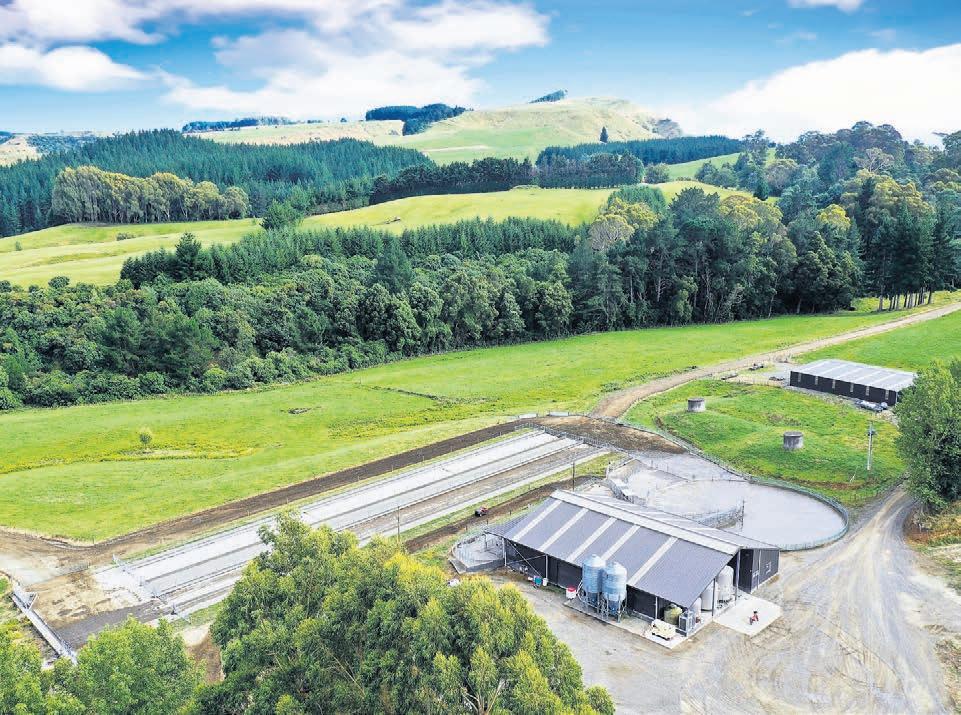

bayleys.co.nz The Incline Raumati Huiarangi Hawke's Bay Organic Dairy Farms, Patoka 1,070.997ha Tender (unless sold prior) Closing 4pm, Wed 9 Nov 2022 17 Napier Road, Havelock North View 10.30am-3pm Wed 19 Oct or by appointment Tony Rasmussen 027 429 2253 tony.rasmussen@bayleys.co.nz EASTERN REALTY LTD, BAYLEYS, LICENSED UNDER THE REA ACT 2008
The incredible opportunity to purchase one, two or three of arguably the best contoured dairy units in the reliable Patoka District is one not to let slip. Located only 45 minutes from Napier, The Incline boasts 324ha of mainly flat land, a 40-bail rotary, two feed pads, excellent shedding with four very well-maintained dwellings and an airstrip. There is also the option to purchase in 168ha or 155ha portions. Raumati is a 458ha farm, mainly easy to flat contour, boasting a 2008 built 60-bail rotary, 600 cow feed pad, large calf rearing sheds and three dwellings. Huiarangi is 287ha of near flat platform with a well specified 50-bail rotary shed, large cattle yards, implement/hay sheds and four dwellings. The free draining, fertile ash soils coupled with the fantastic infrastructure provide the foundations for a fantastic return on investment on all of these farms. A must view. bayleys.co.nz/2853079 Property
Outstanding coastal investment
Located above the playground that is Rapiro Beach
this
dairy farm.
into 15 accessible, freehold titles ranging from 12 to 25 ha’s. The easy rolling contour and fertility
for an array of supplement to be grown and harvested on the property. The 41 aside herringbone
with the usual farm infrastructure to support a dairy unit of this size. Given the coast aspect and the sweeping views over the Tasman Sea the property offers so much more than just a dairy unit. With options aplenty do not hesitate to call and arrange a private viewing.


Totara Park Farms - prime investment


First time on the market in 76 years this self-contained 356ha (STS) dairy unit developed to the highest standards is situated in one of Northland's premier locations. Currently run with a 50/50 sharemilker, 450 cows all Autumn calving with winter milk contract in place, consistent production is around 180,000kgMS. Featuring an excellent array of well-maintained improvements including 30ASHB shed, 300-cow feedpad, two silage bunkers, large cattle yards, and impressive shedding with calf rearing facilities, plus three well-maintained homes. The dairy platform comprises 227ha with an adjoining support unit of 129ha. Just 8km from Mangawhai village and handy to schools, east coast beaches with an easy commute to Auckland City. A special opportunity in a sought-after location ensures a very desirable acquisition investment for the future. bayleys.co.nz/1050745


Auction (unless sold
17 Nov
Queen Street, Warkworth
by
35 bayleys.co.nz Boundary lines are indicative only Dargaville 550 Mahuta Road 8 4 4 6 Tender (unless sold prior) Closing 4pm, Wed 16 Nov 2022 Level 1/79 Cameron Street, Whangarei View by appointment Todd Skudder 027 439 1235 todd.skudder@bayleys.co.nz MACKYS REAL ESTATE LTD, BAYLEYS, LICENSED UNDER THE REA ACT 2008
lies
stunning 245ha coastal
Subdivided
allows
is complemented
bayleys.co.nz/1020781
Mangawhai
168 Valley Road 356ha
prior) 10am, Thu
2022 41
View
appointment Lin Norris 021 959 166 lin.norris@bayleys.co.nz MACKYS REAL ESTATE LTD, BAYLEYS, LICENSED UNDER THE REA ACT 2008
Large-scale dairy with multiple lease options
Here is an opportunity to purchase a highly profitable, 160-hectare (more or less) farm, supplying Open Country Dairy. Add to this the option to customise with three additional leases: expand your platform with 61ha near the shed, 54ha for a run-off right next door, or 73ha over the Puriri Stream for a cut and carry block or additional milking platform if you are looking to maximise production. Water on the farm is currently supplied by a dam which is located on the 54ha lease block, if the lease isn’t for you then the farm has been set up with a metered council connection. The farm is flat to easy in contour with soils being a mixture of sought-after Waihi ash, clay loam, and river silt loams. The housing comprises a solid brick four-bedroom home, with a self-contained unit downstairs which is suitable for an owner-operator or staff if you’re considering the property as an investment. bayleys.co.nz/2313773
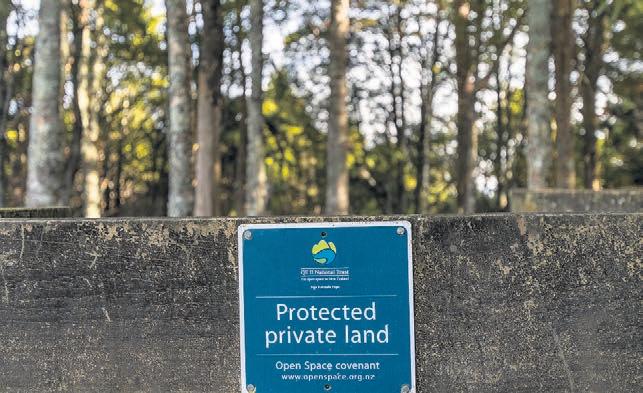



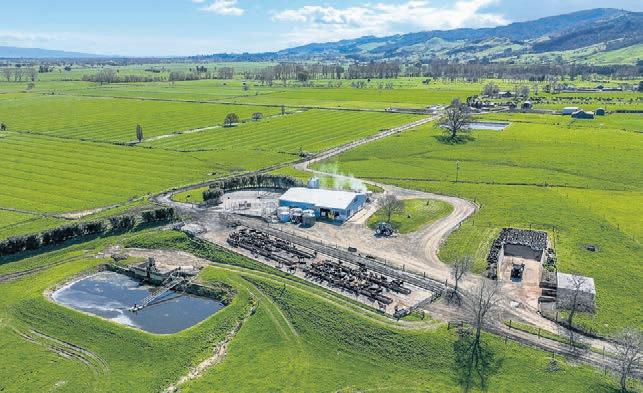

Tender (unless sold prior)
Closing 4pm, Tue 15 Nov 2022
Ulster Street, Hamilton View 10-11am Thu 20 Oct Karl Davis 0508 83 83 83 karl.davis@bayleys.co.nz
Carter 027 696 5781 lee.carter@bayleys.co.nz
Once in a generation sheep and beef opportunity
Rarely does an opportunity present itself to purchase such a superbly maintained and faithfully farmed large scale sheep and beef farm. Home of the highly regarded Kokonga Hereford Stud comprising 160 m/a cows plus 4,300 m/a ewes and 650 18-month steers. Originally two farms that have been amalgamated into 1,296ha, the property is operated efficiently with an interconnecting laneway and duplicate sets of improvements. The rolling to easy contour with excellent limestone and ash soils and long fertiliser history ensures quality pastures all year round. The farm also enjoys a 65ha QEII covenant block of stunning native bush. There are four dwellings on the property to comfortably suit an owner, manager and support staff. Kokonga is an impressive farm that has been farmed faithfully yet conservatively and is a once-in-a-generation opportunity in the reputable Waikaretu Valley. bayleys.co.nz/2313745
bayleys.co.nz
Boundary lines are indicative only - Lease 73, 61 and 54ha) Main dairy Puriri 81 Station Road 160.61ha 8 4
96
Lee
SUCCESS REALTY LIMITED, BAYLEYS, LICENSED UNDER THE REA ACT 2008
Waikaretu 379 Kokonga East Road 1,269ha 3 3 Tender (unless sold prior) Closing 4pm, Tue 15 Nov 2022 Bayleys House, 30 Gaunt Street, Auckland Central View 11am-1pm Tue 18 Oct, Fri 21 Oct & Tue 25 Oct or by appointment Peter Kelly 027 432 4278 Duncan Ross 021 663 567 SUCCESS REALTY LIMITED, BAYLEYS, LICENSED UNDER THE REA ACT 2008 BAYLEYS REAL ESTATE LTD, AUCKLAND CENTRAL, LICENSED UNDER THE REA ACT 2008
34
No frills production unit
equipped
with
out from the dairy to
round barn with lean-to, three
effluent system, with
extensive
and multiple
Attractive dairy farm with scale



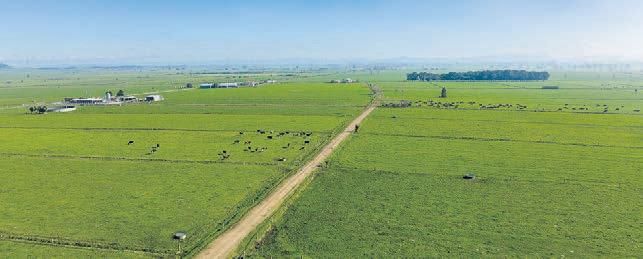

very nice main home and tidy 36 bale rotary cowshed are features of this well contoured dairy farm. Other that a few lahars this farm of 132.12 (more or less) hectares is largely flat with with over 75% mowable. The rotary cowshed was fitted with a new platform and plant in 2013 and is installed with cup removers, automatic teat sprayers and mastitis detectors. The cowshed also has an in-shed feed system. 300 Cows were milked in the 2021/22 season. The four-bedroom home with an office, two bathrooms and extensive garaging is very impressive. This home had a major makeover in 2016. The tidy three-bedroom second dwelling is 95% double glazed and has also recently been renovated. Ample farm sheds of varying sizes compliment the farm, races are in very good order and a new effluent system has just been installed. bayleys.co.nz/2601274


37 bayleys.co.nz NEW LISTING Orini 261 Flaxmill Road 132.8815ha 3 1 Auction (unless sold prior) 11am, Thu 17 Nov 2022 96 Ulster Street, Hamilton View 12-1pm Wed 19 Oct Mike Fraser-Jones 027 475 9680 mike.fraserjones@bayleys.co.nz Scott Macdonald 027 753 3854 scott.macdonald@bayleys.co.nz SUCCESS REALTY LIMITED, BAYLEYS, LICENSED UNDER THE REA ACT 2008
With most of the capital expenditure having been done, excellent farm layout and good infrastructure, this unit provides a great productive and sustainable dairy operation. Currently milking 330 cows through a well-
30ASHB
an average production of 142,464kgMS over the past three seasons. Central laneways fan
all 75 paddocks. An
array of shedding includes a large five bay O’Neil half
bay workshop,
calf rearing sheds near the working hub plus three dwellings. The
yard master pump and large Kliptank, provides ample storage and containment when required then fed to a travelling irrigator covering 35 hectares. Water is sourced from a bore with submersible, pumped through a sand filter to a manacon and pressure fed around the farm to all paddocks. bayleys.co.nz/2313598 NEW LISTING Oaonui 681 and 703 Upper Kina Road 7 1 2 6 Tender (will not be sold prior) Closing 1pm, Fri 18 Nov 2022 15 Courtenay Street, New Plymouth View by appointment John Blundell 027 240 2827 john.blundell@bayleys.co.nz Brendan Crowley 027 241 2817 brendan.crowley@bayleys.co.nz SUCCESS REALTY TARANAKI LTD, BAYLEYS, LICENSED UNDER THE REA ACT 2008
A
Scale, contour, development
Located just off the Napier-Taihape highway, Mangaohane Station offers a rare mix of scale and balance of country, together with a high standard of productive improvement to provide a track record of consistent stock carrying capacity. Around 2,600ha of country has been cultivated and developed. This combined with an excellent water scheme, piped to 320 troughs in most of the station’s 140 main paddocks, has supported circa 40,000 quality stock units over the past few winters. The station has a full complement of buildings, and is located between the pristine Rangitikei River, renowned for its trophy brown trout and the Ruahine Forest Park. The sale of Mangaohane presents a rare opportunity to own one of New Zealand’s iconic sheep and beef cattle stations. Inspections by qualified purchasers only. bayleys.co.nz/2853087

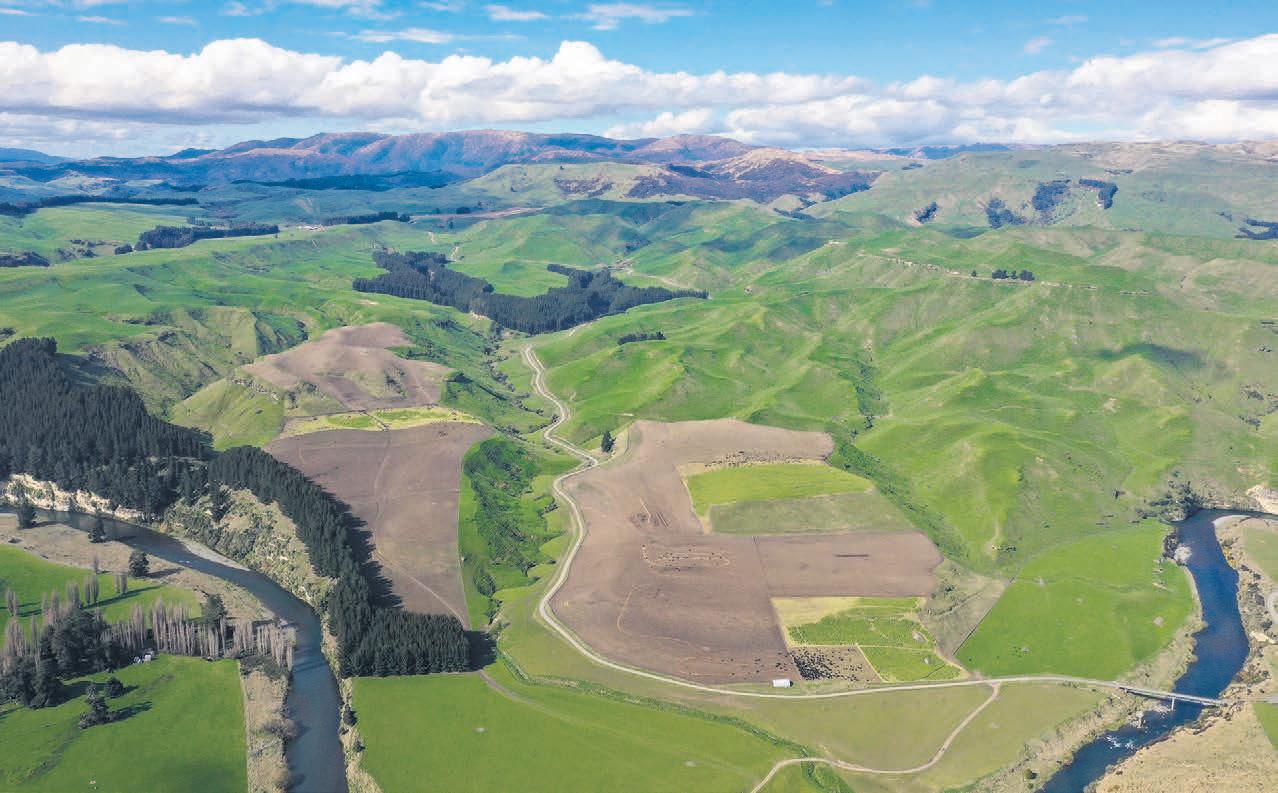
4,840ha
Tender Closing 4pm, Wed 7 Dec 2022
17 Napier Road, Havelock North
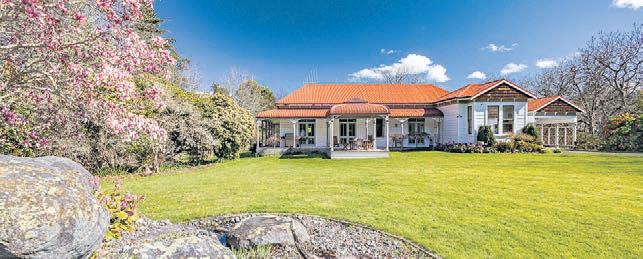
View by appointment
Tony Rasmussen 027 429 2253 tony.rasmussen@bayleys.co.nz Pete Stratton 027 484 7078 peter.stratton@bayleys.co.nz
Large sheep, cattle and deer breeding and finishing

Station' is 800 hectares in a superb location just off State Highway 1, south of Taihape, featuring large areas of cultivated contour, a grand villa renovated in 1994, and a 280ha deer unit. The offering comprises three distinct blocks available as one or separately. Mangapapa Road boasts 338ha, and includes the four-bedroom homestead, five stand woolshed and managers home plus large areas of cultivated contour. This adjoins the Papakai Road block of 127ha with new sheep and cattle yards. 334ha on Torere Road offers an intensive deer operation and includes a purpose-built deer handling shed, three-bedroom cottage and sheep facilities. Rawhiti's 100 paddocks, easy contour, strong fertiliser history and high fertility in a reliable farming area allows for versatility and high stock performance, finishing most progeny alongside an established velvet operation. bayleys.co.nz/2900518

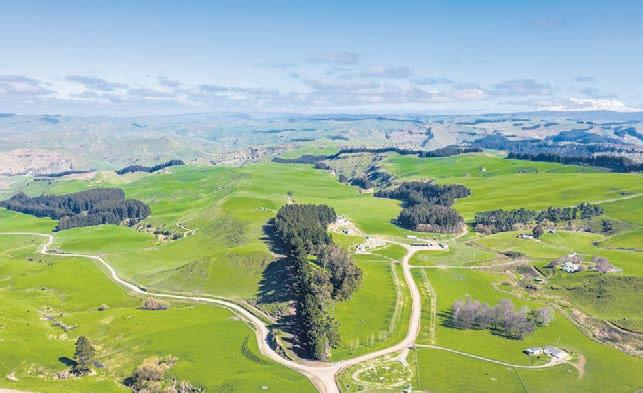
bayleys.co.nz

NEW LISTING
Taihape
Mangaohane
Station,
1957 Mangaohane Road
EASTERN REALTY LTD, BAYLEYS, LICENSED UNDER THE REA ACT 2008 BARTLEY REAL ESTATE LTD, BAYLEYS, LICENSED UNDER THE REA ACT 2008
Taihape 101 Mangapapa Road 800.2454ha Tender (unless sold prior) Closing 2pm, Thu 1 Dec 2022 PO Box 8, Taihape View by appointment Pete Stratton 027 484 7078 peter.stratton@bayleys.co.nz BARTLEY REAL ESTATE LTD, BAYLEYS, LICENSED UNDER THE REA ACT 2008
'Rawhiti
38
Riverly
flats
and horticultural land use
include livestock breeding and
microclimate
of
horticulture
and
429ha self contained, award winning dairy farm


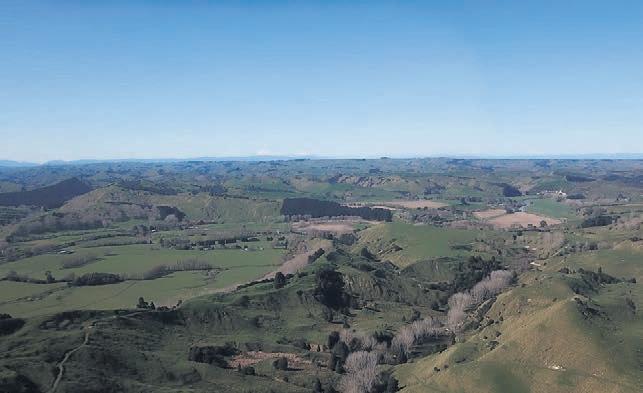

Located only 13km North East of Dannevirke in the popular Raumati area, Te Maunga Farm is an award winning self contained farm boasting mainly flat and easy contour. A very well set up farm, improvements include a large four bedroom homestead, three further dwellings, 50 bail rotary shed and a massive number of calf rearing, hay and implement sheds. Being fully self contained the profitability is very good, with the approximately 258 hectare milking platform and approximately 95 hectares of support land. Races are well maintained with the help of the red metal pit and lime quarry. A three year average production of 237,178kg/MS (once a day) as a result of an excellent fertiliser history and pasture renewal programme with 125 hectares irrigated via centre pivot and Bosch long laterals this is a consistent performer. This low cost farming operation is very profitable. bayleys.co.nz/2853055

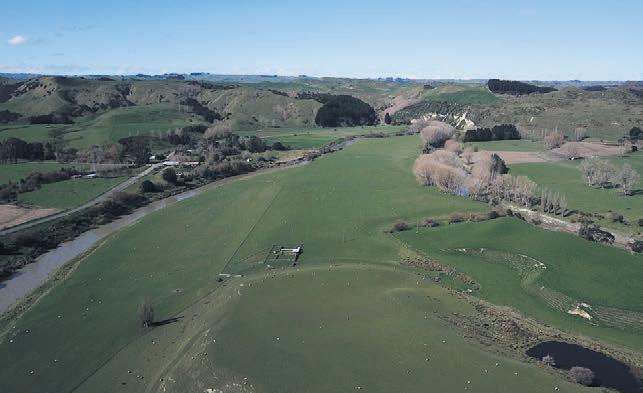
39 bayleys.co.nz Fordell, Whanganui 214 Mangamahu Road 679.9635ha Tender (unless sold prior) Closing 2pm, Thu 24 Nov 2022 Bayleys, 158 Wicksteed Street, Whanganui View by appointment Pete Stratton 027 484 7078 peter.stratton@bayleys.co.nz BARTLEY REAL ESTATE LTD, BAYLEYS, LICENSED UNDER THE REA ACT 2008
- pastoral
options Superbly located, the much admired 'Riverly' boasts close to 200 hectares of fertile flats balanced with well farmed and attractive hill country offering diversified farm business income, only 34kms from Whanganui. Featuring
only 40m above sea level with options from
through to pastoral
carbon farming. These
intensive finishing, cereal, root, and green fodder cropping in a
with opportunities including kiwifruit, pip fruit or vegetable production. Riverly offers a range
farm accommodation alongside a five-stand woolshed, two sets of covered yards plus excellent satellite yards, well maintained tracks and fenced to 52 main paddocks. bayleys.co.nz/2900521 Dannevirke 569 Maunga Road 429ha Tender Closing 4pm, Wed 16 Nov 2022 17 Napier Road, Havelock North View 1-2pm Tue 18 Oct or by appointment Tony Rasmussen 027 429 2253 tony.rasmussen@bayleys.co.nz Monty Monteith 027 807 0522 monty.monteith@bayleys.co.nz EASTERN REALTY LTD, BAYLEYS, LICENSED UNDER THE REA ACT 2008
Multi
rural
you searching for grazing land
close
meets location in this multi-use rural property with longterm benefits. The property sits proudly on the border of the prestigious town of Paeroa in the coveted Golden






on 66.515 hectares (more or less) in seven titles, the contour being a mix of flat to rolling land, ensures this is an easily managed grazing block. The infrastructure on this property is a key feature, with just some of the functional improvements including five + multi-use implement
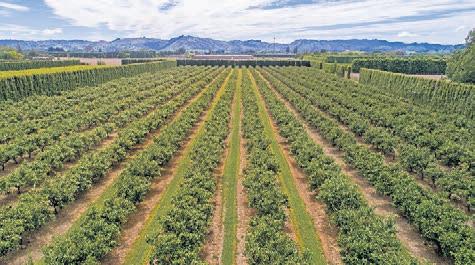
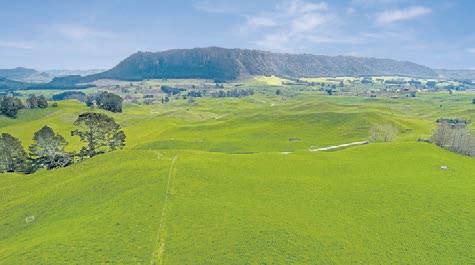
barns, and yards + loading ramp.
Ngakuru 385 Whirinaki Valley Road
Dairy farm with scale and location
Previously milking 800 plus through a 48-ASHB with a five year rolling average of 303,000kgMS. The contour is predominately rolling with steeper sideling’s with a milking platform of 280ha and the balance being used for grazing stock and 30ha planted in trees. A central race system provides access throughout the property and water is supplied via three

342ha
Tender (unless sold prior) Closing 4pm, Thu 17 Nov 2022 1092 Fenton Street, Rotorua View 11am-12pm Wed 19 Oct, Wed 26 Oct, Wed 2 Nov & Wed 9 Nov or by appointment Derek Enright 027 496 3974 derek.enright@bayleys.co.nz


out more! bayleys.co.nz/
to
Well located 2.4 hectare poultry farm and home
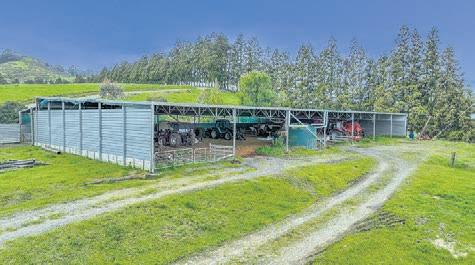
bayleys.co.nz Boundary lines are indicative only Karangahake 7541 State Highway 2 66.7383ha Auction (unless sold prior) 11am, Thu 17 Nov 2022 96 Ulster Street, Hamilton View 11am-12pm Fri 21 Oct Karl Davis 0508 83 83 83 karl.davis@bayleys.co.nz Lee Carter 027 696 5781 lee.carter@bayleys.co.nz SUCCESS REALTY LIMITED, BAYLEYS, LICENSED UNDER THE REA ACT 2008
use
opportunity
to town Are
with close proximity to town? Lifestyle
Triangle! Situated
sheds, half-round
Call today
find
2313856
SUCCESS REALTY LIMITED, BAYLEYS, LICENSED UNDER THE REA ACT 2008
bores. The infrastructure and systems throughout the farm is excellent, including an inshed feed system and a large calf-rearing facility. Three dwellings and a large implement shed complete this property. This is a rare opportunity to purchase a quality dairy farm with proven production and multiple titles with various options to purchase. bayleys.co.nz/2450977 Makaraka 59 Farmer Road 9.5422ha 4 2 Tender (unless sold prior) Closing 4pm, Wed 23 Nov 2022 10 Reads Quay, Gisborne View by appointment Jacob Geuze 027 747 3014 jacob.geuze@bayleys.co.nz Simon Bousfield 027 665 8778 simon.bousfield@bayleys.co.nz BOUSFIELD MACPHERSON LTD, BAYLEYS, LICENSED UNDER THE REA ACT 2008 Mixing pleasure with profits An immaculately presented large family home with two living areas, an underground wine cellar, expansive patios, pool and a spacious guest suite. Set on 9.5 productive hectares (more or less) only minutes from town. The orchard boasts persimmons and citrus plantings on premium soils, an onsite packhouse/ implement shed/workshop, a generous water consent, new bore and connection to the city water supply. This property is primed for production. bayleys.co.nz/2752697 Boundary lines are indicative only Haumoana 65 East Road 2.4ha 4 2 Tender Closing 4pm, Thu 10 Nov 2022 17 Napier Road, Havelock North View by appointment Tony Rasmussen 027 429 2253 tony.rasmussen@bayleys.co.nz John Pearce 027 464 4100 john.pearce@bayleys.co.nz EASTERN REALTY LTD, BAYLEYS, LICENSED UNDER THE REA ACT 2008
This 2.4ha poultry farm, family home and shop offering numerous options through the shop, free range barn or colony egg production, fresh produce sales, pullet growing or storage options in the massive sheds. Retiring vendors present for sale for the first time in over 70 years, Keighleys Poultry Farm. Growing pullets and egg production to the growing local Hawkes Bay markets. With a well sited, drive in shop, the opportunities to grow and diversify this business are fantastic. bayleys.co.nz/2853081 40
136ha dairy support/finishing farm
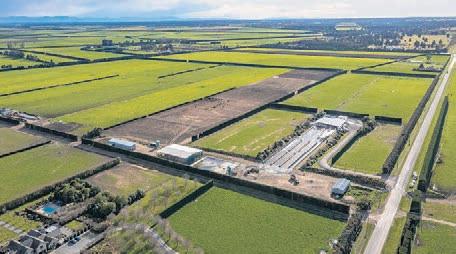
Located 60 km West of Hastings is this easy contoured sheep/beef finishing and dairy support property which boasts approximately 45 hectares of fertile flat land, the balance of easy hill country and bush clad gullies with access down to the river for trout fishing and hunting.




Improvements include a spacious five bedroom weatherboard home, implement sheds, four stand woolshed, sheep and cattle yards.

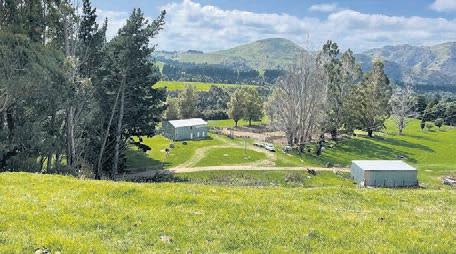
This opportunity to buy great contour, the potential in this block is fantastic. Trout fishing and hunting are a bonus. bayleys.co.nz/2853071



136ha
Tender
Closing 4pm, Wed 2 Nov
Napier Road, Havelock North
by
Canterbury 162 Burdons Road, Burnham
Once-in-a-lifetime opportunity
exceptional
proven performance showing consistently with the average
over
Rasmussen
tony.rasmussen@bayleys.co.nz
Monteith 027
monty.monteith@bayleys.co.nz
past four seasons at
attention to detail on this farm sets it apart from others.
and efficient systems, environmentally sound with
and irrigation means
well set up for the new owners.
centrally located 70-bail rotary shed with Read milking plant has new automatic
Deadline Sale (unless sold
Fri 4 Nov 2022 3 Deans Avenue, Christchurch View by appointment

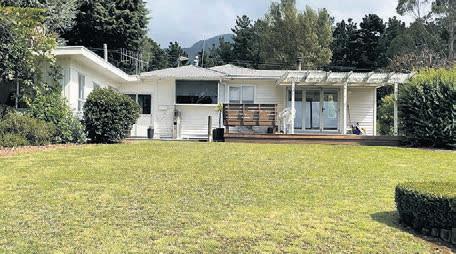
Chris Flanagan 027 433 4657 chris.flanagan@bayleys.co.nz
Ben Turner 027 530 1400 Craig Blackburn 027 489 7225 craig.blackburn@bayleys.co.nz
41 FINAL NOTICE
Kereru
1405 Mangleton Road
5 2
2022 17
View
appointment Tony
027 429 2253
Monty
807 0522
EASTERN REALTY LTD, BAYLEYS, LICENSED UNDER THE REA ACT 2008
250.5828ha
prior) 12pm,
WHALAN AND PARTNERS LTD, BAYLEYS, LICENSED UNDER THE REA ACT 2008
This highly-productive Burnham dairy farm boasts an
location and a superior homestead. The 250.5828-hectare property has
production
the
573,381kgMS. The meticulous
Simple
quality infrastructure
it’s
The
cup removers, Tru-test auto draft system and includes large feed pads. Immaculate main home, second three-bedroom home, and a further four-bedroom home. bayleys.co.nz/5519481 Canterbury 1095 Hororata Dunsandel Road, Dunsandel 272.4031ha Deadline Sale (unless sold prior) 12pm, Thu 3 Nov 2022 3 Deans Avenue, Christchurch View by appointment Adam Whitelock 027 408 3424 adam.whitelock@bayleys.co.nz Craig Blackburn 027 489 7225 craig.blackburn@bayleys.co.nz WHALAN AND PARTNERS LTD, BAYLEYS, LICENSED UNDER THE REA ACT 2008 Superb location and proven results Capitalise on past success and look ahead to a bright future with this substantial 272.4031-hectare (more or less) dairy operation. Demonstrating a history of solid performance, this well-equipped property is budgeted to produce approx. 360,000kgMS, remaining consistent with past results. The 44-bail rotary dairy shed has received a series of technological and automation upgrades in recent years. Fully irrigated via Central Plains Water stage one irrigation scheme, the generous supply currently allows the entire farm to be irrigated. Currently irrigated via four centre pivots, Rotorainers, G-SET and K-line irrigation. A total of four staff dwellings plus the main homestead, located an easy 50-minute commute from Christchurch. bayleys.co.nz/5519498 FARMERS WEEKLY – farmersweekly.co.nz – October 17, 2022Real Estate 41


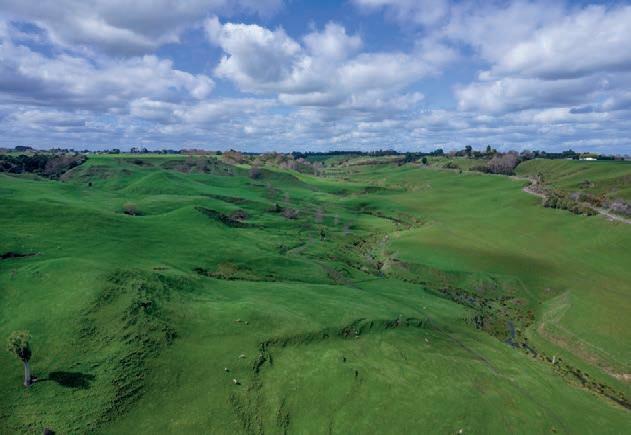





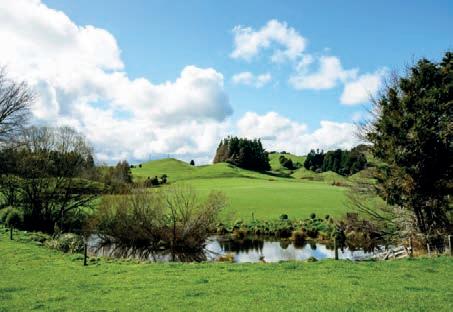
42
This is a beauty
Farmed with great pride and attention to detail by the Vendors over the last 48 years, this well presented and located property with a long road frontage comes to the market in excellent heart. 103 ha (STS) north facing farm, with flat to very gentle rolling contour milking 265 cows with a two-year production average of 118,243 kgMS. Subdivided into 63 paddocks by wide surface laneways, reticulated with excellent farm water and consistent fertiliser history with strong healthy pastures. There are two good homes on the farm, a four bedroom solid brick main homestead and a modern seven year old, three bedroom cottage providing excellent accommodation for farm staff.


Tender closes 2.00pm, Thu 17th Nov, 2022 (unless sold prior), Property Brokers, 138 Arawata Street, Te Awamutu





View Tue 18 Oct 11.30 - 12.30pm
Thu 20 Oct 11.30 - 12.30pm
Web pb.co.nz/MAR108725
Ian Morgan
M 027 492 5878
M 022 697 8779
Tender
Premium property, prime location
A well respected 184 ha dairy unit with very good contour and a comprehensive range of buildings only 25 minutes south of Rotorua in the Rerewhakaaitu District. This farm has been nurtured and developed by the Vendors over the last 21 years to a farm that delivers and achieves consistent levels of production. The farm with its 184 ha of mostly flat to gentle contour produces around 200,000 kgMS from 520 cows with approximately 524 tonne of palm kernel and meal blend introduced as brought in feed. The property has a good range of infrastructure including a 47 ASHB, implement sheds, calf sheds, workshops and a lined effluent storage pond and three good dwellings.

Tender closes 2.00pm, Thu 3rd Nov, 2022 (unless sold prior), C/Farmlands, 36 Marguerita Street, Glenholme, Rotorua View Wed 19 Oct 12.00 - 1.00pm
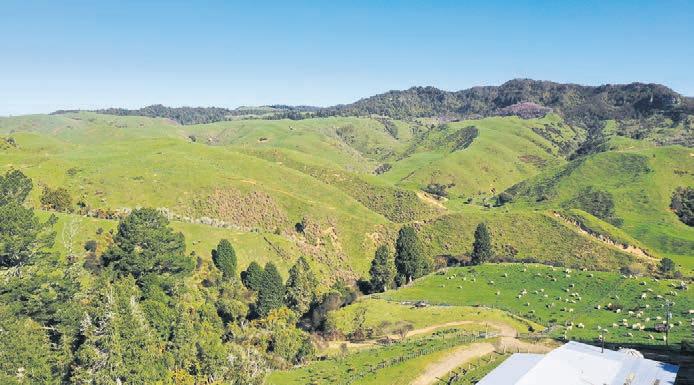


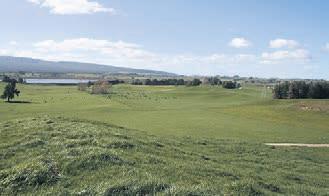
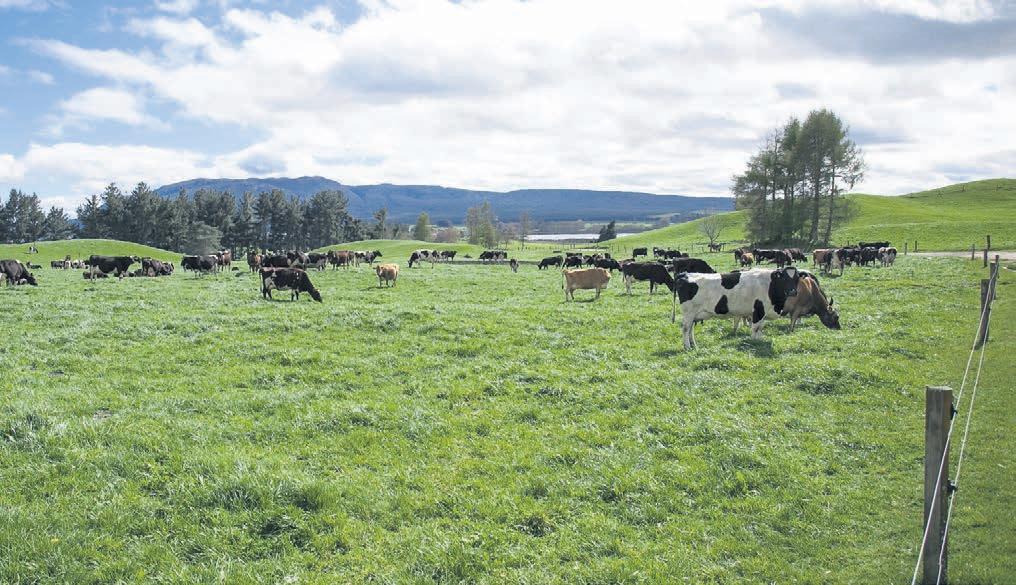
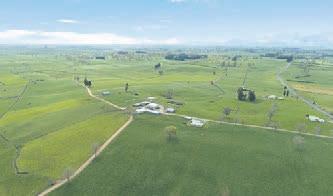

Wed 26 Oct 12.00 - 1.00pm
Web pb.co.nz/MAR107049
027 492 5878
022 697 8779
'Valley Run'
Located 28 km west of
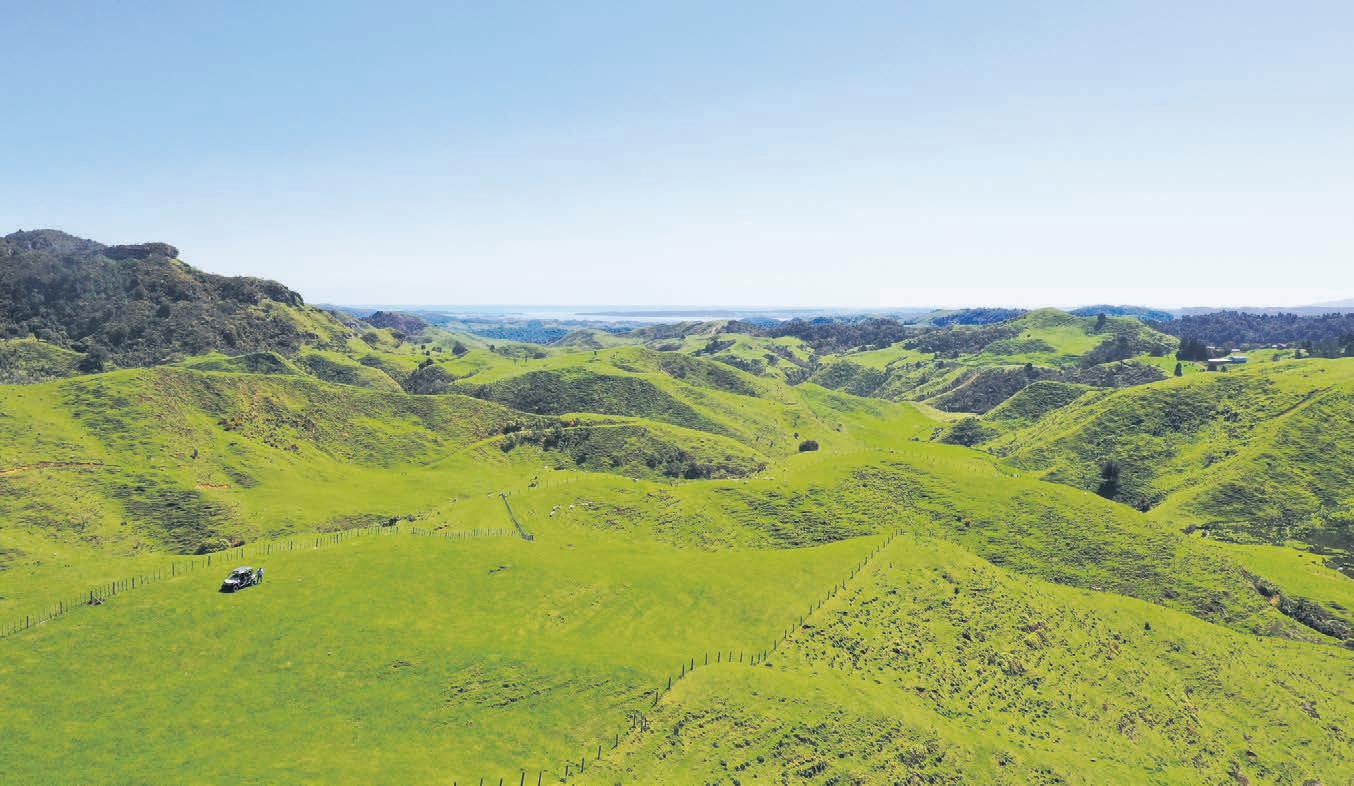
A special feature is approx
recreational
• Total area
ha
ha with
43
Ohaupo
250 Forkert Road
Tender
Chelly Aitchison
Rerewhakaaitu 206 Ash Pit Road
Tender
Chelly Aitchison
M
Ian
Morgan
M
Hauturu 1053 Kaimango Road
Otorohanga, 'Valley Run' is a well presented hill country breeding and finishing farm.
290
of native bush which adds significantly to the indigenous biodiversity and
opportunities available on the property.
689
approx 400 ha within farm block, 38 main paddocks with natural stock water • Rolling to medium hill contour with steeper sidlings and pockets of bush, all classified as LUC 6 • Wintering circa 1,700-1,800 MA ewes, 400 ewe hoggets and 70-80 finishing steers • Three stand woolshed and covered sheep yards, good roadside cattle yards plus satellite yards • Comfortable refurbished four bedroom home with covered deck and internal garage With recent investment in fencing, weed eradication and fertiliser, this property is a very tidy stand-alone unit that would also make a great addition to an existing farming business looking to create larger scale. Tender closes 4.00pm, Wed 9th Nov, 2022, Property Brokers, 138 Arawata Street, Te Awamutu View Tue 18 Oct 11.00 - 1.00pm Tue 25 Oct 11.00 - 1.00pm Web pb.co.nz/TWR103665 Dave Peacocke M 027 473 2382 E davep@pb.co.nz Property Brokers Ltd Licensed REAA 2008 pb.co.nz Proud to be here
Dairy with options
Located within the highly regarded Reporoa Valley, this 127.12 ha property consists of approximately 113 ha of effective area. The property has six titles (two lifestyle titles) that allow for multiple options. Production average for the last three years is 122,011 kgMS (1,080 kgMS/effective ha). Contour ranges from flat to gently rolling with a small area of moderate hill. Improvements include a tidy four bedroom home with single accommodation in the adjacent double garage. Farm infrastructure includes a 28 ASHB milking shed, Waikato plant and in-shed meal feed system. This is a property that has multiple potential land use configurations and options.


Tender closes 12.00pm, Wed 16th Nov, 2022, Property Brokers, 38 Landing Road, Whakatane View By appointment Web pb.co.nz/WTR15144

Kopaki 10 Kopaki Road
River Run
Run provides a dairy purchasing option in a central North Island location seldomly offered to the market. The 136.21 ha (more or less) of flat, well-draining dairy land could be an ideal two labour unit property or an extension to another farming




just 11 km from Taumarunui township on the edge of the Whanganui River the 106 ha dairy platform has an excellent layout with short walks on flat to easy undulating contour and is under excellent management with the current sharemilkers
an average of 100,000 kgMS from
Phillip Berry M 027 478 8892
Open Day
Turnkey - King Country grazing 91 ha situated 25 km southeast of Te Kuiti on a sealed road, 81 ha effective grazeable area with an even balance of contour, in a predominantly eczema free area.







With a superior 2005 brick homestead of 337 m2, three stand woolshed, two implement sheds, cow shed, yards and pump shed.

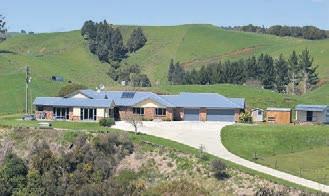
Fenced into 20 paddocks. Naturally sourced, reticulated water is either gravity fed or pressurised to the troughs.
Open Day
Whakapapa trophy
This
purchase
Tender closes 4.00pm, Mon 28th Nov, 2022, Property Brokers, 131 Rora Street, Te Kuiti

20 Oct 11.00 - 12.30pm
pb.co.nz/
Wakelin
other
been
cows. The 30
cow shed is centrally located and is supported by

further
and implement
of land
on the banks of the Whakapapa River.
less) of land with approx.
the
ha of land
be used for mowing silage. As well as
real
planted with
from the
are greeted by a large pond that
that show off their
certainty
over
out
Reporoa 3002 State Highway 5
Tender
View Thu
Web
TER106765 Doug
M 027 321 1343
Di Janett
M 027 554 2227
Taumarunui
258
Burnand
Road
River
business. Located
producing
300
ASHB
calf barns and
hay
sheds. Auction 11.00am, Mon 7th Nov, 2022, Taumarunui Golf Club, 165 Golf Road, Taumarunui View Tue 18 Oct 11.00 - 1.00pm Tue 25 Oct 11.00 - 1.00pm Web pb.co.nz/TUR102767 Katie Walker M 027 757 7477
Taumarunui Stone Jug Road, Kakahi
Open
Day
is an incredible opportunity to
a prime piece
for deer or
livestock
There is 25.41 ha (more or
9
that is cultivatable or could
being a great farming unit, it's
uniqueness comes
aesthetics of
property. You
has
lovingly
specimen trees
brilliant foliage during the warmer months and
stand
in the autumn. The center of the property offers a fabulous building site or sites and from here you can watch
the Whakapapa River. Auction 12.00pm, Mon 7th Nov, 2022, Taumarunui Golf Club, 165 Golf Road Taumarunui View Thu 20 Oct 1.00 - 2.00pm Sun 23 Oct 1.00 - 2.00pm Web pb.co.nz/TUR108652 Katie Walker M 027 757 7477 Property Brokers Ltd Licensed REAA 2008 | pb.co.nz Proud to be here 44
Tender
417 ha - Impressive self contained dairy farm

Makotuku Dairy impresses with scale and superior infrastructure.
This outstanding 417 ha self contained dairy farm located 21 km northeast of the Dannevirke township, is highly regarded for its mostly flat to rolling contour, quality soils, excellent infrastructure and modern housing. The farm infrastructure includes a 2007 commissioned 50 bail rotary shed with in shed feed system, 200 tonne silo with crusher, 400 cow feed pad, 2 x 350 tonne feed bunkers and centre pivot irrigation.



Makotuku Dairy offers an exceptional opportunity to secure a farm with scale, quality infrastructure and increasing productivity.
Central Hawke's Bay 695 Te Uri Road
Tender
Tender closes 2.00pm, Tue 15th Nov, 2022, Property Brokers office


4 Stanley Street, Dannevirke
View By appointment Web pb.co.nz/DR103595
Jim Crispin M 027 717 8862 E jimc@pb.co.nz
Sam McNair
M 027 264 0002 E sam.mcnair@pb.co.nz
Te Manga Station - 747 ha
Situated in the Mangaorapa Valley of Central Hawke's Bay, some 50 km south of Waipukurau. The standard of improvements including the recently renovated four bedroom family homestead, four bedroom second home, shearers quarters / holiday accommodation, five stand woolshed, large tractor shed/workshop, fencing and all-weather access to the rear of the property are unquestionably first class. A feature of Te Manga are the large tracks of flat to very easy country. Areas of native bush with a trophy hunting block deer fenced MPI accredited also exist. Presently utilized as a breeding and finishing block for both sheep and cattle with high fertility ewes and Angus cows run. Dairy replacements are also carried. The aesthetic appeal with the native bush, natural water, exotic and native plantings to provide shelter and woodlots will appeal to the discerning purchaser wanting their own stand-alone property or add to their portfolio.
4 2
Tender closes 2.00pm, Thu 24th Nov, 2022, Property Brokers, 98 Ruataniwha Street, Waipukurau View By appointment Web pb.co.nz/WR106438

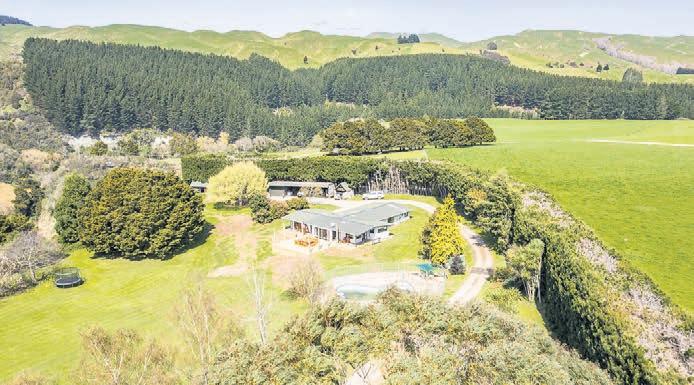
Pat Portas M 027 447 0612 E patp@pb.co.nz

James Butler M 027 405 8930 E james.butler@pb.co.nz

Ormondville 236 Tower Street
Property Brokers Ltd Licensed REAA 2008 pb.co.nz Proud to be here 45
256 ha - Large self-contained dairy farm


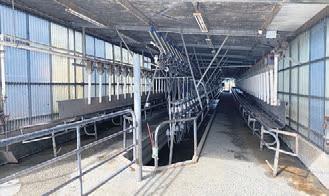
Our retiring vendors are committed to moving on and willing to support the transfer of ownership to an up-and-coming dairy farmer. A great opportunity to purchase a large scale selfcontained West Coast dairy farm. This property is very well presented and is well suited for a purchaser looking to upgrade their farm, family groups or for an investment opportunity. At present the property is milking up to 600 cows with a targeted production of 210,000 kgMS with all stock wintered on farm.

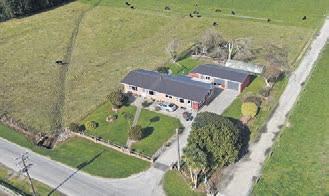
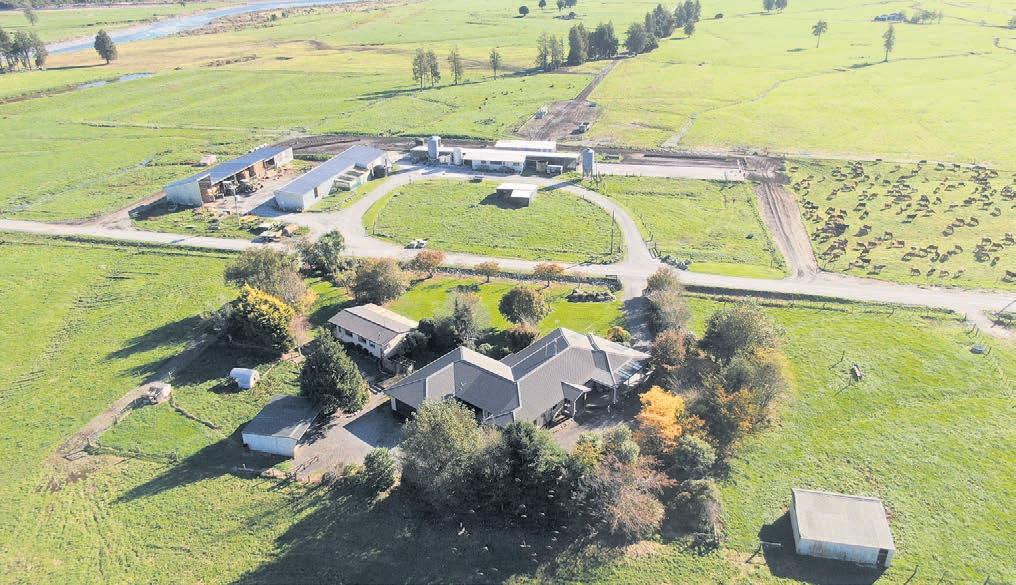
Located in a very good and reliable district on the West Coast. The Kokatahi Valley is 25 minutes from Hokitika, this is an opportunity to be part of a great farming community.



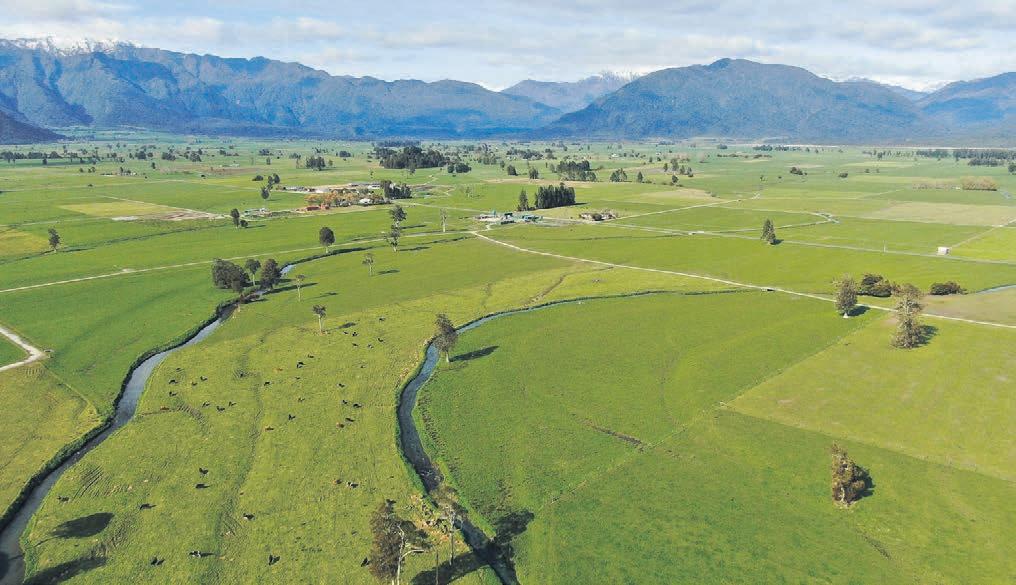

Kakapotahi 129 Waitaha Road
3 9 5 1
For Sale From $4,995,000 + GST (if any)
View By appointment Web pb.co.nz/HKR100758
Anna Hart M 027 294 9678
Gareth Cox M 021 250 9714
It does not get better than this
Well established 168 ha effective dairy farm located in the heart of the Kokatahi / Kowhitirangi Valley only 20 minutes from Hokitika. A proven performer with consistent production history from a low cost, pasture based system currently milking 340 cows. The property enjoys a full range of tidy infrastructure including a 28 ASHB shed, two well maintained houses plus an additional staff accommodation unit and multiple sheds. A well laid out property with excellent lanes and subdivision combined with quality free draining alluvial soils. This well presented dairy unit presents an excellent opportunity for sharemilkers looking for their first farm or the astute investor.


3 10 3 6
Tender closes 3.00pm, Thu 24th Nov, 2022 (unless sold prior), at Property Brokers, 97 Revell Street, Hokitika


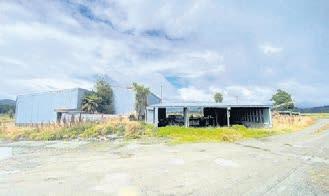


View By appointment Web pb.co.nz/HKR107829
Anna Hart M 027 294 9678
Gareth Cox M 021 250 9714
Slice of South Westland paradise
Consisting of 162 ha freehold with approximately 68 ha of improved pastures and the balance native bush and pine trees.

livestock grazing to hunting and fishing in world renowned Ellis creek, this is the ultimate outdoor lifestyle location with income or small scale farm. Improvements include a modern four bedroom Lockwood home plus a range of farm shedding, cattle yards, covered fertiliser bin, partially deer fenced with an older set of deer yards. The improved farmland consists of free draining alluvial silt loam soils that can be utilised for dairy support, beef breeding, finishing or deer, providing a return on your investment.
Located just 30 min south of Hokitika.
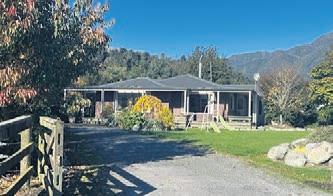
First farm option 115 ha freehold +
of
ha lease
scale not often attainable as
At present the property
milking
production of 140,000 kgMS with the




on farm. Milking platform currently includes
which is also offered for
Kokatahi 31 Middlebranch Road
Kowhitirangi 70 Johnston Road
Tender
From
1 4 2 1 For Sale From $1,300,000 + GST (if any) View By appointment Web pb.co.nz/HKR83308 Anna Hart M 027 294 9678 Gareth Cox M 021 250 9714
Kakapotahi 116 Waitaha Road
86
Located just 30 minutes south
Hokitika in the beautiful Waitaha Valley is this 115 ha freehold dairy farm complemented by 86 ha DOC grazing concession that provides
a first step into farm ownership.
is
380 cows with targeted
milking herd wintered
an adjacent 68 ha effective runoff,
sale. Farm improvements includes two houses, a 36 ASHB with Read plant along with an excellent array of farm buildings including a covered fertiliser bin. Available as a going concern with stock and plant at valuation. 2 5 3 For Sale $2,100,000 + GST (if any) View By appointment Web pb.co.nz/HKR83922 Anna Hart M 027 294 9678 Gareth Cox M 021 250 9714 Property Brokers Ltd Licensed REAA 2008 | pb.co.nz Proud to be here 46
Together
Stonelea
A traditional sheep and beef property of 155.96 ha, the property has a good balance of flat to easy rolling land and an area of steeper gullies, tidy fences with approximately 30 ha deer fenced.
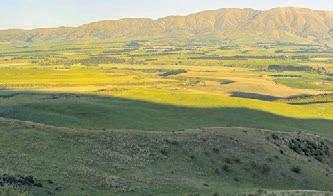

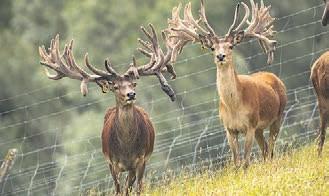



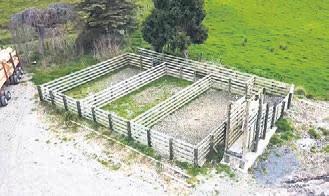
The property has a good three stand shearing shed, cattle yards, and plenty of other sheds. This is a well maintained solid brick home with four bedrooms, two living areas, and mature gardens. Good water scheme throughout the farm with an option to purchase 12 Opuha water shares.

Tender
Transport business and land & buildings
since late 2009, this rurally focused transport business has a loyal client base, with business well spread across the seasons. Operating out of a depot in the heart of rural Rangitikei, the work boundaries are not limited by the Cook Straight, with trips to the South Island part of their operation. The Company owns two livestock transport units, with one running on a 54-tonne permit and a further smaller unit complementing the business.
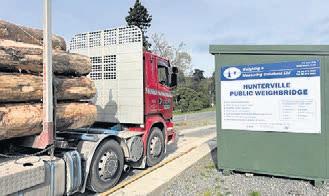

income is generated from owner drivers carrying out business created through HWCT Limited. The business operates a very busy and semi-automated public weighbridge, ideal for their own business and providing an excellent passive income.


2.00pm,
Property Brokers,







Broadway,
Nov,
Foveran Station

Stronger PB053815 Our combined strengths complement each other, creating more opportunity for our customers and Farmlands shareholders across provincial New Zealand. • A nationwide network from Northland to Southland • Sound, trustworthy advice from market-leading experts • Shareholder benefits and preferential commission rates means more money in your pocket Bigger networks, more buyers, better results For more information call 0800 367 5263 or visit pb.co.nz/together
Hunterville
HWCT Limited and 55-59 Ongo Road Tender
Operating
Further
Tender closes
Wed 9th
2022,
266
Marton View By appointment Web pb.co.nz/MTC108409 Ted Shannon M 021 833 536 Richard White M 027 442 6171
Pleasant
Point 22 Hazelburn Road
Tender
closes 2.00pm, Tue 8th Nov, 2022, Property Brokers, 83 Sophia Street, Timaru View By appointment Web pb.co.nz/TMR107821 Michael Richardson M 027 228 7027
Hakataramea
860
McHenrys
Road
Foveran Station is situated in the Hakataramea Valley, South Canterbury, New Zealand. Expansive and unique best describes Foveran and its sister "The Brothers" with 2,645 ha ranging from the valley floor to the upper foothills. The property is currently run as a renowned deer breeding, stud property and game park. It is also complimented with merino fine wool and beef production providing enviable scope and balance. Tailored with over 290 ha of spray irrigation with the ability to store over 500,000 m3, this property is set to provide the discerning buyer security in production and performance with multiple income streams. Foveran Station will impress beyond expectations. For Sale By Negotiation + GST (if any) View By appointment Web pb.co.nz/OMR90908 John McCone M 027 221 9133 Barry Meikle M 027 436 5131 Ross Robertson M 021 023 27220 Property Brokers Ltd Licensed REAA 2008 | pb.co.nz Proud to be here 47
RUAWAI, NORTHLAND

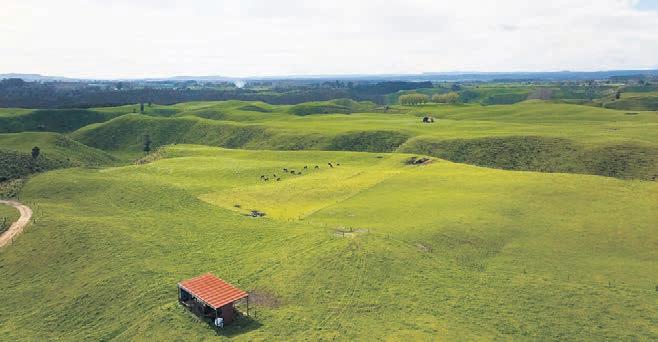





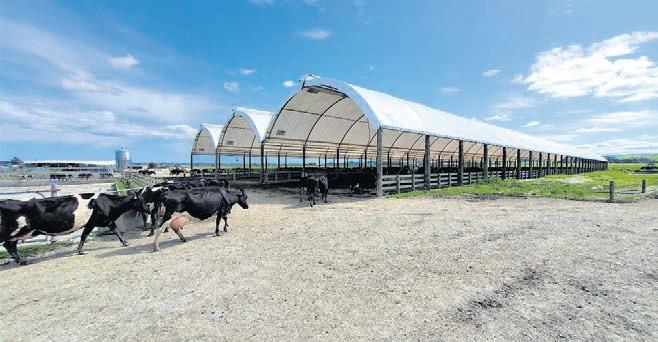
Innovative

PGG Wrightson Real Estate Limited, licensed under REAA 2008 Helping grow the country pggwre.co.nz/DAG36602 TENDER
Large Scale Northland Opportunity - 369ha & 469ha Two large scale dairy farms situated on the Ruawai flats are for sale by tender. Buy one or both or with further purchase options available. 188 Wallace Road – 369.8 hectares in eight titles with a 306 hectare milking platform. Infrastructure includes a 60-bail rotary and three smart shelter houses. Milking 940 cows with production at 349,449kg MS achieved for the 2021/22 season and a targeted budget of 360,000kg MS for the current season, good infrastructure and there are four houses on the farm. 353 Wallace Road – 469.4 hectares in 17 titles with a 226 hectare milking platform. The remaining land includes a 128 hectare support block and balance of land for cropping and young stock. Infrastructure includes a 40 aside herring bone dairy shed and two smart shelter houses. Milking 620 cows with production at 234,627kg MS achieved for the 2021/22 season and a targeted budget of 240,000kg MS for the current season. Also good infrastructure and with four homes. Both properties are well set up and ready to go and have benefited from new infrastructure and ongoing inputs from our vendors over the last eight years, our vendors have expressed these farms are very profitable which makes these farms a very attractive purchase. Give Ron or Dennis a call to arrange your viewing. TENDER Plus GST (if any) (Unless Sold By Private Treaty) Closes 2.00pm, Thursday 17 November VIEW By Appointment Only E dennis.wallace@pggwrightson.co.nz M 022 312 7704 Dennis Wallace E rgrbin@pggwrightson.co.nz M 027 471 6388 Ron Grbin pggwre.co.nz/WHK36617 OPEN DAY PAENGAROA, BAY OF PLENTY 155 Ridge Road
Grazing with Multiple Revenue Streams This property of 166.083 hectares has been the focus of progressive, innovative and far-sighted development over the past four years, initiating diverse revenue streams. Renovated four bedroom home including extra guest accommodation Subdivision has created an attractive, elevated and serviced 0.74 ha bare land lifestyle lot. Buy one, or the other, or both • Current stock includes Wiltshire breeding ewes, Hereford breeding cows with calves at foot, replacement heifers and dairy grazers • 14ha are planted in Elms and Maples to generate revenue from the Emissions Trading Scheme (ETS) • A potential bonus from planting the Maples could be future production of maple syrup 'Falcons Nest', https://ww.canopycamping.co.nz/falcons-nest - a new build luxury cabin, one of the Bay of Plenty's foremost home stay retreats • Neighbouring horticulture development creates the opportunity to contour and plant approximately 5ha in kiwifruit or avocados Proximity to one of the Bay of Plenty's most desirable locations and the farm's strong emphasis on sustainability and diversification makes this a most desirable proposition with the unique multiple income streams the vendors have set in motion. 4 2 2 TENDER Plus GST (if any) (Unless Sold By Private Treaty) Closes 4.00pm, Thursday 10 November VIEW 11.00-1.00pm Thursday 20, 27 October & 5 November E pgoldsmith@pggwrightson.co.nz M 027 494 1844 Phil Goldsmith For more great rural listings, visit www.pggwre.co.nz Helping grow the countrywww.pggwre.co.nz PGG Wrightson Real Estate Limited, licensed under the REAA 2008 NZ’s leading rural real estate company RURAL | LIFESTYLE | RESIDENTIAL 48
ARIA, WAITOMO, WAIKATO
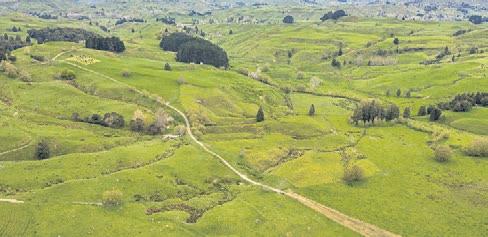





Trophy Farm Opportunity






Tikitiki Road
TENDER
PGG Wrightson Real Estate Limited, licensed under REAA 2008 Helping grow the country pggwre.co.nz/TEK36682 NEW LISTING
1741
'Chequers' - Outstanding 872 hectare trophy farm opportunity. Traditionally and conservatively run Sheep and Beef breeding and finishing property with top infrastructure on the market for the first time in 47 years. Most of the farm is flat to easy rolling contour, running up to some steeper hill country. Well maintained laneways make farm management a pleasure. All farm buildings and amenities are catered for to a high level plus an excellent airstrip. Fantastic water supply. For many decades the vendors have carried out a planting programme which has resulted in an ambient park like setting. The magnificent five bedroom homestead features natural timbers, exposed beams, rustic brickwork and imported hand painted ceramics. The homestead is set in English inspired gardens with a native bush back drop. There is also two other worker houses maintained to a high standard. There is a house situated by a swan filled lake which is, quite simply an exquisite place. A once in a lifetime opportunity to purchase one of the regions most prestigious farms.
(Unless Sold By Private Treaty) Closes 11.00am, Friday 25 Nov PGGWRE, 57 Rora Street, Te Kuiti VIEW 10.00-1.00pm Wednesday 26 October, 2 and 9 November E pwylie@pggwrightson.co.nz M 027 473 5855 | B 07 878 0265 Peter Wylie pggwre.co.nz/TEK36355 AUCTION TE AWAMUTU, WAIPA 2528 Cambridge Rd Rare Earth Opportunity The three pillars of Real Estate - CONTOUR, QUALITY and LOCATION - 39 hectare (more or less) Dairy farm located only 8km from Te Awamutu. This flat fertile farm has had decades of family ownership which in turn have prioritised fertility and grass production. On average milking 117 cows, long term regrassing and cropping programme in place. Four bedroom homestead privately set back from the road, 10 ASHB, four bay implement shed, two hay barns and subdivided into 42 paddocks. Options herecontinue milking, change to grazing or supplement block with fantastic location. AUCTION (Unless Sold Prior) 11.00am, Wednesday 16 November PGGWRE, 87 Duke Street, Cambridge VIEW 11.00-12.00pm Tuesday 18 & 25 October E pwylie@pggwrightson.co.nz M 027 473 5855 Peter Wylie pggwre.co.nz/TEK36407 NEW LISTING ARIA, WAITOMO 80 Parakoko Road Pukeho Partnership -The Grass Grower 647 hectares (more or less) - multi purchaser options available. Nicely contoured balanced farm, two dwellings, all the farm buildings needed, very good fencing, reliable water and a very good fertiliser record. Contour runs from extensive flats to easy rolling to steeper in the south of the farm. Attention to detail throughout the farm is evident. Breeding finishing farm with brought in bulls also finished. This farm is a performer. There are options here, buy as one or the following options - 421 ha, 89 ha and 137 ha or a combination of all three. Please bring your own bike to Open Days. TENDER (Unless Sold By Private Treaty) Closes 3.00pm, Friday 25 Nov PGGWRE, 57 Rora Street, Te Kuiti VIEW 10.00-12.00pm Friday 28 October, 4 & 11 November E pwylie@pggwrightson.co.nz M 027 473 5855 Peter Wylie For more great rural listings, visit www.pggwre.co.nz Helping grow the countrywww.pggwre.co.nz PGG Wrightson Real Estate Limited, licensed under the REAA 2008 NZ’s leading rural real estate company RURAL | LIFESTYLE | RESIDENTIAL 49
RANGIWAHIA, MANAWATU
MANAKAU, HOROWHENUA
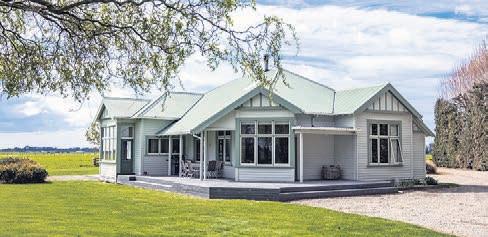
acres) Manakau Farm Land
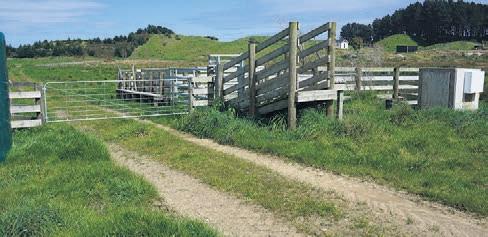




location
a fast-growing area south of
Waikawa Beach Road on seaward side of State Highway
and adjacent to a lifestyle block
area. Very appealing mainly flat to





good pasture and well subdivided
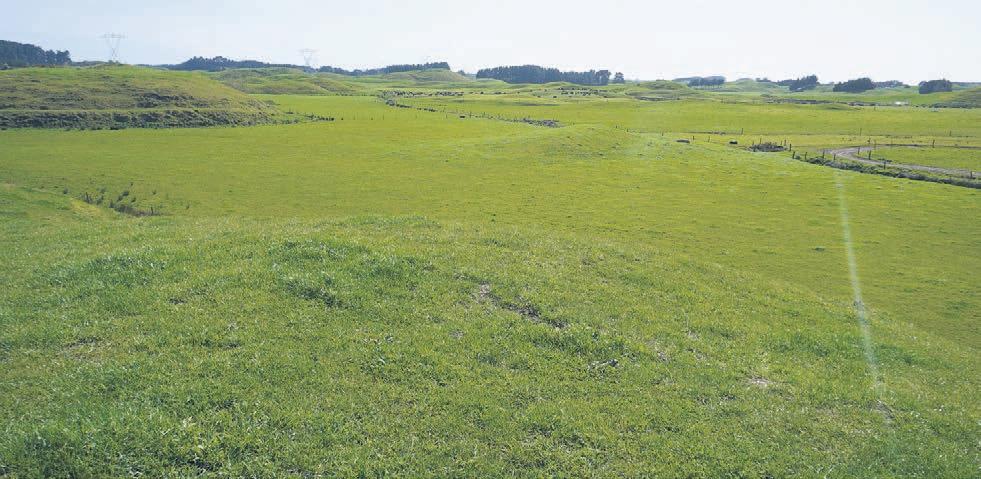
access, new water supply, new cattle



supply. Currently being farmed in
with the vendors dairy farm adjacent so
Park' - A Tier One Dairy Unit - 149ha




Park' is a tier one spray irrigated, high performing dairy unit in the heart of the Waitaki Plains. A 54 bail rotary dairy shed, equipped with all modern technology. Irrigated by one of the cheapest irrigation schemes in the country - Lower Waitaki Irrigation - sitting at around $100/ha water costs.

Valley pivots covering approximately 110ha with the remainder by K-Line irrigation. Consistently milking between 560-570 cows (wintering 580 cows. Three homes. A consistent, low cost, farm

PGG Wrightson Real Estate Limited, licensed under REAA 2008 Helping grow the country pggwre.co.nz/FDG36432 TENDER
Grazing, Forestry or Carbon Bare land - 441.035 ha in three titles. Currently part of a large station running sheep and beef. This block has access from Marshall Road and Mangapapa/Ireland Roads. Medium hill country with large areas of easy basins. Good water and well tracked and fenced. Two areas of QEII Bush. An opportunity to secure sound hill country with a range of options. TENDER Closes 2.00pm Wednesday 9 November VIEW By Appointment Only E geoff.white@pggwrightson.co.nz M 027 274 1478 Geoff White E wayne.brooks@pggwrightson.co.nz M 027 431 6306 Wayne Brooks pggwre.co.nz/LEV36135 AUCTION
77.84ha (192
Check out the location and potential! Great central
in
Levin, off
1
development
rolling contour,
with laneway
yards, power
conjunction
is also part of the milking platform. Also ideal for agistment, bull beef, beef finishing plus growing some maize. AUCTION Plus GST (if any) (Unless Sold Prior) 11.00am, Tuesday 15 November 265A Oxford Street, Levin VIEW By Appointment Only E Robert.Harding@pggwrightson.co.nz M 0276464393 Robert Harding E iross@pggwrightson.co.nz M 027 235 4676 Ian Ross pggwre.co.nz/ASH36655 NEW LISTING NORTH OTAGO 390 Steward Road 'Simpson
'Simpson
Two
with ideal location. Seldom do properties of this calibre appear - this is a must view property. DEADLINE PRIVATE TREATY Plus GST (if any) (Unless Sold Prior) Closes 12.00pm, Friday 11 November M 027 215 8666 Dave Heffernan M 021 918 233 Dan van der Salm We live Rural New Zealand, When it comes to getting the very best sale result for your rural, lifestyle, or provincial residential property, or help finding your next one, it pays to deal with the trusted and local experts. We really know rural New Zealand, because we live and work in the same communities as you do. pggwre.co.nz licensed under the REAA 2008. here too. For more great rural listings, visit www.pggwre.co.nz Helping grow the countrywww.pggwre.co.nz PGG Wrightson Real Estate Limited, licensed under the REAA 2008 NZ’s leading rural real estate company RURAL | LIFESTYLE | RESIDENTIAL 50
Rural
Immaculate Cambridge dairy farm
Wallace Road, Cambridge
Immaculately well presented, flat, easy care 79.2ha dairy farm with modern 40 aside HB including inshed meal feeders, a 300 cow feedpad and fully compliant effluent system. Fertile, mature peat soils ensure strong year round grass growth. On Pukerimu water scheme. Good support shedding plus excellent housing with a near new, six bedroom brick home and a good three bedroom secondary dwelling. Must be seen to be believed - be sure to come to an open day.
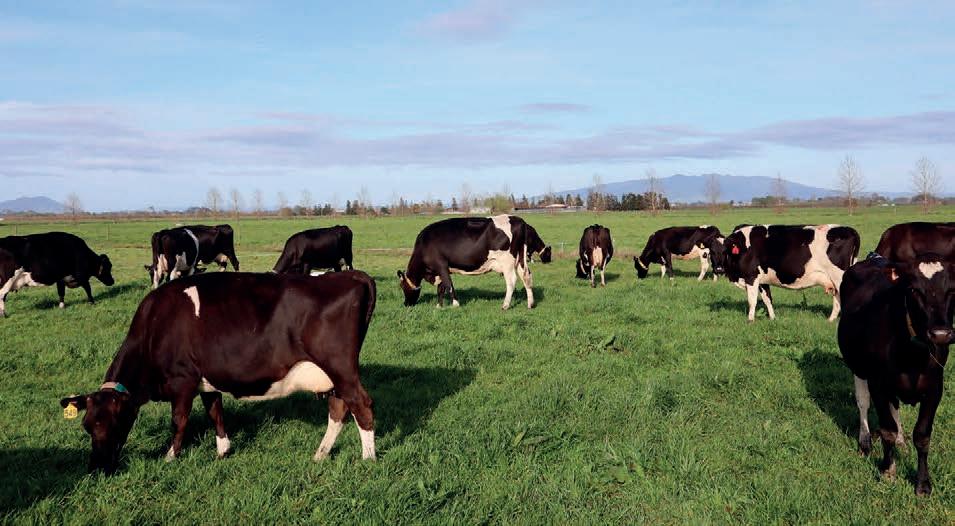

For Sale
$5,400,000 + GST (if any)
View Wednesdays
19, 26 October and 2 November 11.00am - 1.00pm
Rural
Te Pahu dairy
Large and picturesque, this 158.97ha farm ticks the box for so many options. Currently in dairy, it could easily continue to be run as a dairy unit or a blend of dairy/grazing/beef/deer plus some cropping options. Such a great location in a fantastic rural community with a good race and water system and excellent shedding. A very tidy three bedroom home plus a sleepout are onsite for accommodation. Don’t miss an open day soon.
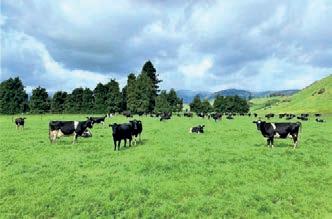




Tender Closes 17 November at 1.00pm at Ray White



Te Awamutu, may not be sold prior. Price will be plus GST (if any)







View Thursday 20 October, 11.00am - 1.00pm
Noldy Rust 027 255 3047rwteawamutu.co.nz/TEA30395
Rosetown Realty Ltd Licensed REAA2008
Immaculately well presented, flat, easy care
dairy farm with modern 40 aside HB
inshed meal feeders, a 300 cow feedpad



fully compliant effluent system. Fertile, mature peat soils ensure strong year round grass growth. On Pukerimu water scheme. Good support shedding plus excellent housing with a near new, six bedroom brick home and a good three bedroom secondary dwelling. Must be seen to be believed - be sure to come to an open day.
rwteawamutu.co.nz/TEA30395
Rosetown
Noldy Rust 027 255 3047
rwteawamutu.co.nz/TEA30382
Rosetown Realty Ltd Licensed REAA2008
For Sale $5,400,000 + GST (if any)
View Wednesdays 12 and 19 October, 11.00am - 1.00pm
1026 Limeworks Loop Road, Te Pahu
555
Realty Ltd Licensed REAA2008
79.2ha
including
and
555 Wallace Road, Cambridge Rural Immaculate Cambridge dairy farm Noldy Rust 027 255 3047 Rural and Lifestyle Sales.com Ltd Licensed REAA 2008ruralandlifestylesales.com For Sale By Negotiation Large Scale Dairying Opportunity - 234.5ha + 110ha 37 Karewarewa Road, Rangiwahia Farm View: By Appointment Richard Anderson 027 543 1610 richard@rals.co.nz • 234.5 hectares Freehold plus 110 hectares Lease, total 344.5 hectares 160 hectares under irrigation with 2 big guns and k-line • 50 Bale rotary shed with in-shed feeding and automatic cup removers • Excellent free draining Kiwitea series soils This is an attractive productive flatland dairy farm ready for the astute investor to take to the next production level Call Richard for more information or to arrange a time to view. Property ID RAL891 51 FARMERS WEEKLY – farmersweekly.co.nz – October 17, 2022Real Estate 51
Rd, Turangi
BakerAg Land & Leasing Ltd seek expressions of interest for the lease of Hautū-Rangipō Whenua LP Farm.



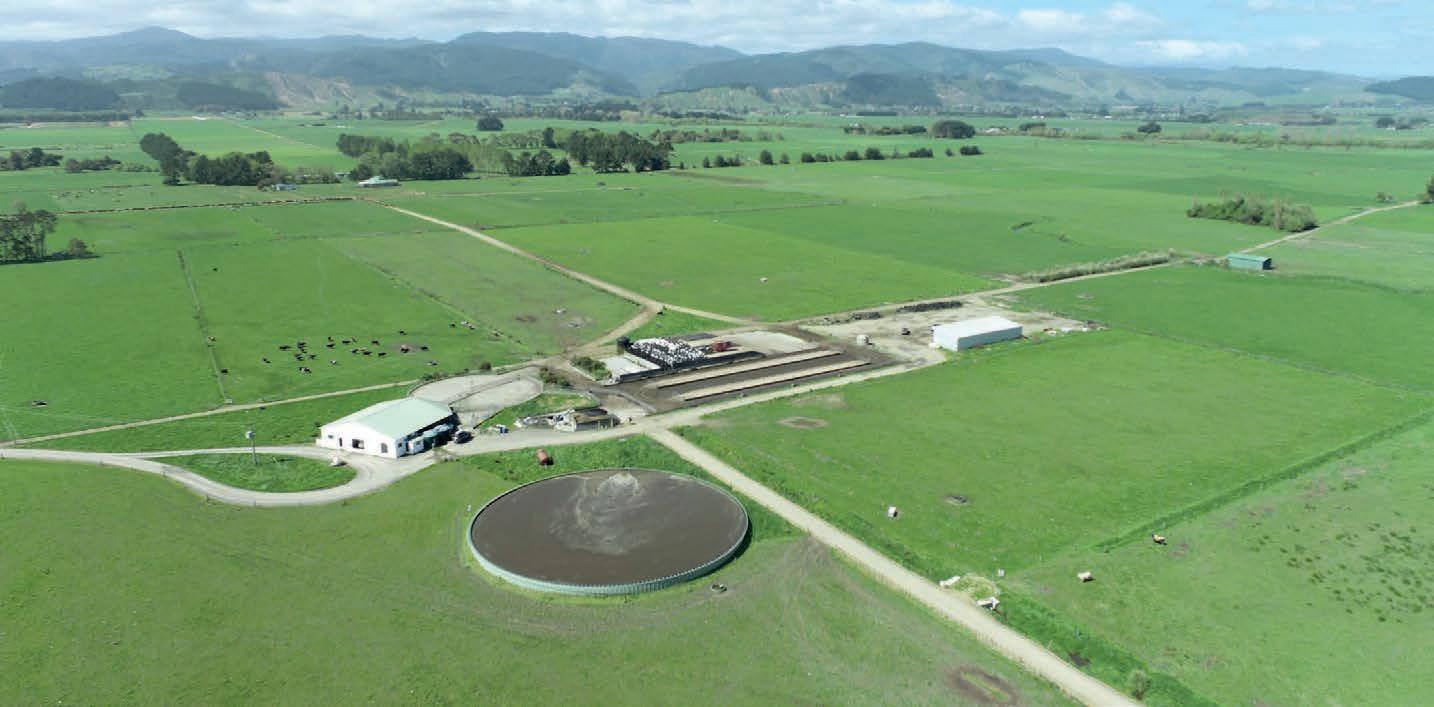

The property comprises a total of circa 905.8 ha of at to undulating land situated on Tongariro Rd & Rangipo Prison Rd, 1km east of Turangi.


The property has a managers dwelling, two other dwellings, woolshed, and a range of farm buildings and other facilities.
The property has most recently been run as a nishing and trading operation with bulls, deer and lambs nished each season.
The property is o ered for lease commencing January/February 2023.

be held in early November 2022 with dates advised to prospective lessees.
open days for
Rural and Lifestyle Sales.com Ltd Licensed REAA 2008ruralandlifestylesales.com Farm For Sale By Tender Horowhenua Dairy Opportunity -154.7 hectares (subject to survey) Open Farm • Farms of this scale and quality are rarely available in the Horowhenua • Consented to milk 620 cows and averaging 304,500kgMS under a high input system • Currently peak milk 600 cows including 40% autumm calving • Highly productive Kairanga silt loam and Tukituki stony silt loam soils • 50 bail rotary dairy with a concrete platform • Feed pad and large capacity silage bunkers are adjacent to the dairy • Located 10km south of Levin and 1 hour from Wellington Tenders Close: 30th November 2022 at 56 Stafford Street, Feilding Open Farms: Wednesday 19th & 26th October 2022 11.00am - 1.00pm Property ID RAL958 Richard Anderson 027 543 1610 richard@rals.co.nz Robert Dabb 027 255 3992 robert@rals.co.nz Kuku Beach Road, Ohau FARM LEASE OPPORTUNITY Hautū-Rangipō Whenua LP Farm – 4587 Tongariro
Farm
inspection will
For further information regarding the lease opportunity including property description, draft lease and details of inspection days please contact Fergus Rutherford at BakerAg Land & Leasing Ltd 0274 836 293 or fergus@bakerag.co.nz The deadline for expressions of interest is 4pm on Wednesday 30th November 2022. LK0113269© 52 FARMERS WEEKLY – farmersweekly.co.nz – October 17, 2022 Real Estate52
Onewhero 895 Wairamarama Road
This 617ha Northern Waikato property offers you true flexibility of use. You can make the most of the recent major investment in new grass, subdivision, fertiliser, and water to run large numbers of either sheep or cattle. OR run the numbers for forestry being it for carbon or production; either way with its impeccable location credentials this property must rank highly on your “must view” list in the next couple of weeks.

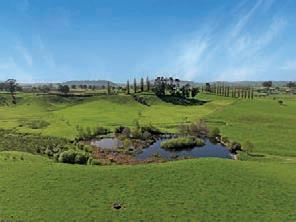


Deadline Treaty Friday 18th November 12:00 pm View Tuesday 18, 25 October, 1 November at 12.00 - 2:00pm www.harcourts.co.nz/ML4648


Kevin Deane M 021 970 902
Mark Ingram M 027 495 5941
Ruawaro 89 Smyth Road
349.7951ha
Buy some or buy it all!
One of the most contour friendly dry stock units you’ll find on the open market.
• Multiple Certificates of Titles; split into two 175 ha units?
• Three homes, multiple facilities including hangar and airstrip


• Well raced and watered, extensive hay and cropping contour


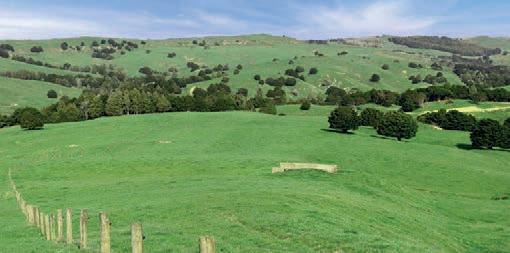

• Genuine retiring vendor; flexible settlement dates offered
Deadline Treaty Friday 11 November 2022 (unless sold prior) View Monday 17, 24, 31 Oct, 7 Nov at 12.00pm - 2.00pm www.harcourts.co.nz/ML4654
Kevin Deane M 021 970 902


Mark Ingram M 027 495 5941




2008
Ngahape Dairy Farm 59.66ha (Approx.)
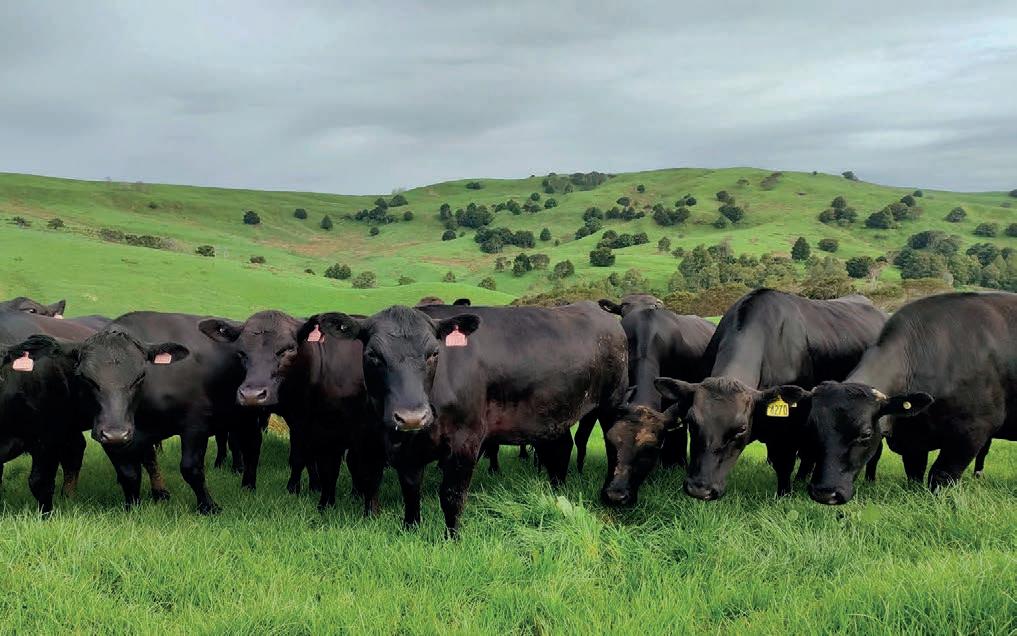 Kevin Deane Real Estate
Kevin Deane Real Estate
Licensed Agent REAA
Kevin
Deane Real Estate
617ha Boom!! Scale and Options of use Licensed Agent REAA 2008 LJ Hooker Te Awamutu trading as Te Awamutu Realty (REAA 2008). All information contained herein is gathered from sources we consider to be reliable. However, we cannot guarantee or give any warranty about the information provided. Interested parties must solely rely on their own enquiries.
Situated in the very strong farming district of Ngahape, proudly farmed by the current owners for 33 years & seriously for sale - this is an opportunity not to be missed. This 59.6627ha (approx.) property is currently milking 215 cows & producing 83,000kgMS (3 year average) through a 20 aside Herringbone cowshed with adjoining 5.82ha (approx.) & 7.39ha (approx.) leases. Both leases are available to prospective purchasers. LJ Hooker Te Awamutu (07) 871 5044 3 2 2124 Ngahape Road Te Awamutu Licensed Agent REAA 2008 Auction 1pm Thursday 17th November 2022 (unless sold prior) View Thurs 20th Oct 11:00 - 12:00pm Sun 23rd Oct 12:00 - 12:30pm Agent Mark Weal 027 451 4732 AUCTION Link Realty Ltd. All information contained herein is gathered rom sources we consider to be reliable. However, we cannot guarantee or give any waranty about the information provided. Interested parties must solely rely on their own enquiries. matamata.ljhooker.co.nz/JNSHR1 Centrally located between Te Aroha and Paeroa townships is a dairy farm currently milking 500 through a 60 bale rotary cowshed. Consistently producing around 200,000 kg/ ms per annum with the help of a 34 ha lease. For sale is approx 155 ha (STS). Flat contour with a soil structure of sandy loam, peat and marine clay. Farm infrastructure is plentiful which includes implement sheds, workshop, haybarn, covered fertiliser bin and a stand off pad with rubber matting. Dwellings include the main four bedroom home and a three bedroom cottage, all in good order. Production opportunity without the usual capital cost. Contact Jack who will fill you in on the rest. LJ Hooker Matamata 07 888 5677 Link Realty Ltd. 155 ha STS Choices Galore 869 Awaiti Rd, Paeroa Licensed Agent REAA 2008 Deadline Sale Closes Thurs 27th Oct, 4pm (unless sold prior) View Thurs 20th Oct 11am - 12pm Agent Jack Van Lierop 027 445 5099 DEADLINE SALE 53 FARMERS WEEKLY – farmersweekly.co.nz – October 17, 2022Real Estate 53
















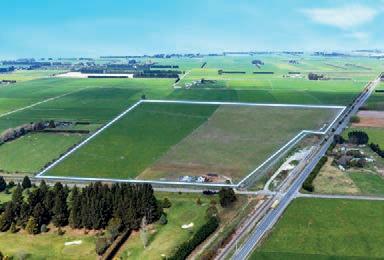















Accelerating success. 1472 Glenavy Hilderthorpe Road, North Otago For Sale by Deadline Private Treaty closing Thu 10 November 2022 at 4pm (unless sold prior) 1 2 Agri Realty Ltd Licensed under the REAA 2008colliers.co.nz/p-NZL67020896 The combination of quality core assets, fertile soil and low cost irrigation, means Smith No6 Dairy offers potential purchasers a wonderful opportunity to secure a productive dairy asset. Pending retirement for the Vendors, means this property is for genuine sale. For more information, call a Colliers Advisor today! Richard O'Sullivan 027 292 3921 Mark Parry 027 433 0350 Jonny O'Sullivan 021 510 024 For Sale by Deadline Private Treaty closing Thu 10 November 2022 at 4pm (unless sold prior) 1472 Glenavy Hilderthorpe Road, North Otago 183 hectares Milking 560 cows 170ha of irrigation (approx) Lower Waitaki Water 52 aside HB shed For Sale by Deadline Private Treaty Waitaki Plains - Dairy No. 6 The combination of quality core assets, fertile soil and low cost irrigation, means Smith No6 Dairy offers potential purchasers a wonderful opportunity to secure a productive dairy asset. Pending retirement for the Vendors, means this property is for genuine sale. For more information, call a Colliers Advisor today! Mark Parry 027 433 0350 Richard O’Sullivan 027 292 3921 Jonny O’Sullivan 021 510 024 colliers.co.nz/p-NZL67020896 Waitaki Plains - Dairy No. 6 For Sale by Deadline Private Treaty 286 Richmond Road, Richmond, Waitaki For Sale by Deadline Private Treaty closing Thu 10 November 2022 at 4pm (unless sold prior) colliers.co.nz/p-NZL67020901 Dairy Support - Richmond Road For Sale by Deadline Private Treaty 34 Macdonalds Road , Hilderthorpe, North Otago For Sale by Deadline Private Treaty closing Thu 10 November 2022 at 4pm (unless sold prior) 1 2 Agri Realty Ltd Licensed under the REAA 2008colliers.co.nz/p-NZL67020894 The combination of quality core assets, fertile soil and low cost irrigation, means Smith No2 Dairy offers potential purchasers a wonderful opportunity to secure a productive dairy asset. Pending retirement for the Vendors, means this property is for genuine sale. For more information, call a Colliers Advisor today! Richard O'Sullivan 027 292 3921 Mark Parry 027 433 0350 Jonny O'Sullivan 021 510 024 For Sale by Deadline Private Treaty closing Thu 10 November 2022 at 4pm (unless sold prior) 34 Macdonalds Road , Hilderthorpe, North Otago 156 hectares Milking 530 cows 145ha of irrigation (approx) Lower Waitaki Water Scheme 52 aside HB shed For Sale by Deadline Private Treaty Waitaki Plains - Dairy No. 2 The combination of quality core assets, fertile soil and low cost irrigation, means Smith No2 Dairy offers potential purchasers a wonderful opportunity to secure a productive dairy asset. Pending retirement for the Vendors, means this property is for genuine sale. For more information, call a Colliers Advisor today! Mark Parry 027 433 0350 Richard O’Sullivan 027 292 3921 Jonny O’Sullivan 021 510 024 colliers.co.nz/p-NZL67020894 Waitaki Plains - Dairy No. 2 For Sale by Deadline Private Treaty Hilderthorpe Road, Hilderthorpe, Waitaki For Sale by Deadline Private Treaty closing Thu 10 November 2022 at 4pm (unless sold prior) colliers.co.nz/p-NZL67020895 Dairy Support - Hilderthorpe Road For Sale by Deadline Private Treaty Boundary lines are indicative only 1 42.9 hectares 40ha of spray irrigation (approx) Dairy support Lower Waitaki Water Silt loam soilsTwo-bedroom 286 Richmond Road, Richmond, Waitaki colliers.co.nz/p-NZL67020901 For Sale by Deadline Private Treaty closing Thu 10 November 2022 at 4pm (unless sold prior) Dairy Support - Richmond Road For Sale by Deadline Private Treaty 1 2 42.9 hectares 40ha of spray irrigation (approx) Dairy support Lower Waitaki Water Silt loam soils Two-bedroom cottage 286 Richmond Road, Richmond, Waitaki colliers.co.nz/p-NZL67020901 For Sale by Deadline Private Treaty closing Thu 10 November 2022 at 4pm (unless sold prior) Agri Realty Ltd Licensed under the REAA 2008 Mark Parry 027 433 0350 Jonny O'Sullivan 021 510 024 Richard O'Sullivan 027 292 3921 Dairy Support - Richmond Road For Sale by Deadline Private Treaty 1 32.5 hectares 30ha of spray irrigation (approx) Dairy support Lower Waitaki Water High levels of soil fertility Hilderthorpe Road, Hilderthorpe, Waitaki colliers.co.nz/p-NZL67020895 For Sale by Deadline closing Thu 10 November 2022 at 4pm (unless sold prior) Dairy Support - Hilderthorpe Road For Sale by Deadline 1 2 32.5 hectares 30ha of spray irrigation (approx) Dairy support Lower Waitaki Water High levels of soil fertility Cattle yards Hilderthorpe Road, Hilderthorpe, Waitaki colliers.co.nz/p-NZL67020895 For Sale by Deadline closing Thu 10 November 2022 at 4pm (unless sold prior) Agri Realty Ltd Licensed under the REAA 2008 Mark Parry 027 433 0350 Jonny O'Sullivan 021 510 024 Richard O'Sullivan 027 292 3921 Dairy Support - Hilderthorpe Road For Sale by Deadline Boundary lines are indicative only Boundary lines are indicative onlyBoundary lines are indicative only Mark Parry 027 433 0350 Jonny O’Sullivan 021 510 024 Richard O’Sullivan 027 292 3921 Mark Parry 027 433 0350 Jonny O’Sullivan 021 510 024 Richard O’Sullivan 027 292 3921 Agri Realty Limited licensed under the REAA 2008 515 Kakanui Valley Road, Maheno, North Otago For Sale by Deadline Private Treaty closing at 4pm Wednesday 16 November 2022 (unless sold prior) Jonny O’Sullivan 021 510 024colliers.co.nz/p-NZL67020978 Self-contained Dairy Farm For Sale by Deadline Private Treaty 417 hectares freehold Balance of contourriver flats to rolling 360 hectares of spray irrigation (approx) 160 NOIC shares Self-contained dairy farm Fully automated dairy shed 3 houses and excellent infrastructure For more information or to arrange an appointment to view, contact the Colliers Advisor today! 54
ANIMAL HANDLING
FLY OR LICE problem? Electrodip – the magic eye sheepjetter since 1989 with unique self adjusting sides. Incredible chemical and time savings with proven effectiveness. Phone 07 573 8512 www.electrodip.com



ANIMAL AND HUMAN healer, also manipulation on horses and dogs. Auckland / North Auckland, October 18-21. BOP / Whitianga / Poverty Bay, October 22-24. East Coast / HB / Wairarapa / Wellington, October 25-29. Phone Ron Wilson 027 435 3089.
ANIMAL HEALTH

www.drench.co.nz farmer owned, very competitive prices. Phone 0800 4 DRENCH (437 362).




ATTENTION FARMERS
DOLOMITE
CONTRACTORS
GORSE AND THISTLE SPRAY We also scrub cut. Four men with all gear in your area. Phone Dave 06 375 8032.
DOGS FOR SALE
HUNTAWAY AND HEADING dogs. Deliver NZ wide. www.youtube.com/user/ mikehughesworkingdog/ videos - 07 315 5553.
DOGS WANTED
12 MONTHS TO 5½-yearold Heading dogs and Huntaways wanted. Phone 022 698 8195.
BUYING NOW! All abilities. NZ wide. Immediate payment! Email: mikehughesworkingdogs@ farmside.co.nz - 07 315 5553.
GOATS WANTED
GOATS WANTED. All weights. All breeds. Prompt service. Payment on pick up. My on farm prices will not be beaten. Phone David Hutchings 07 895 8845 or 0274 519 249. Feral goats mustered on a 50/50 share basis.
HORTICULTURE
NZ KELP. FRESH, wild ocean harvested giant kelp. The world’s richest source of natural iodine. Dried and milled for use in agriculture and horticulture. Growth promotant / stock health food. As seen on
RAMS FOR SALE
SITTING IN
FOR SALE
NZ’s finest BioGro certified Mg fertiliser 0800 436 566
For a delivered price call ....
30c/40c PER KG dags fadges/bales. Replacement woolpacks. PV Weber Wools. Kawakawa Road, Feilding. Phone 06 323 9550.




MORTGAGE RESCUE. If a mortgagee sale is looming on your horizon, contact us as soon as! Justyn and Rodney - mortgagerescue@ protonmail.com
BIRDS/POULTRY
PULLETS HY-LINE brown, great layers. 07 824 1762. Website: eurekapoultryfarm. weebly.com – Have fresh eggs each day!!!
ACCURATE AND PRACTICAL farm maps showing area sizes of paddocks and vegetation. Visit farmmapping.co.nz for a free quote.
FORESTRY
FARM MAPPING WANTED
NATIVE FOREST FOR MILLING also Macrocarpa and Red Gum, New Zealand wide. We can arrange permits and plans. Also after milled timber to purchase. NEW ZEALAND NATIVE TIMBER SUPPLIERS (WGTN) LIMITED 04 293 2097 Richard.

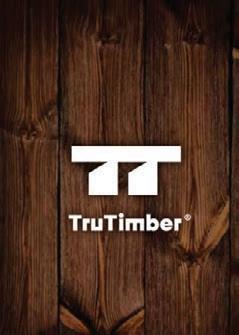
GIBB-GRO GROWTH PROMOTANT




PROMOTES QUICK PASTURE growth. Only $6.50+gst per hectare delivered. 0508-GIBBGRO [0508 442 247] www. gibbgro.co.nz. “The Proven One.”
farm
Ford –Ferguson – Hitachi – Komatsu
what


where
have
never
Advertise

2 soilsTwo-bedroom cottage Agri Realty Ltd Licensed under the REAA 2008 027 433 0350 Jonny O'Sullivan 021 510 024 Richard O'Sullivan 027 292 3921 2 Cattle yards prior) Agri Realty Ltd Licensed under the REAA 2008 Mark Parry 027 433 0350 Jonny O'Sullivan 021 510 024 Richard O'Sullivan 027 292 3921 06 8356863 . 021 061 1800 www.craigcojetters.com powered by Guaranteed Performance Save time and Money . Flystrike and Lice cost $$$ Quick to Set up . Easy to use . Job Done CRAIGCO SHEEP JETTERS SHEEP JETTERS SINCE 1992 CRAIGCO SENSOR JET Robust construction. Auto shut gate. Adjustable V panels Total 20 Jets. Lambs 5 jets. Side jets for Lice. Davey Twin Impeller Pump. 6.5 or 9.0 Hp motors 06 8356863 . 021 061 1800 www.craigcojetters.com powered by Guaranteed Performance Save time and Money . Flystrike and Lice cost $$$ Quick to Set up . Easy to use . Job Done CRAIGCO SHEEP JETTERS SHEEP JETTERS SINCE 1992 CRAIGCO SENSOR JET Robust construction. Auto shut gate. Adjustable V panels Total 20 Jets. Lambs 5 jets. Side jets for Lice. Davey Twin Impeller Pump. 6.5 or 9.0 Hp motors06 8356863 . 021 061 1800 www.craigcojetters.com powered by Guaranteed Performance Save time and Money . Flystrike and Lice cost $$$ Quick to Set up . Easy to use . Job Done CRAIGCO SHEEP JETTERS SHEEP JETTERS SINCE 1992 CRAIGCO SENSOR JET Robust construction. Auto shut gate. Adjustable V panels Total 20 Jets. Lambs 5 jets. Side jets for Lice. Davey Twin Impeller Pump. 6.5 or 9.0 Hp motors CRAIGCO SENSOR JET Guaranteed Performance Save time and money. Flystrike and Lice cost $$$ Quick to set up. Easy to use. Job done 06 835 6863 • 021 061 1800 www.craigcojetters.com Robust construction. Auto shut gate. Adjustable V panels Total 20 jets. Lambs 5 jets. Side jets for lice. Davey Twin Impeller Pump 6.5or 9.0 Hp motors LK0113335© Heavy duty, long lasting incinerators Three sizes available Phone 021 047 9299 irontreeproducts.co.nz LK0112754© Grape Growers –Kiwi Fruit Growers Wanted for Chitin Field Trials Is there a particular area in your vineyard or orchard that has less vigour and production? This could be due to root damage from plant parasitic nematodes. Rew Enterprises Ltd has devleoped a Chitin based product that has had extensive university testing over the past 7 years. Results have shown this Chitin product to be effective in plant parasitic nematode suppression. We are looking to do multiple field trial plots of one to two hectares each in the following areas; Te Puke, Hawke’s Bay and the Marlborough wine region. The Chitin product and application will be free of charge. For further informaton contact: Ian – phone 021 161 2435 email: ianwrew@yahoo.co.nz LK0113468© Contact us to discuss your requirements anytime. Competitive Rates Kitset Sheds & Fencing Supplies. Phone: 027 963 5396 Email: trutimbernz@gmail.com LK0113245© 55 Marketplace FARMERS WEEKLY – farmersweekly.co.nz – October 17, 2022Marketplace 55
LIVESTOCK
Country Calendar. Orders to: 03 322 6115 or info@nzkelp.co.nz
FALLOW DEER for sale. 40 years breeding. Manawatū area. Phone 021 886 065. WILTSHIRES-ARVIDSON. Self shearing sheep. No1 for Facial Eczema. David 027 2771 556. HAIR SHIRE® Low input meat rams! www.organicstud. nz 027 225 5283. tim@ organicstud.nz
WHAT’S
your barn? Don’t leave it to rust away! We pay cash for tractors, excavators, small crawler tractors and surplus
machinery.
– John Deere and more. Tell us
you
no matter
it is in NZ. You
know.. what’s resting in your barn could be fattening up your wallet! Email admin@ loaderparts.co.nz or phone Colin on 0274 426 936 (No texts please) WANTED TO BUY WORD ONLY ADVERTISING. Phone Debbie on 0800 85 25 80. WORD ONLY ADVERTISING. Phone Debbie on 0800 85 25 80.
with us Call Debbie 027 705 7181




















Find Ram Sales here. PGG Wrightson Genetics, making ram sales ‘too easy!’ WE’RE STRAIGHT UP, SAVING YOU TIME. pggwrightson.co.nz/ram-sales Upcoming Auctions TUESDAY 18 OCTOBER 7pm PGG Wrightson Spring Cattle Sale (North Island) WEDNESDAY 19 OCTOBER 10am JG & DA Crawford Annual Yearling Beef Cattle Sale (Canterbury Park Saleyards) THURSDAY 20 OCTOBER 12pm Taupo Cattle Sale WEDNESDAY 26 OCTOBER 10.30am Gore Spring Cattle Sale (Charlton Saleyards) 7.30pm St Leger Romney Ram Sale FRIDAY 28 OCTOBER 7pm Next Generation Futurity Sale of all Dairy Breeds Regular Livestream coverage of eight North Island Saleyards. bidr.co.nz 2021 Born Heifers – ANGUS $1200 EXPORT WANTED Contact your local agent or call North Island Wayne Doran 027 493 8957 Harry Van De Ven 027 486 9866 Luke McBride 027 304 0533 South Island Richard Harley 021 765 430 Burke Patching 027 441 1515 Early November 2022 delivery LK0113400© 56 Livestock FARMERS WEEKLY – farmersweekly.co.nz – October 17, 2022 Livestock56 SHEEP & BEEF REPORT Track supply demand& Every month, receive in-depth analysis of key trade data, important financial markets, and critical market trends here and around the world. Subscribe from only $100* per month agrihq.co.nz/our-industry-reports * Prices are GST exclusive
SALE TALK


• Russian dolls are so full of themselves.
The easiest time to add insult to injury is when you’re signing someone’s cast.
• Light travels faster than sound, which is the reason that some people appear bright before you hear them speak.



My therapist says I have a preoccupation for revenge. We’ll see about that.

A termite walks into the bar and asks, ‘Is the bar tender here?






• I told my girlfriend she drew her eyebrows too high. She seemed surprised.

• Just burned 2,000 calories. That’s the last time I leave brownies in the oven while I nap.
• Always borrow money from a pessimist. They’ll never expect it back.





I don’t suffer from insanity—I enjoy every minute of it.

Orari Gorge Romney, RomTex actively select for FEWER DAGS AND GREATER RESISTANCE AND RESILIENCE TO WORMS. DPBCCents Please contact us any time for more information or to arrange a visit. Robert & Alex Peacock | 03 692 2893 | robert@orarigorge.co.nz Orari Gorge Station, RD 21, Geraldine, South Canterbury, New Zealand ORARI GORGE GENETICS SIL Dual Purpose Body Condition Score 1811 DP Flks Avg 2010 2020Years -20 220 460 340 100 580 700 Body condition score is proven to not only help ewes handle tough times and bounce back but also as a key driver of colostrum production. Breeding MORE PROFITABLE & MORE SUSTAINABLE sheep in the HILL COUNTRY for the HILL COUNTRY. “Home of the Beef + Lamb Genetics Low Input Progeny Test” Stewart Morton 06 328 5772 • Andrew Morton 06 328 2856 RD 54 Kimbolton, Manawatu • pakiroms@farmside.co.nz • 170 clients last year purchased or leased Paki-iti rams • Bred on a 870ha hard hill country property rising up to 637m asl (2090f asl) • Breeding for constitution, longevity, structural soundness and then performance • Constitution = moderate frame, deep bodied type of sheep • Performance = Growth, fertility, survival, meat yield, incorporating FE tolerance and parasite resistance • 11 years of breeding Romtex, utilizing a stabilised SIL recorded Romtex flock • Paki-iti maternal Romtex offer faster growth rates and higher meat yields • Romtex rams sold as 22th rams PAKI-ITI ROMNEY & ROMTEX PAKI-ITI ROMNEY PAKI-ITI ROMTEX Visit paki-iti.co.nz to view our breeding programs LK0113283© • • • • • BEEFGEN is currently purchasing animals for live export for December delivery: 2021 Holstein Friesian Heifers (chance mated) 2022 Autumn Born Holstein Friesian Heifers Please contact your local agent for further information. BEEFGEN : Brian Pearson : 021 0907 1688 BEEFGEN : Jess Crow : 022 074 1210 BEEFGEN Office : 06 927 7154 LK0113337© Check out Poll Dorset NZ on Facebook LK0112874©www.dyerlivestock.co.nz Ross Dyer 0274 333 381 STOCK REQUIRED 1YR FRSN BULLS 200 300kg 1YR ANG & ANGX STEERS 200 270kg 2 & 3YR ANG & ANGX STEERS 450 580kg 2YR FRSN BULLS 400 450kg 60 MA COWS & CALVES 2YR ANG & XBRED HEIFERS 400 470kg E info@rdlfinance.co.nz A Financing Solution For Your Farm 57 FARMERS WEEKLY – farmersweekly.co.nz – October 17, 2022Livestock 57
Markets
Out of the mud come the new season lambs
With a lot riding on the auctioneer’s skill, a mere 800 of the new season lambs became the first to dip their hooves in the market under a grey, wet sky.
Suz Bremner MARKETS Lamb
THE nor’west and westerly winds are usually the biggest challenger of the scrim at this time of year, but for many it was getting into paddocks to get the task of docking and tailing completed. In true kiwi spirit, however, our farmers have dodged showers and puddles to get the job done, and for early lambing farmers the focus now turns to weaning and first lamb drafts.
Stortford Lodge saleyards traditionally kick off the new season lamb market and it is the Whitelock family’s Te Aute property, Waikareao Station, that provide the first taster. While the first draft for this property has occurred at the same time as it does each year, last year a few other vendors took the opportunity to offload their first drafts alongside this annual consignment. The tally rose to 3700 in 2021, but slower growth weights this year due to the very wet spring meant that even the regular consignment from Waikareao Station was halved, as the twinning mobs were not ready to be weaned.
That left just over 800 lambs to dip their hooves into the market and, as the auction got underway, any idle chit chat died away to an
eerily silent atmosphere with only the auctioneer’s voice to be heard taking bids from around the rails.
And in conditions very fitting of the season the lambs were sold on a grey, wet day but a run of fine days prior and dry yards to draft them up in meant they showed their full potential in the pens on sale day.
The opening bid needed to be set low enough that buyers were comfortable bidding in a yet-to-be-established market, but not so low that lambs could end up undervalued.

These Southdown-cross lambs ticked the boxes for early finishers. They are out of Romney and Romney-Perendale ewes and top Southdown rams are sourced from Te Mara Southdown Stud in Omakere, Turiroa Stud in Wairoa and Willowhaugh Southdowns in Blenheim. The males are kept entire and they are sold as mixedsex lines, drafted by size. There was plenty of interest from locals and further afield and by hammerfall the top pen made $165. The second and third cuts had headcounts of 300 each and were the best-selling lines at $142.50$158 while the balance sold for
$132. Compared to last year, the top lines were up $12-$15 and were almost identical to pre-covid 2019 values.
With these first lambs going under the hammer, the industry now has some insight on values for new season lambs, though PGG Wrightson area livestock manager and auctioneer Neil Common said it is no easy task auctioning the first new season lambs.

“It’s always hard to pick where the market will be, given that no other new season lambs have been traded. But there is confidence in the market, and I had hoped for $160-$165 for the tops, which we got to. It was a good positive market and the vendors were very happy,” Common said.
The opening bid needed to be set low enough that buyers were comfortable bidding in a yet-tobe-established market, but not so low that lambs could end up undervalued.
Common also said that the return buyers were key to the success of the auction.
“We always have return buyers bidding on these lambs and that says a lot. In particular that the lambs are performing as the buyers expect and that they want them again each year.”
Those return buyers came from Taupō, and this year three took ownership of the top pens with the line of the smallest lambs staying local.
Proudly sponsored by
Now the waiting game starts as buyers will need to be patient for more new season lambs to enter the market.
Supply will be slow to build as delays for weaning are expected to be around 2-3 weeks, depending

on what the weather does in that time.
The next run of the Waikareao Station lambs will be in two weeks’ time and expectations are that a few more vendors will test the market then also.
We are an established community of like-minded, innovative data driven farmers who are committed to the future of sheep farming in New Zealand through our Headwaters breeding programme.
Our unique value chain connects farmers, chefs, and consumers who enjoy our product, Lumina Lamb, at top restaurants around the world. Headwaters farms are also rewarded for their efforts with a significant premium to enable the success of their farming business for years to come.

Join us in supplying the world’s best lamb.
Find out more www.headwaters.nz or phone Andrew Bendall on 027-299-5597
Headwaters is a collective of farmers who are passionate about doing things better.
58
NO EASY TASK: PGG Wrightson auctioneer Neil Common has the unenviable task each year of selling the rst big run of new season lambs to go under the hammer nationwide.
Weekly saleyards
A new North Island record price for heavy steers was set as demand for cattle that can go straight to the processors increases. With a few gaps appearing as trying weather conditions slow finishing, traditional steers in particular have been subjected to increased competition. That came to a head at Stortford Lodge where 627kg-755kg lines reached $3.82-$3.86/ kg, bettering the Feilding record of $3.80/kg just the week prior, and falling just 1c/kg short of the South Island record set at Canterbury Park in mid-September. Those levels were achieved by large lines of mainly Angus, but also Angus-Hereford and Hereford, some of which that had been delayed by a few weeks due to access issues into properties.
Kaikohe | October 12 | 500 cattle
$/kg or $/hd
2-year steers 3.35-3.56
Yearling Angus steers 3.64
Yearling beef-cross heifers 3.20-3.30
Aut-born weaner Friesian bulls 760
Aut-born weaner beef-cross heifers 460-510
Wellsford | October 10 | 534 cattle
$/kg or $/hd
2-year Hereford-Friesian steers, 470-543kg 3.30-3.39
2-year Hereford-Friesian heifers, 370-436kg 3.27-3.30
Aut-born yearling Hereford-Friesian steers, 340kg 3.47
Aut-born yearling Simmental-Friesian steers, 357kg 3.45
Yearling Hereford-Friesian steers, 177-186kg 4.09-4.18
Yearling Angus-Friesian heifers, 208-262kg 3.09-3.13
Pukekohe | October 8 $/kg or $/hd
Yearling heifers 3.00-3.37
Aut-born weaner steers 420-650
Aut-born weaner heifers 345-650
Prime steers 3.27-3.39
Prime heifers 3.28-3.30
Boner cows 1100-1580
Store ewes & lambs, all 88-100
Store ewes, all 75-162
Store hoggets, all 115-141
Prime hoggets, all 152-192
Tuakau | October 6 | 300 cattle
$/kg or $/hd
2-year dairy-beef steers, 360-500kg, good 3.38-3.55
2-year dairy-beef heifers, 350-420kg, good 3.18-3.30
Yearling dairy-beef steers, 280-350kg 3.40-3.55
Yearling dairy-beef heifers, 260-350kg 2.95-3.25
Tuakau | October 11 | 950 sheep
$/kg or $/hd
Prime ewes, medium to heavy 166-211
Prime hoggets, heavy 190-221
Prime hoggets, medium 166-184
Tuakau | October 12 | 460 cattle $/kg or $/hd
Prime steers, 600-750kg 3.55-3.67
Prime steers, 500-600kg 3.46-3.54
Prime heifers, 500-600kg 3.48-3.57
Prime heifers, 430-500kg 3.30-3.42
Boner cows, 500-600kg 2.28-2.46
Frankton | October 11 | 976 cattle
or $/hd
2-year Hereford-Friesian steers, 393-470kg 3.39-3.56
2-year Hereford-Friesian heifers, 350kg, top cut 3.7
Yearling Hereford-Friesian steers, 283-320kg 3.60-3.75
Yearling Angus heifers, 202kg, top cut 3.24-3.37
Yearling Hereford heifers, 159-199kg 3.37-3.49
Yearling Friesian bulls, 226-285kg 3.30-3.43
Prime dairy-beef steers, 493-570kg 3.42-3.51
Prime dairy-beef heifers, 422-525kg 3.21-3.43
Frankton | October 12 | 564 cattle $/kg or $/hd
2-year Hereford-Friesian steers, 392-466kg 3.30-3.42
2-year Hereford-Jersey heifers, 388-433kg 3.13-3.33
Yearling Angus-cross steers, 216-239kg 3.24-3.26
Yearling Hereford-Friesian steers, 250-335kg 3.39-3.60
Yearling Hereford-Friesian heifers, 191-320kg 3.14-3.32
Prime dairy-beef steers & heifers, 454-642kg 3.35-3.45
Rangiuru | October 11 | 455 cattle, 164 sheep $/kg or $/hd
2-year dairy-beef steers, 430-462kg 3.40-3.42
2-year Hereford bulls, 576-607kg 2410-2610
Yearling Hereford-Friesian steers, 340-417kg 3.31-3.45
Yearling Hereford-Friesian heifers, 203-258kg 670-800
Prime dairy-beef steers, 541-636kg 3.43-3.60
Mixed-age ewes & lambs 70-118
Te Kuiti | October 6 | 1124 cattle $/kg or $/hd
2 and 3-year Angus steers, 478-619kg 3.68-3.76
2-year exotic-beef steers, 473-584kg 3.61-3.74
2-year traditional heifers, 415-489kg 3.55-3.67
2-year traditional heifers, 380-446kg 3.29-3.49
2-year exotic-beef heifers, 373-481kg 3.53-3.65
Yearling exotic-cross steers, 329-405kg 1270-1530
Yearling Angus-Friesian steers, 278-395kg 1100-1380
Yearling Angus bulls, 204-250kg 690-970
Yearling Angus heifers, 288-335kg 2.97-3.22
Matawhero | October 7 | 305 sheep
$/kg or $/hd
Hogget ewes & lambs, terminal 120
Mixed-age Romney ewes & lambs 134
Prime ewes, all 162-200
Prime hoggets, all 100-280
Taranaki | October 12 | 1163 cattle
$/kg or $/hd
2-year dairy-beef steers, 470-480kg 3.40-3.60
2-year dairy-beef steers, 340-380kg 3.00-3.20
2-year dairy-beef heifers, 380-446kg 3.36-3.41
Yearling Hereford-Friesian steers, 266-312kg 3.49-3.63
Yearling traditional steers, 248-300kg 3.33-3.40
Yearling dairy-beef heifers, 230-366kg 2.80-3.00
Yearling Friesian bulls, 210-369kg 2.90-3.10
Aut-born weaner
59
$/kg
Hereford-Friesian heifers, 207-283kg 630-850 FARMERS WEEKLY – farmersweekly.co.nz – October 17, 2022Markets 59
Stortford Lodge | October 10 | 3040 sheep
$/kg or $/hd
Prime ewes, heavy to very heavy 201-261
Prime ewes, medium to good 135-181
Prime male and ewe hoggets, tops 206-232
Prime male and ewe hoggets, remainder 167-198
Stortford Lodge | October 12 | 886 cattle, 3627 sheep $/kg or $/hd
2 and 3-year traditional steers, 627-755kg
3.82-3.86
2-year traditional steers, 461-555kg 3.48-3.75
2-year traditional heifers, 386-463kg 3.24-3.29
Yearling Angus steers, 257-297kg 4.21-4.32
Yearling Hereford-Friesian steers, 241-297kg 3.53-3.61
Yearling Friesian bulls, one line 366kg 3.34
Yearling Angus heifers, 251-379kg 3.35-3.39
Yearling exotic-cross heifers, 321-356kg 3.44-3.55
Mixed-age ewes & lambs, lighter ewes, small lambs 87-128
Store male hoggets, mainly Chatham Islands, good to heavy 167-181
Store ewe hoggets, mainly Chatham Islands, good to heavy 153-189.50
Store mixed-sex hoggets, mainly Chatham Islands, good 161-172
Store mixed-sex lambs, new season 132-166
Dannevirke | October 6 | 590 sheep
$/kg or $/hd
Store cryptorchid hoggets, all 136-190
Store ewe hoggets, all 119-153.50
Prime ewes, average 169-171
Prime hoggets, all 150-229
Feilding | October 7 | 899 cattle, 1852 sheep
$/kg or $/hd
2-year Angus steers, 424-558kg 3.73-3.80
2-year dairy-beef steers, 351-509kg 3.39-3.51
2-year Hereford-Friesian heifers, 315-406kg 3.37-3.44
Yearling Angus and exotic-cross steers, 233-337kg 3.81-4.00
Yearling Hereford-Friesian steers, 274-320kg 3.28-3.47
Yearling traditional heifers, 240-282kg 3.25-3.29
Yearling dairy-beef heifers, brindles & reds, 234-284kg 2.79-2.99
Yearling Friesian bulls, 284kg average 3.52
Mixed-age Romney ewes & lambs, whiteface, docked, good 140-142.50
Store male hoggets, good 172-177
Store male hoggets, light 129-131
Store ewe hoggets, shorn, medium 151-164
Feilding | October 10 | 4 cattle, 3900 sheep $/kg or $/hd
Prime ewes, very good to heavy 196-204
Prime ewes, good 167-190
Prime male hoggets, heavy to very heavy 181-247
Prime mixed-sex hoggets, very heavy 239-245
Prime mixed-sex hoggets, heavy 161-229
Prime ewe hoggets, heavy 176-226
Rongotea | October 11
$/kg or $/hd
Mixed-age Angus-cross cows & calves 1410

2-year Hereford-Friesian steers, 401-435kg 3.17-3.24
2-year Belted Galloway steers, 510kg 3.22
2-year other dairy bulls, 420-485kg 2.81-3.11
2-year Hereford bulls, 483kg 3.35
2-year Hereford-Friesian heifers, 390kg 3.26
Yearling Hereford-Friesian steers, 185-280kg 2.59-3.39
Yearling beef-cross steers, 195-245kg 2.62-3.51
Yearling Angus steers, 404kg 3.12
Yearling Friesian bulls, 243-341kg 3.25-3.46
Yearling Hereford heifers, 186-243kg 2.97-3.50
Boner cows, 355-466kg 2.14-2.23
Cheviot | October 7 | 888 cattle $/kg or $/hd
Yearling traditional steers, 291-351kg 3.42-3.78
Yearling traditional steers, 215-273kg 3.85-4.05
Yearling Hereford steers, 223-303kg 3.64-3.87
Yearling Angus heifers, 241-321kg 760-1090
Yearling Hereford heifers, 198-260kg 640-870
Yearling Angus-Hereford heifers, 250-311kg 3.32-3.66
Yearling Angus-Hereford heifers, 232-243kg 3.49-3.52
60 FARMERS WEEKLY – farmersweekly.co.nz – October 17, 2022 Markets60
FORESTRY REPORTS Subscribe from only $100* per month agrihq.co.nz/our-industry-reports See the wood for the trees Be across domestic & international markets by subscribing to NZ’s most authoritative forestry analysis. * Prices are GST exclusive
Coalgate | October 6 | 103 cattle, 2894 sheep

$/kg or $/hd
2-year Hereford-Friesian heifers, 420kg 2.86
Yearling Angus-Friesian heifers, 295kg 2.98
Prime steers, 538-570kg 3.40-3.52
Prime traditional heifers, 453-510kg 3.36-3.38
Mixed-age ewes & lambs, all 119-120
Store mixed-sex hoggets, most 130-150
Prime ewes, all 144-211
Prime hoggets, all 150-257
Canterbury Park | October 11 | 116 cattle, 2343 sheep
$/kg or $/hd
Prime beef-cross steers, 625-696kg 3.51-3.65
Prime beef-cross heifers, 500-565kg 3.51-3.70
Prime dairy-beef heifers, 460-490kg 3.32-3.44
Boner Friesian cows, 493-589kg 2.32-2.38
Mixed-age ewes & lambs, medium to good 114-134
Prime ewes, good to heavy 176-255
Prime hoggets, good to heavy 195-244
Canterbury Park | October 12 | 542 cattle
$/kg or $/hd
2-year Angus steers, 425-461kg 3.55-3.56
2-year Hereford heifers, 376-420kg 3.24-3.32
2-year bulls, 303-344kg 2.79-2.82
Yearling dairy-beef steers, 300-400kg 3.02-3.22
Yearling traditional steers, 246-335kg 2.75-2.84
Yearling dairy-beef heifers, 254-335kg 2.84-2.99
Temuka | October 6 | 229 cattle
$/kg or $/hd
2-year Hereford-Friesian heifers, 336-420kg 3.10-3.22
Yearling traditional steers, 264-330kg 3.27-3.48
Yearling Hereford-Friesian steers, 260-369kg 3.19-3.30
Yearling traditional heifers, 237-319kg 3.04-3.18
Temuka | October 10 | 703 cattle, 3712 sheep $/kg or $/hd
Prime Hereford-Friesian steers, 470-530kg 3.18-3.26
Prime Hereford-Friesian heifers, 520-600kg 3.20-3.38
Boner Friesian cows, 505-570kg 2.10-2.26
Store Merino wether hoggets, heavy 176-214
Store Halfbred ewe hoggets, good 147-161
Mixed-age ewes & lambs, all 87-130
Prime mixed-sex hoggets, all 140-248
Prime ewes, all 105-240
Charlton | October 6 $/kg or $/hd
Prime ewes, all 75-208
Prime hoggets, all 100-230
Lorneville | October 11 $/kg or $/hd
2-year Friesian steers, 463kg 1430
2-year Angus heifers, 388kg 1340
2-year beef-cross heifers, 359-453kg 1240-1540
Yearling Friesian bulls, 355kg 1130
Prime steers and heifers, 540-560kg 3.44-3.46
Prime bulls, 770kg 3.22
Boner cows, 440-540kg 2.20-2.30
Mixed-age ewes & lambs, all 120-135
Store hoggets, medium to good 90-120
Prime ewes, medium to heavy 126-192
Prime hoggets, medium to heavy 178-222
Feeder Calves
Feilding | October 10 | 102 cattle $/kg or $/hd
Friesian bulls 30-35
Hereford-Friesian bulls, good 130-150
Angus-Friesian bulls, medium to good 80-120
Hereford-Friesian heifers, medium to good 35-85
Angus-Friesian heifers, good 80-85
Rongotea | October 11
$/kg or $/hd
Friesian bulls 90
Hereford-Friesian bulls 150-210
Exotic-cross bulls 80-90
Hereford-Friesian heifers 20-80
We’re
61
FARMERS WEEKLY – farmersweekly.co.nz – October 17, 2022Markets 61 farmersweekly.co.nz/everyday farmersweekly.co.nz
online NZ’s most trusted source of daily agricultural news and information is now a website.
AgriHQ
Beef
North
North
North
South
trends
Sheep Meat
Export markets
Wool
Venison
Fertiliser
Fertiliser
62 FARMERS WEEKLY – farmersweekly.co.nz – October 17, 2022 Markets62
market
Slaughter price (NZ$/kgCW)Last weekLast year North Island lamb (18kg) 9.559.50 North Island mutton (25kg) 6.106.60 South Island lamb (18kg) 9.459.35 South Island mutton (25kg) 6.006.75
(NZ$/kg) China lamb flaps 14.3013.36
(NZ$/kg clean) Two weeks agoLast year Coarse crossbred ind. 2.662.63 37 micron ewe 30 micron lamb
Slaughter price (NZ$/kgCW)Last weekLast year
Island P2 steer (300kg)6.856.50
Island M2 bull (300kg) 6.506.40
Island M cow (200kg) 4.904.80
Island P2 steer (300kg)6.656.15 South Island M2 bull (300kg) 6.356.00 South Island M cow (200kg) 5.004.80 Export markets (NZ$/kg) US imported 95CL bull 10.099.25 US domestic 90CL cow 10.088.69
Slaughter price (NZ$/kgCW)Last weekLast year North Island AP stag (60kg) 8.606.90 South Island AP stag (60kg) 8.707.00
NZ average (NZ$/tonne)Last weekLast year DAP 17941135 Super 509342 Urea 1340844 Urea (Coated) 1389Exports NZ Log Exports (thous. Tonnes) Aug Last year China 1,539,3181,626,957 Rest of world 199,648298,146 Carbon price (NZ$/tonne)Last weekLast year NZU 80.864.8 Cattle Sheep Deer
Forestry Steer slaughter price ($/kgCW) Lamb slaughter price ($/kgCW) NZ lamb exports (Jul - Sep, thous. tonnes) Stag Slaughter price ($/kgCW) NZ beef exports (Jul - Sep, thous. tonnes) Data provided by MARKET REPORT Subscribe from only $100* per month agrihq.co.nz/our-industry-reports Know the market A comprehensive, easy-to-read, weekly summary of NZ’s agricultural markets including sheep, beef, venison, dairy, grain, and wool. * Prices are GST exclusive 5.5 6.0 6.5 7.0 Oct DecFeb AprJunAug North Island South Island 7.5 8.0 8.5 9.0 9.5 10.0 Oct DecFeb AprJunAug North Island South Island 0 10 20 30 40 50 60 70 China Japan S. Korea Rest of Asia US Other Last year This year 0 10 20 30 China EU Mid. East UKUS Other Last year This year 6.0 6.5 7.0 7.5 8.0 8.5 9.0 Oct DecFeb AprJunAug North Island South Island
NZX market trends
Close of market
Dairy
Listed Agri shares
Company
ArborGen Holdings Limited 0.230.270.205

The a2 Milk Company Limited 6.16.584.2
Comvita Limited 3.193.782.98
Delegat Group Limited 10.514.4510
Fonterra Shareholders' Fund (NS) 3 3.782.75
Foley Wines Limited 1.381.571.37
Greenfern Industries Limited 0.1230.250.089
Livestock Improvement Corporation Ltd (NS) 1.351.731.3
Marlborough Wine Estates Group Limited 0.1950.260.155
NZ King Salmon Investments Limited 0.2251.380.187
PGG Wrightson Limited 4.35.763.93
Rua Bioscience Limited 0.260.530.23
Sanford Limited (NS) 4.125.074.03
Scales Corporation Limited 4.655.594.07
Seeka Limited 3.785.363.75
Synlait Milk Limited (NS) 3.243.583.04
T&G Global Limited 2.593.012.59
S&P/NZX Primary Sector Equity Index 124921429311724
S&P/NZX
108731315010588
105481272510291
63 FARMERS WEEKLY – farmersweekly.co.nz – October 17, 2022Markets 63 7.00 7.50 8.00 8.50 9.00 9.50 10.00 May-21 Jul-21 Sep-21 Nov-21 Jan-22 Mar-22 May-22 $/kg MS Sept. 2021 Sept. 2022
Close YTD HighYTD Low
50 Index
S&P/NZX 10 Index
GrainDairy
Futures (US$/t) Nearest contractLast price* Prior week 4 weeks prior WMP 354537603655 SMP 352036103605 AMF 593560205610 Butter 510053805290 Milk Price 9.7910.309.65 * price as at close of business on Wednesday Data provided by Canterbury feed wheat ($/tonne) 5pm, WednesdayMilk price futures ($/kgMS) Canterbury feed barley ($/tonne) Waikato palm kernel ($/tonne)WMP futures - vs four weeks ago (US$/tonne) 7.00 7.50 8.00 8.50 9.00 9.50 10.00 May-21 Jul-21 Sep-21 Nov-21 Jan-22 Mar-22 May-22 $/kg MS Sept. 2021 Sept. 2022 S&P/NZX 10 INDEX 10548 S&P/FW PRIMARY SECTOR EQUITY 12492 S&P/NZX 50 INDEX 10873 Follow us Be a part of NZ’s biggest agricultural community and help create a better future farmersweekly.co.nz 7.0 8.0 9.0 10.0 11.0 Oct DecFeb AprJunAug Oct Sep-2023 Sep-2024 350 400 450 500 550 600 650 700 Sep Nov Jan MarMay Jul Sep 3300 3400 3500 3600 3700 3800 3900 Oct Nov Dec Jan Feb Mar Latest price 4 weeks ago 350 400 450 500 550 600 650 700 Sep Nov Jan MarMay Jul Sep 300 350 400 450 500 550 Sep Nov Jan MarMay Jul Sep
Weather
October showers may come your way
IN TERMS of rainfall – and the maps –Bay of Plenty into the Central North Island have been a bit wetter than average lately thanks to a low earlier this month.
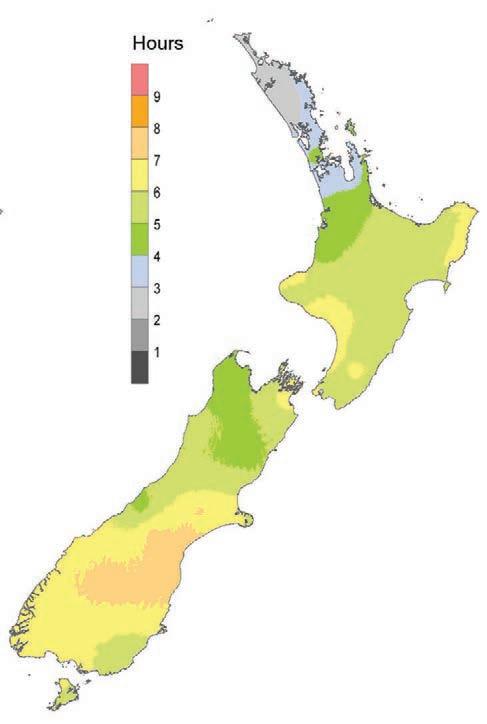




Most other regions have stayed about average with the West Coast a little drier than average in spots.
Soil moisture deficits are sitting fairly nicely compared to average, so no concerns there at the moment.

Through to early last week the upper North Island has been a bit cloudier than normal, this mainly the result once again of a low pressure system earlier this month. This should brighten a little when the next round of maps comes through.
Last week started with a front moving onto the South Island bringing rain to the West Coast and warm weather in the east. The front moved northwards on Tuesday but weakened. Eventually cloud and some drizzle moved up the eastern South Island later in the day.
The front straddled the North Island on Wednesday and Thursday with showers or patchy rain about. Rain out west may have become heavy in the afternoons thanks to some instability.
Rain or showers would have started to clear away on Friday, leaving a mainly settled weekend despite a large low offshore to the northeast.
The South Island has had high pressure since the middle of last week and this has mostly hung around with a front moving in on Sunday.
Monday through to Wednesday this week a southwesterly airflow lies over the country.
Observed rainfall

26/09/2022 to 9am 11/10/2022

A few fronts push through and these will deliver showers. There is some cold upper air around this time, so some instability could form on fronts for the South Island, bringing the chance of an isolated heavy fall or two and maybe thunder.
Observed daily average bright sunshine 26/09/2022 to 10/10/2022

Wednesday starts to see an anticyclone shunting in over the South Island.
This then spreads to the North Island on Thursday. Friday and the weekend look dry and settled with an anticyclone in control.
THE PROFESSIONAL’S CHOICE
DARCY FINCH OF FINCH CONTRACTING TALKS ABOUT CLAAS GRASS HARVESTING EQUIPMENT

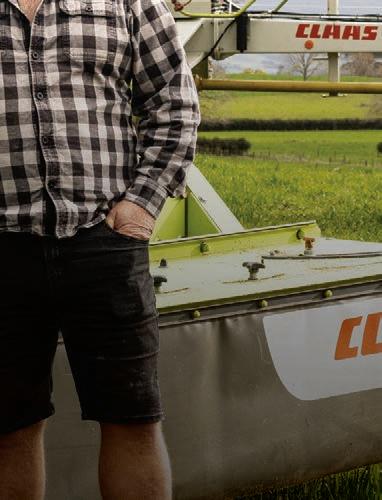

Running a big contracting business in the heartland of Waikato, with a peak staff of 45 comes with a fair amount of pressure. But for Darcy that pressure is mitigated by having gear that handles not only the huge volume, but the wide range of environments and contours.
Grass harvesting makes up a significant part of the Finch business, so having CLAAS machinery that is fit for purpose and has high market share is key.




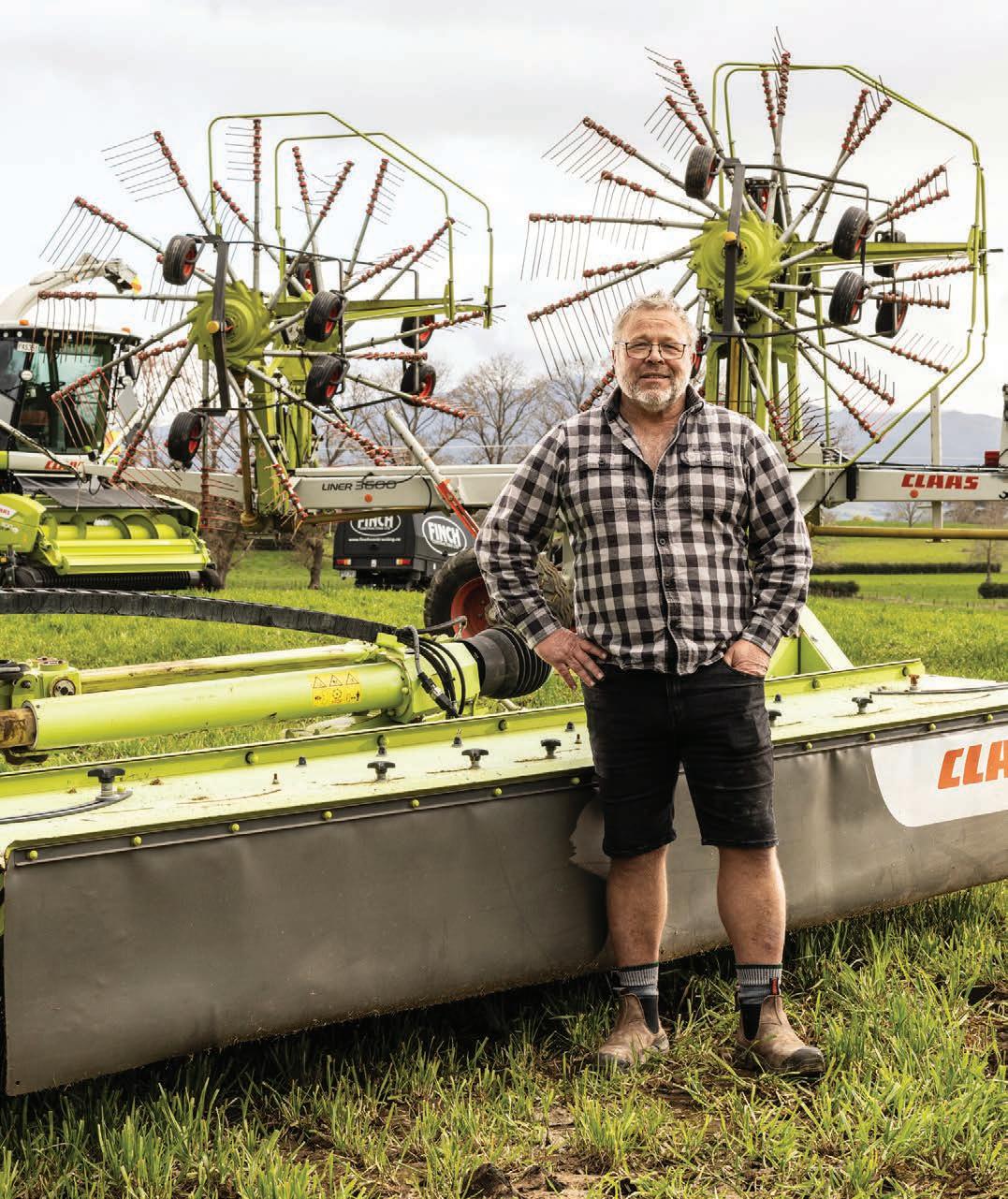 CLAAS DISCO MOWER
CLAAS LINER RAKECLAAS VOLTO TEDDER
CLAAS DISCO MOWER
CLAAS LINER RAKECLAAS VOLTO TEDDER
For
your local dealer go to:
claasharvestcentre.com LAN 2464 DARCY
FINCH Finch Contracting
“
CLAAS GEAR IS RELIABLE AND THE SERVICE TEAM IS ALWAYS THERE WHEN WE NEED THEM. ”
64 Weather
ruralweather.co.nz
9am
Deficit 9am 11/10/2022
Last 15 days rainSoil moisture Last 15 days sun










































































































































































































 Neal Wallace NEWS Research & innovation
Neal Wallace NEWS Research & innovation






































































































































































































































































































































 Kevin Deane Real Estate
Kevin Deane Real Estate


































































































 CLAAS DISCO MOWER
CLAAS LINER RAKECLAAS VOLTO TEDDER
CLAAS DISCO MOWER
CLAAS LINER RAKECLAAS VOLTO TEDDER